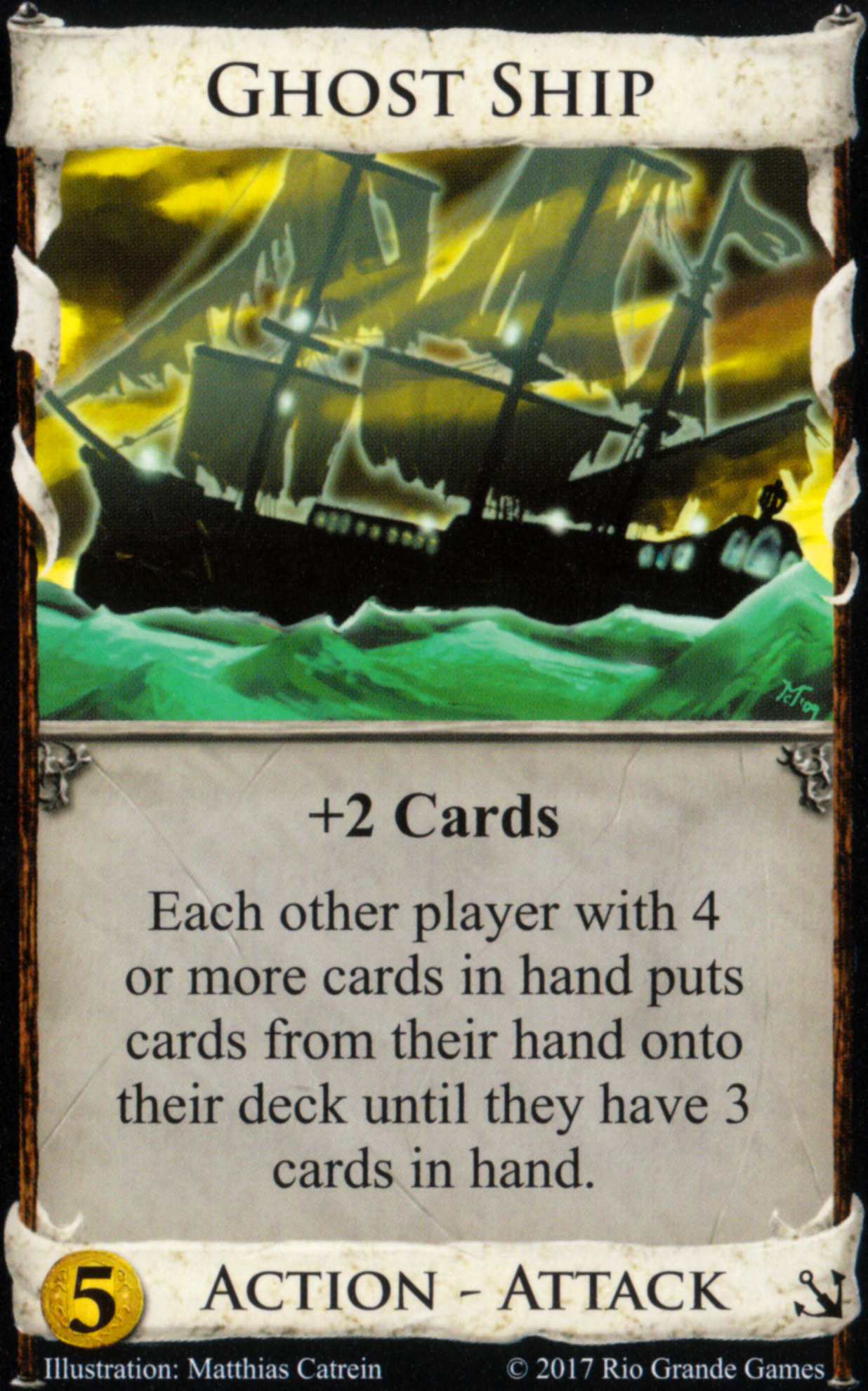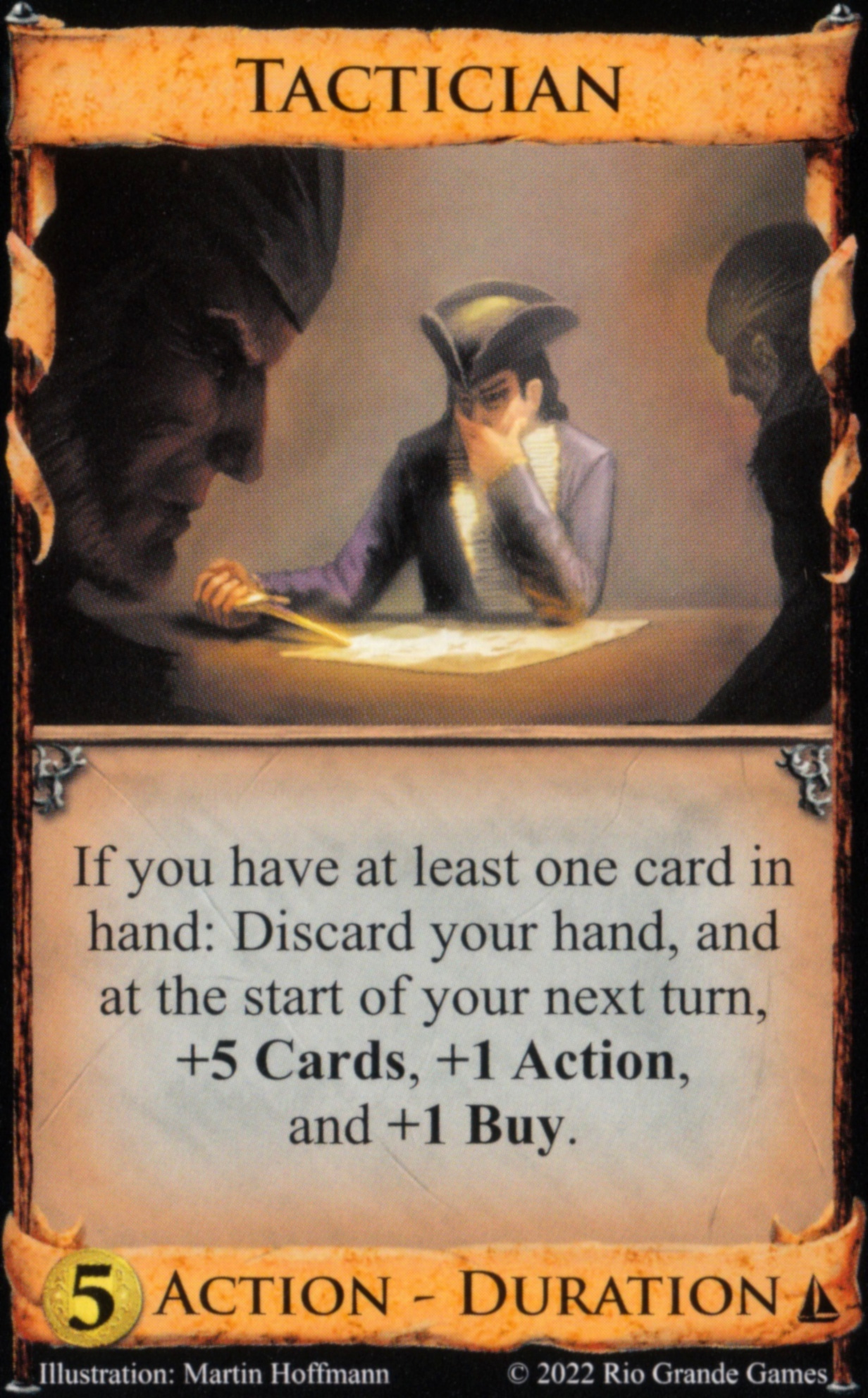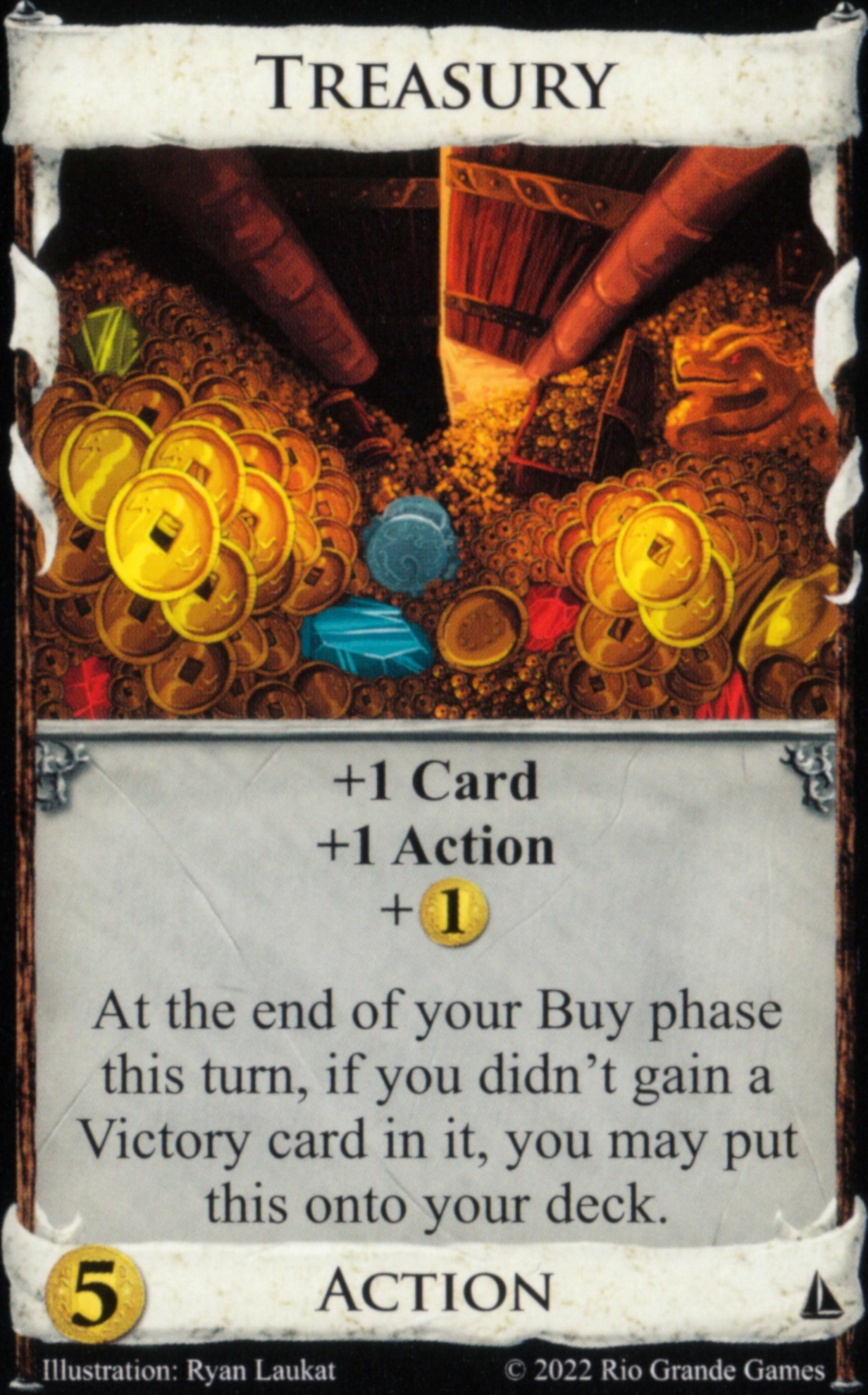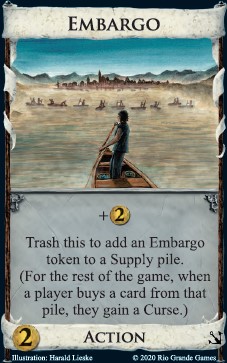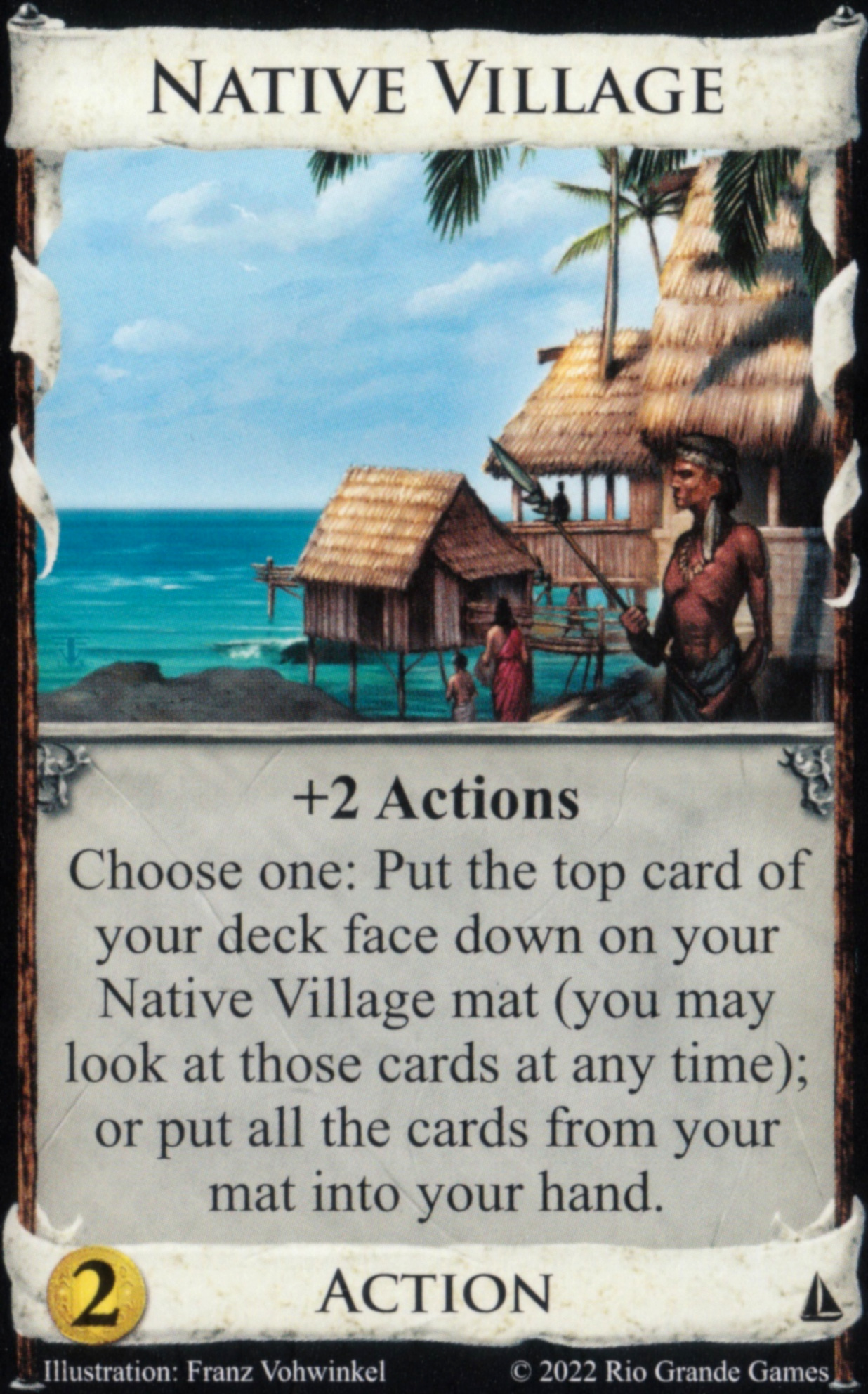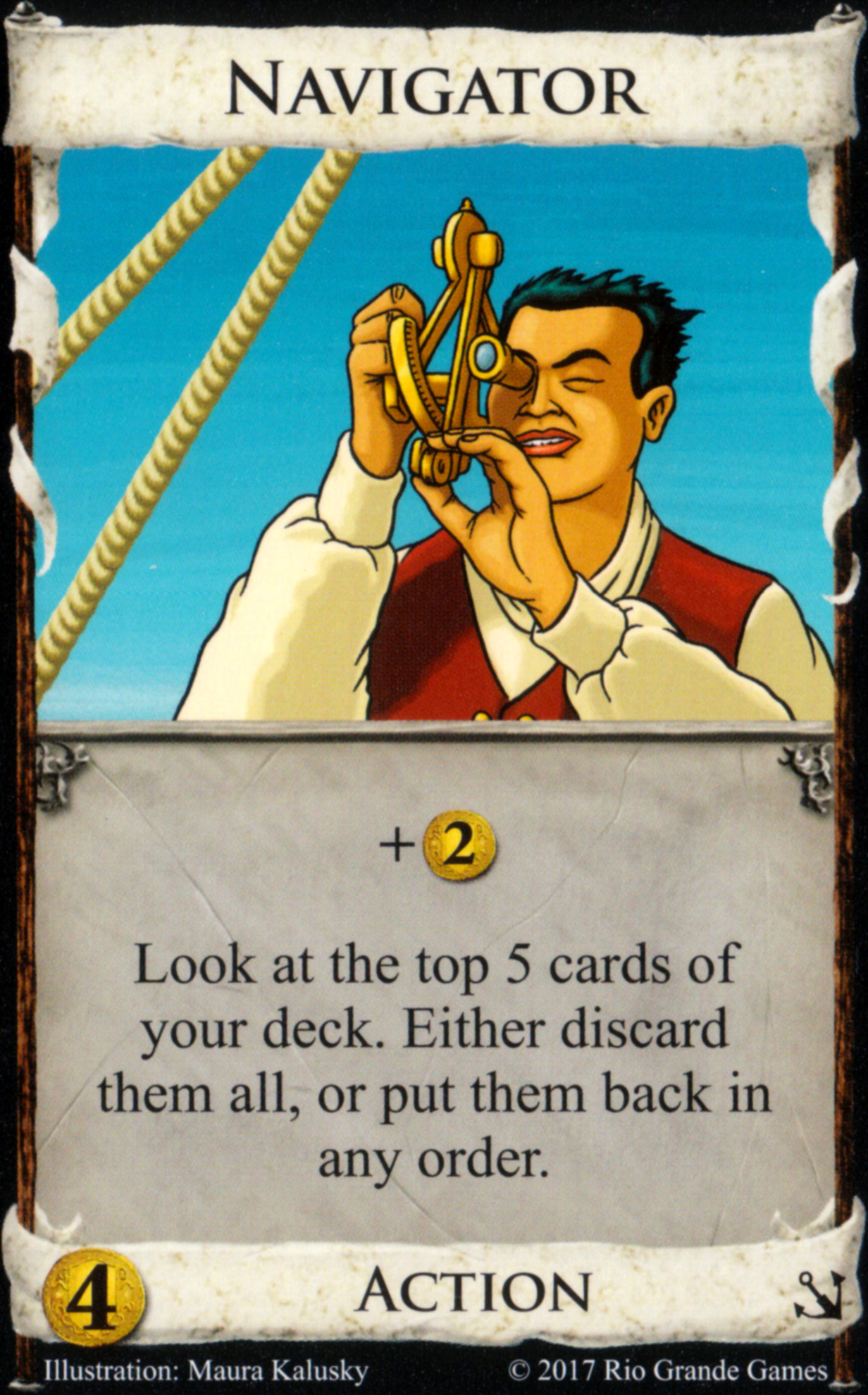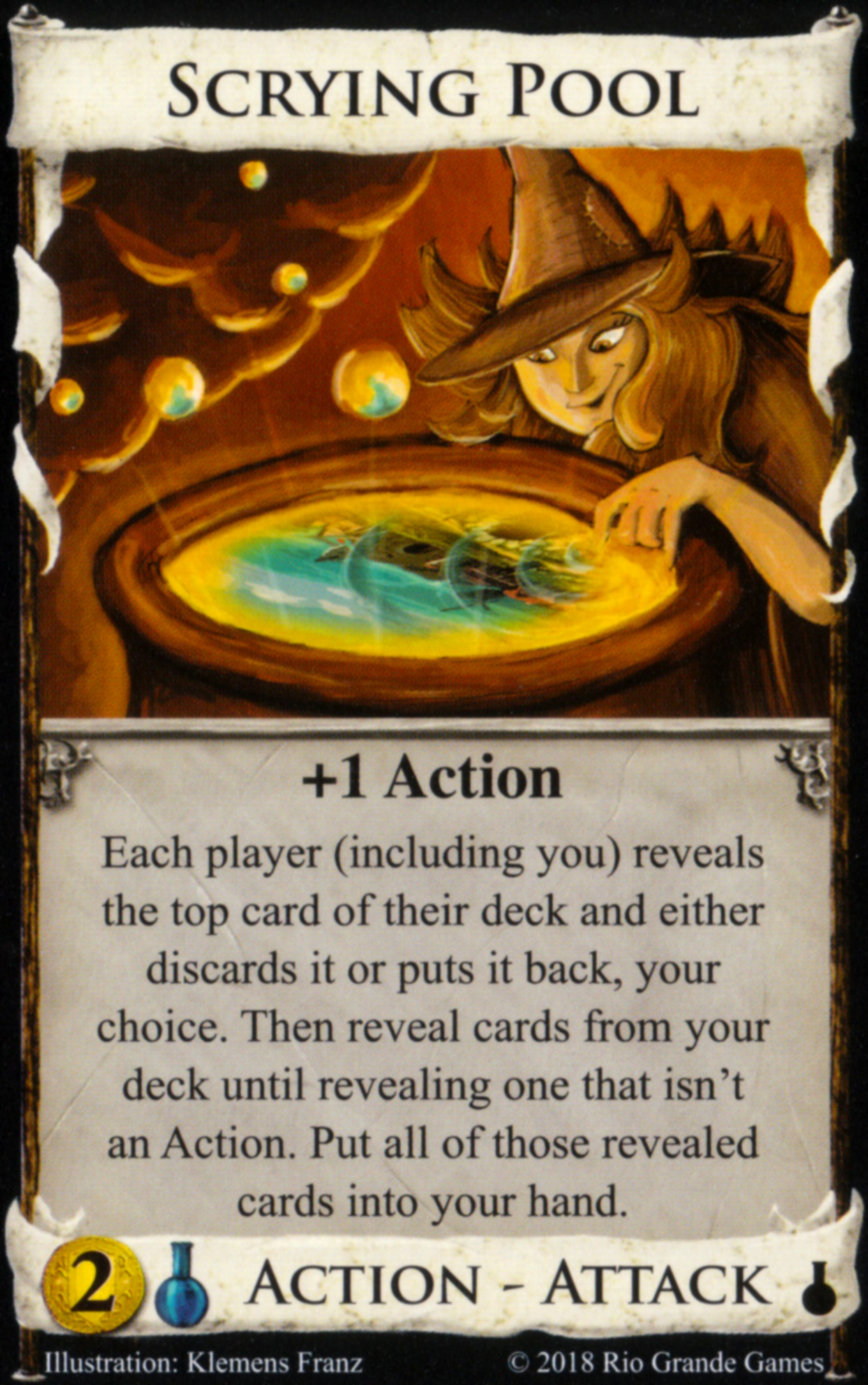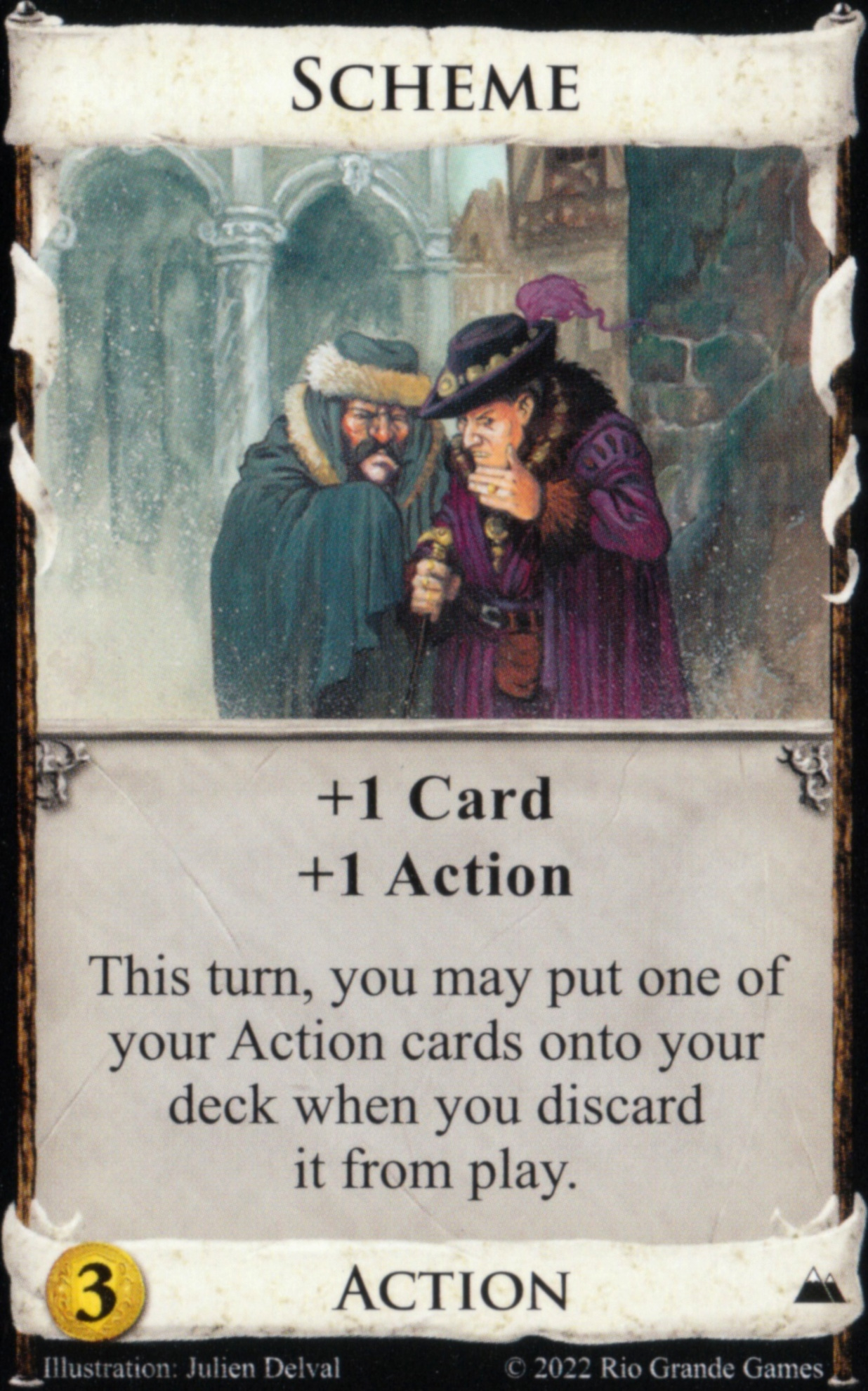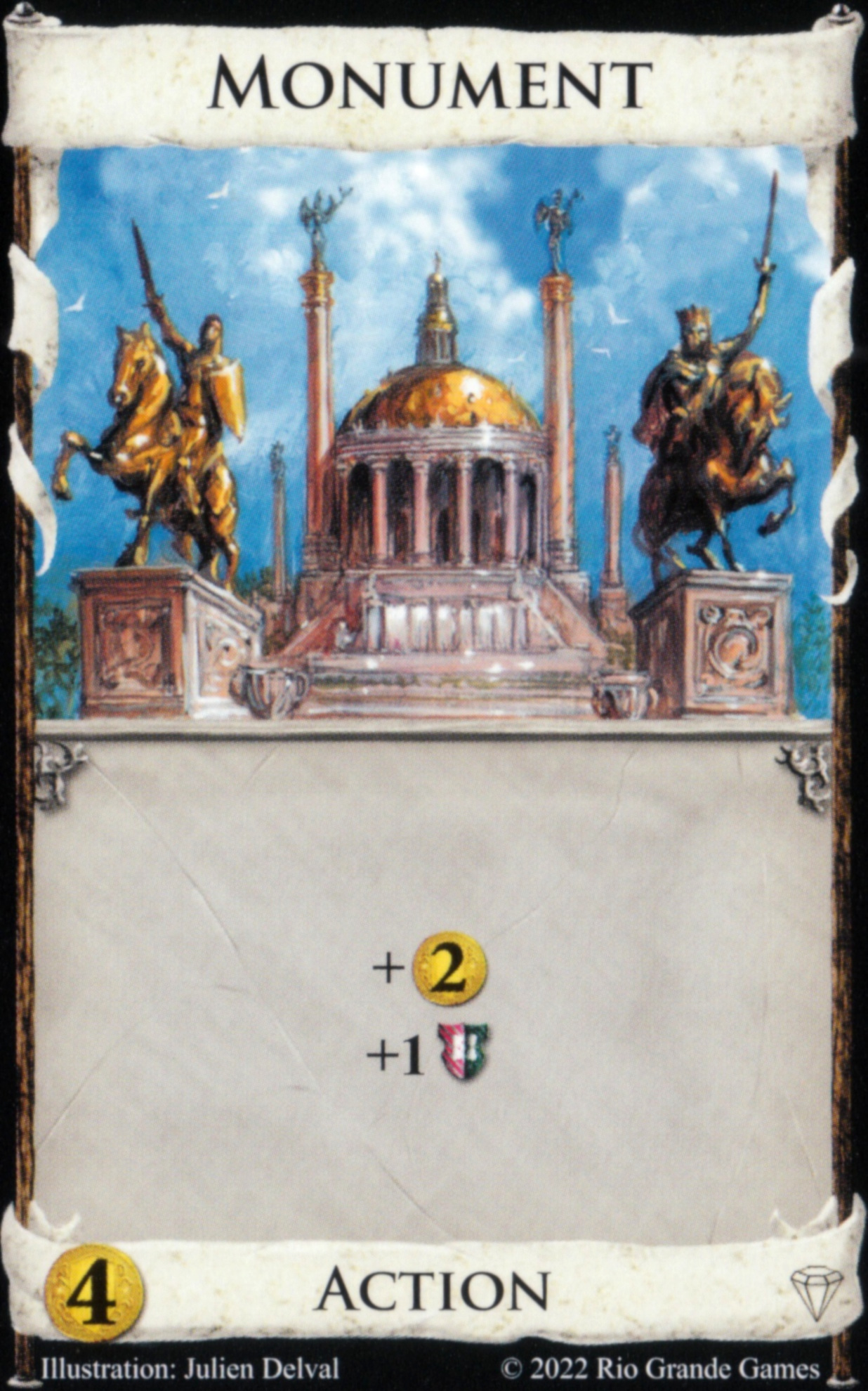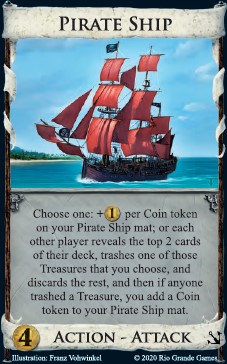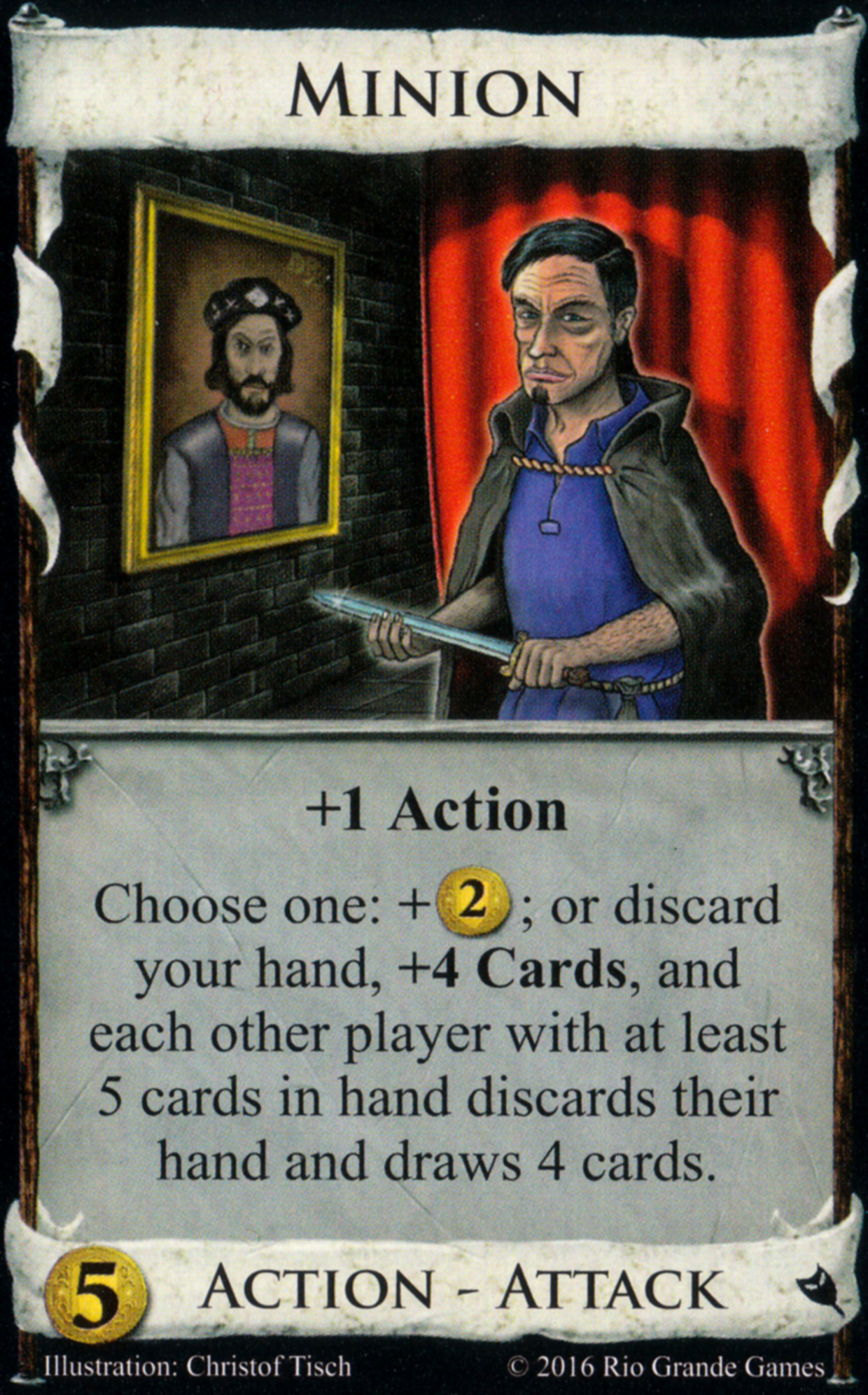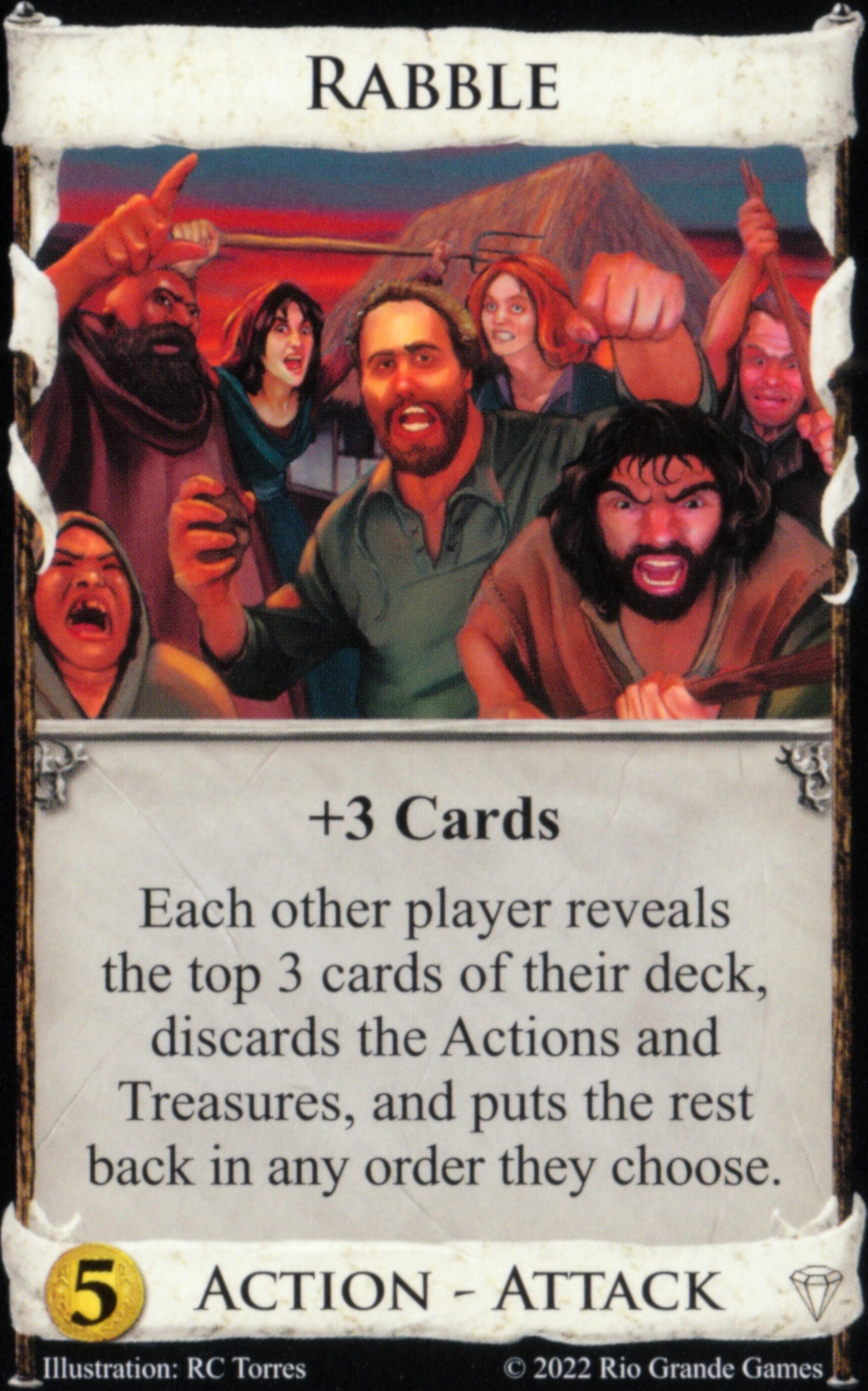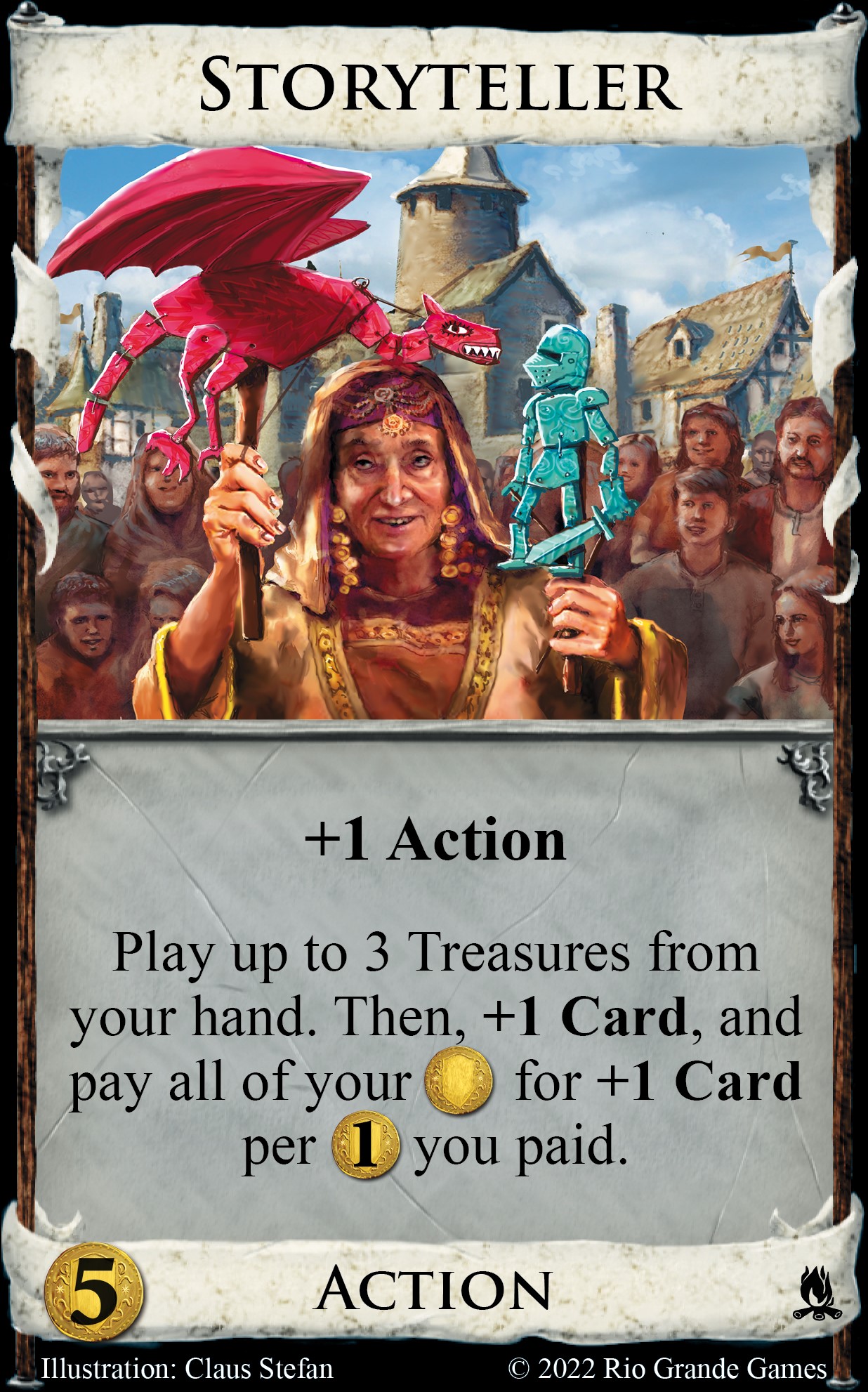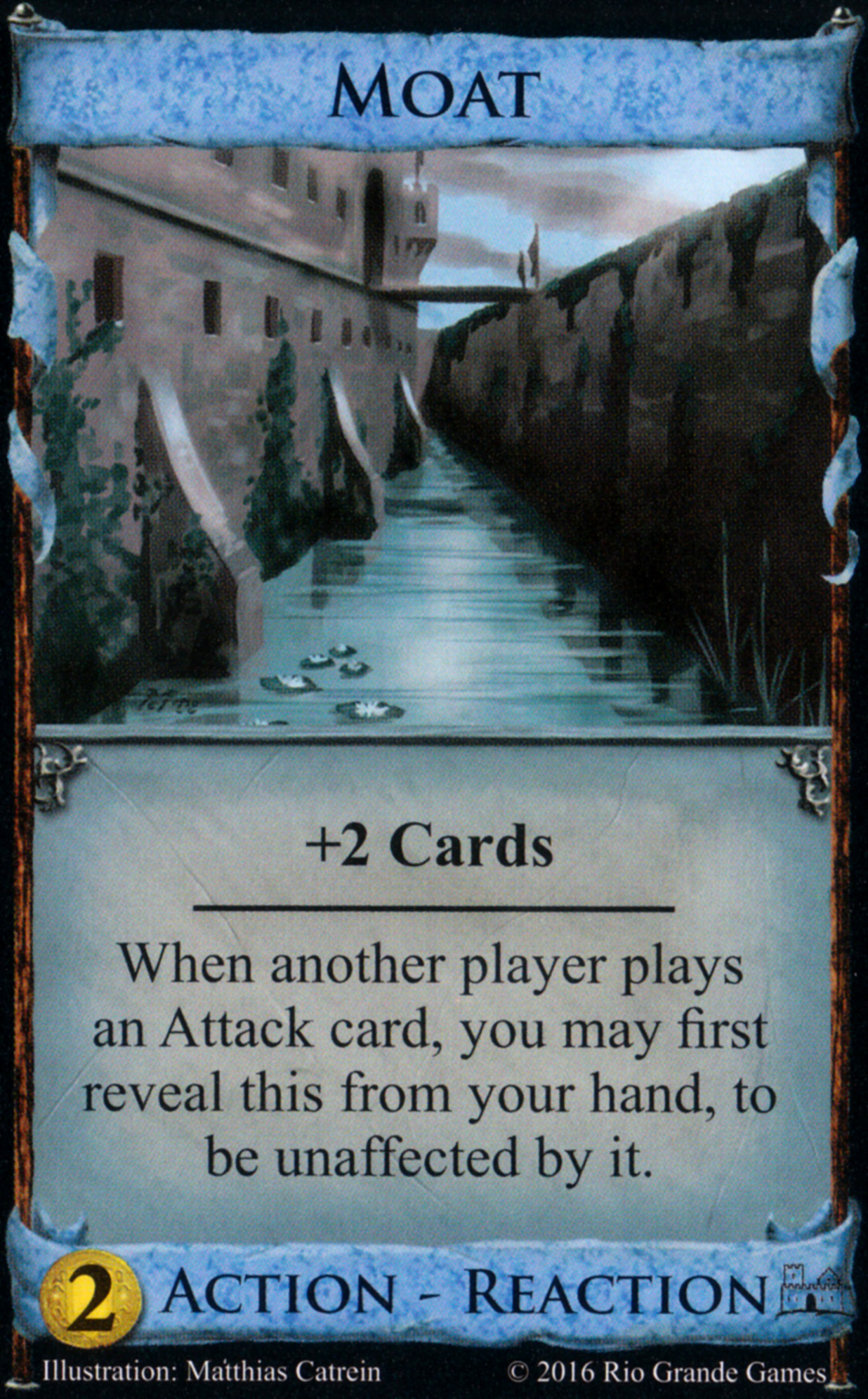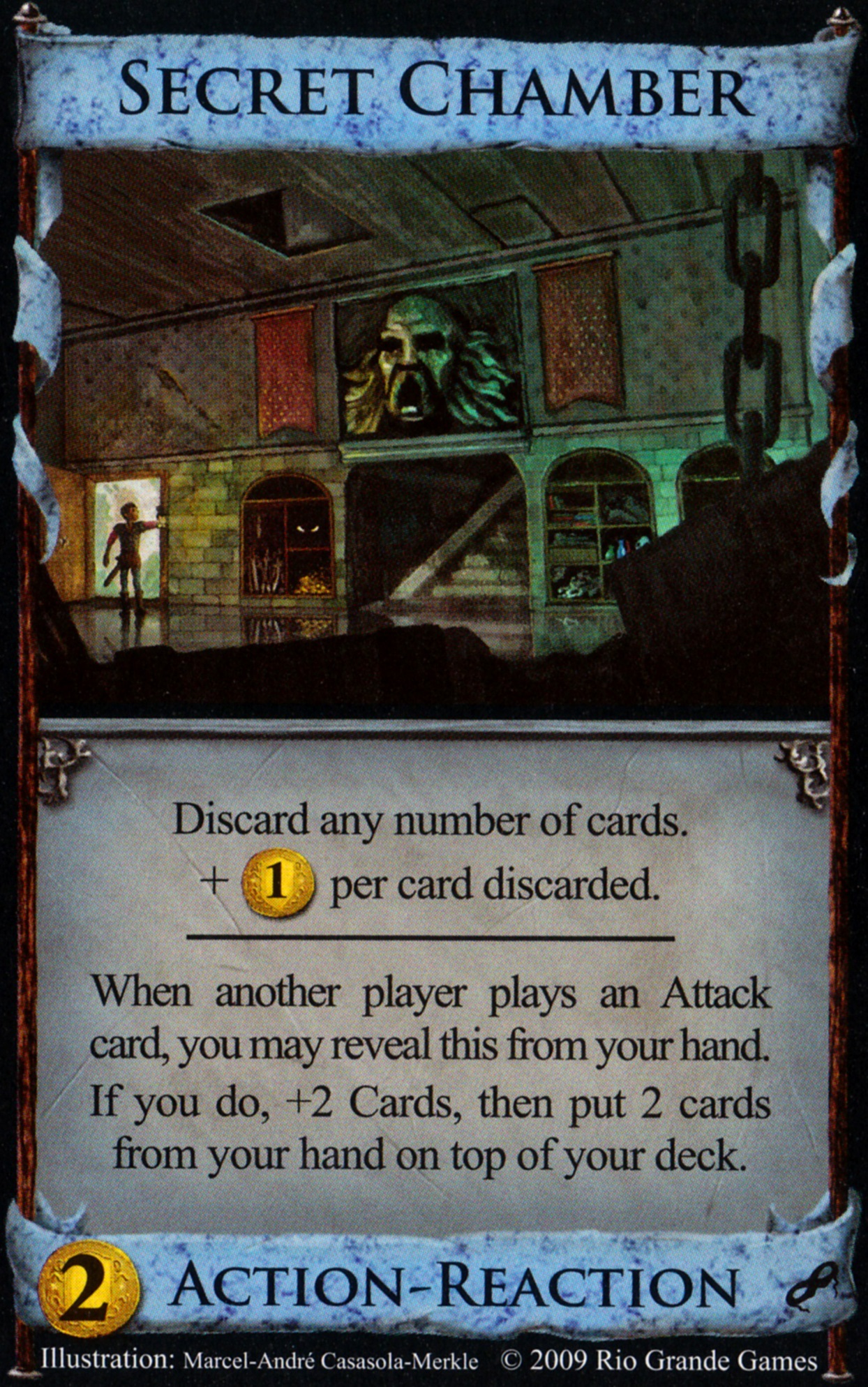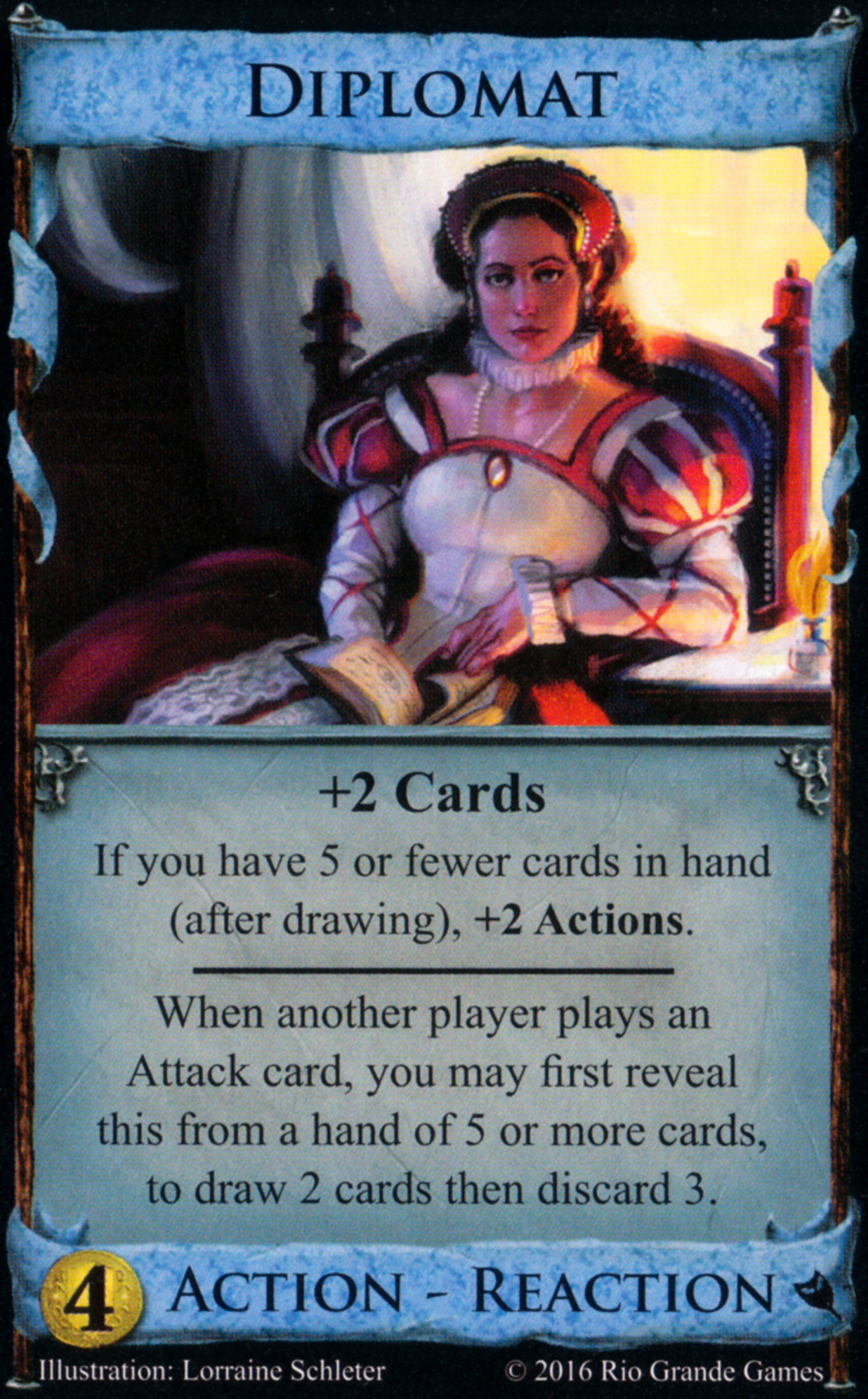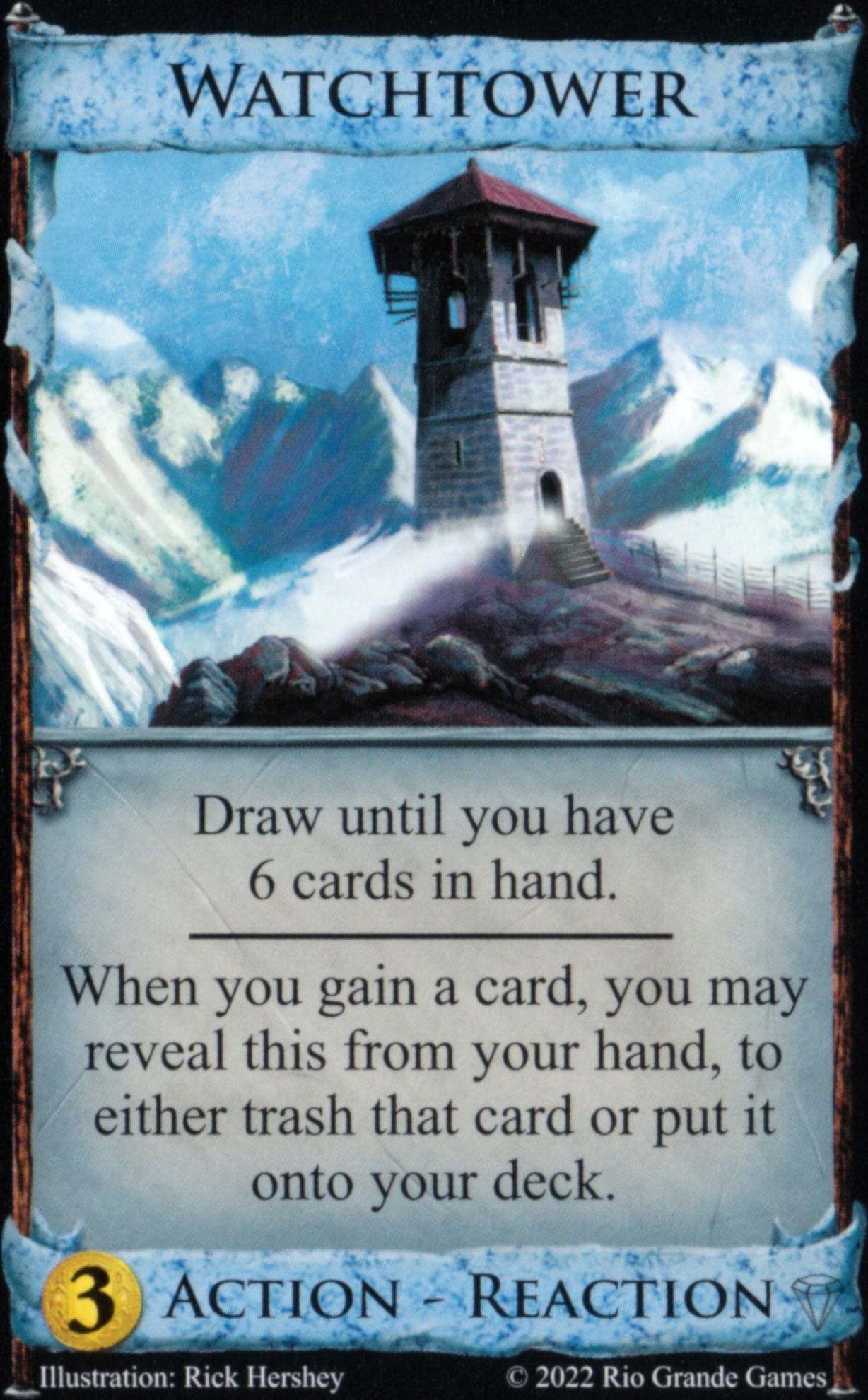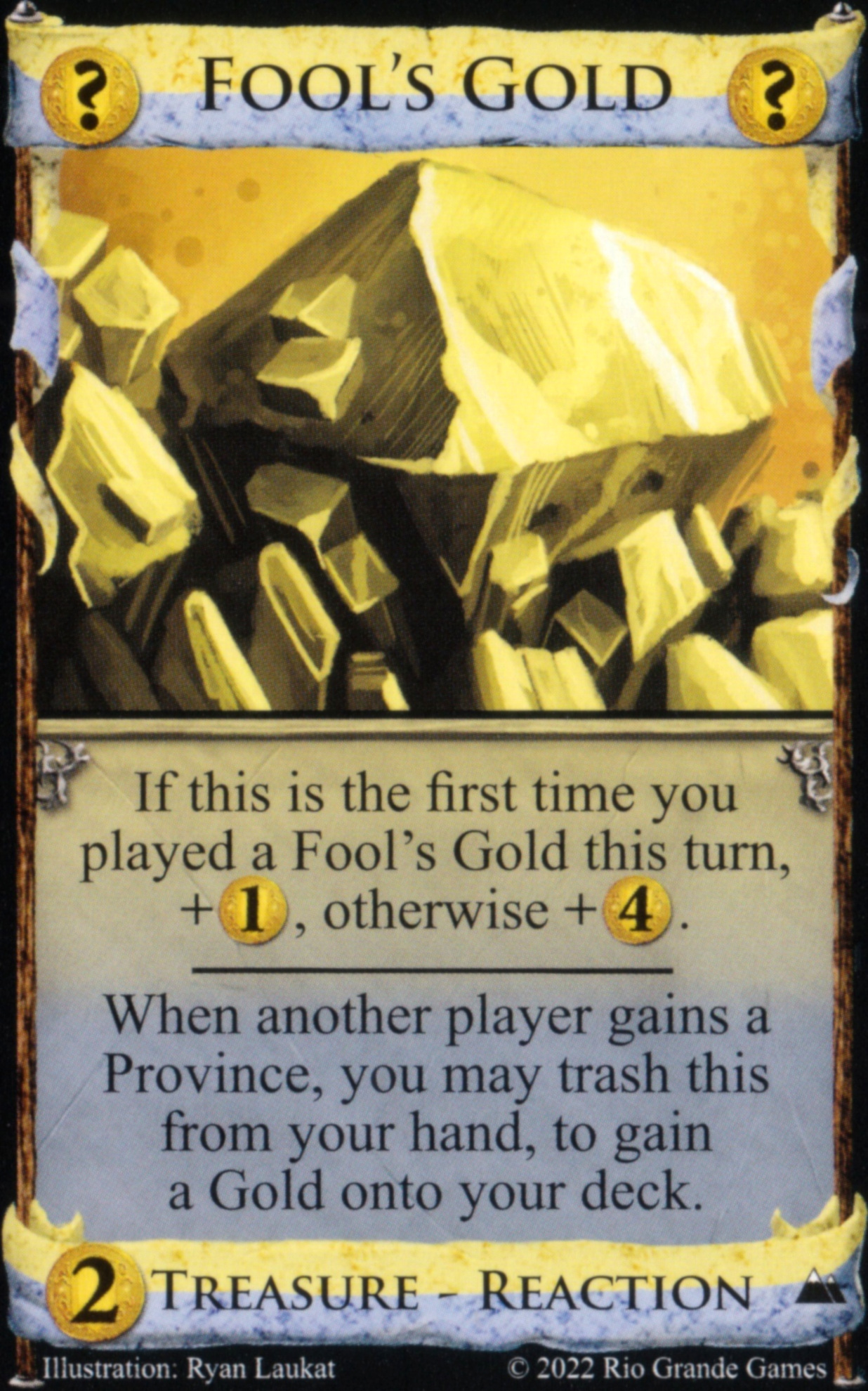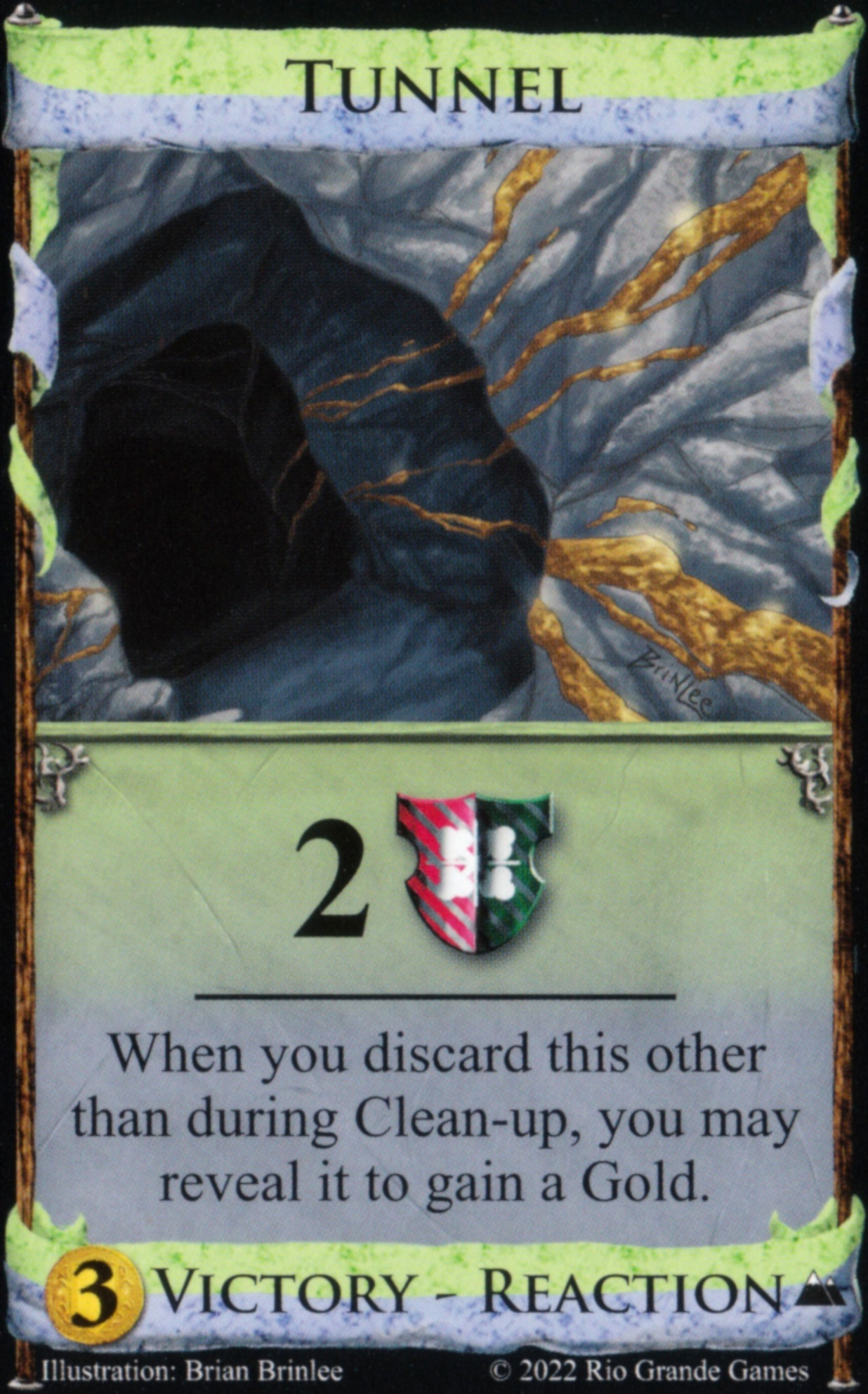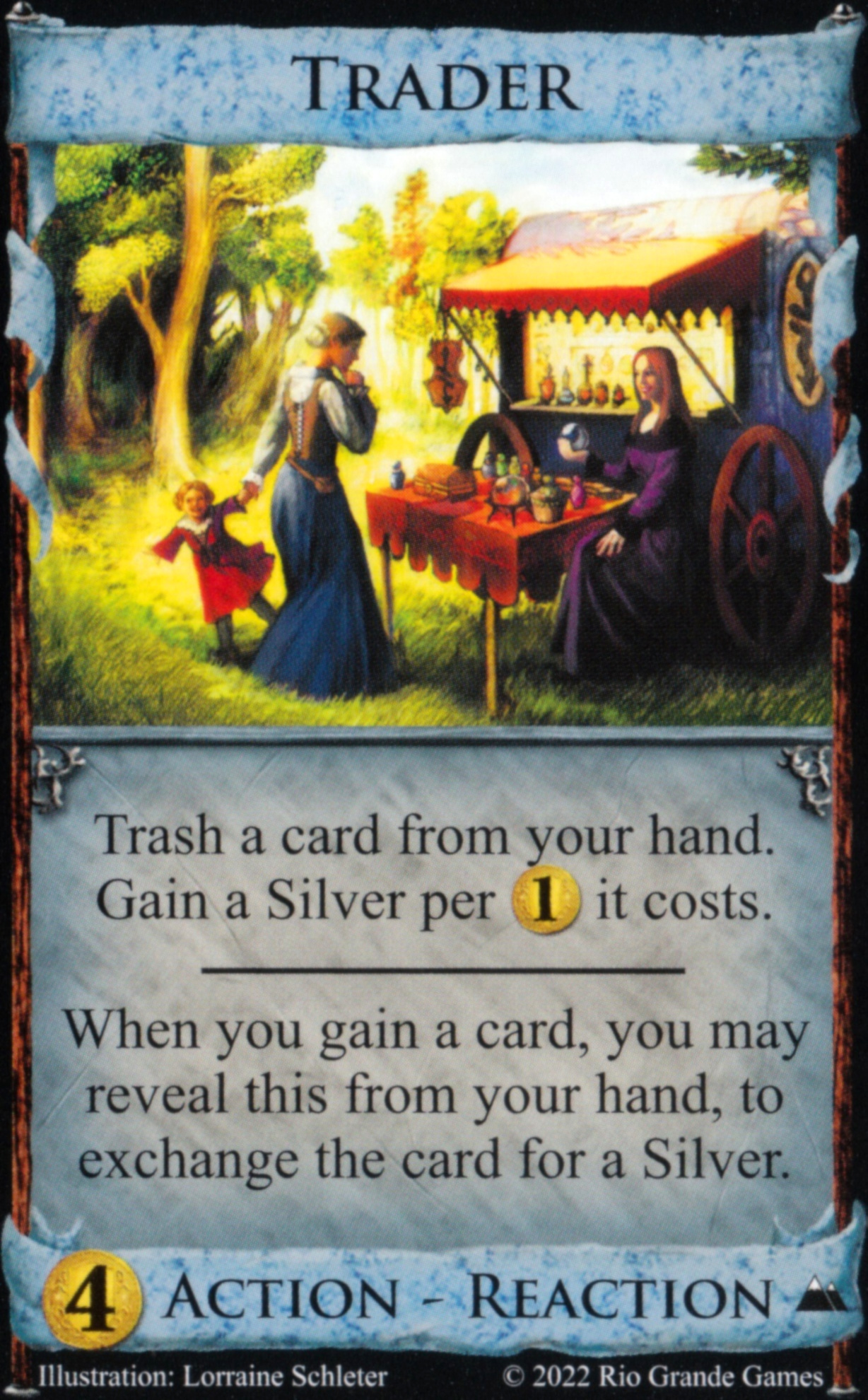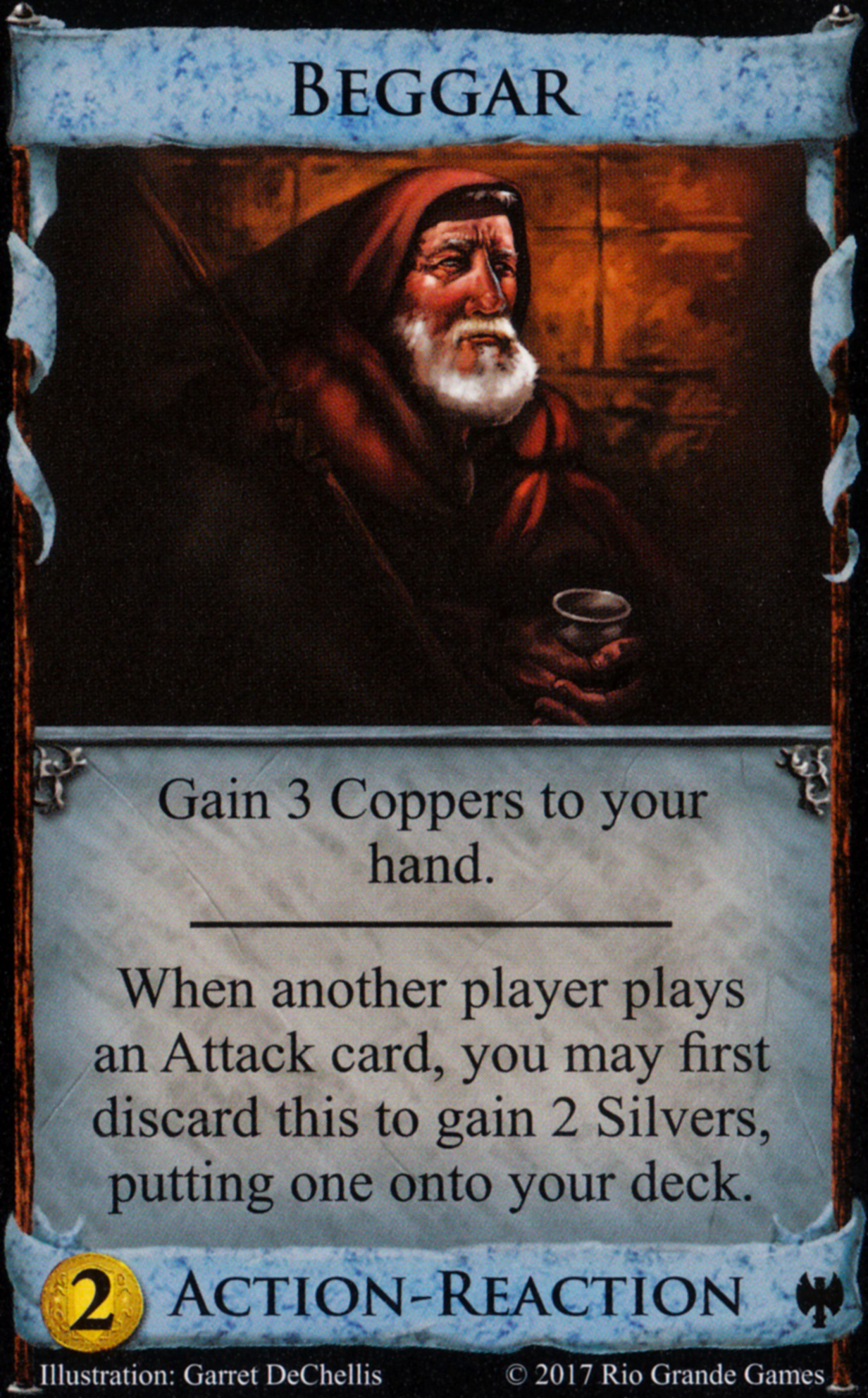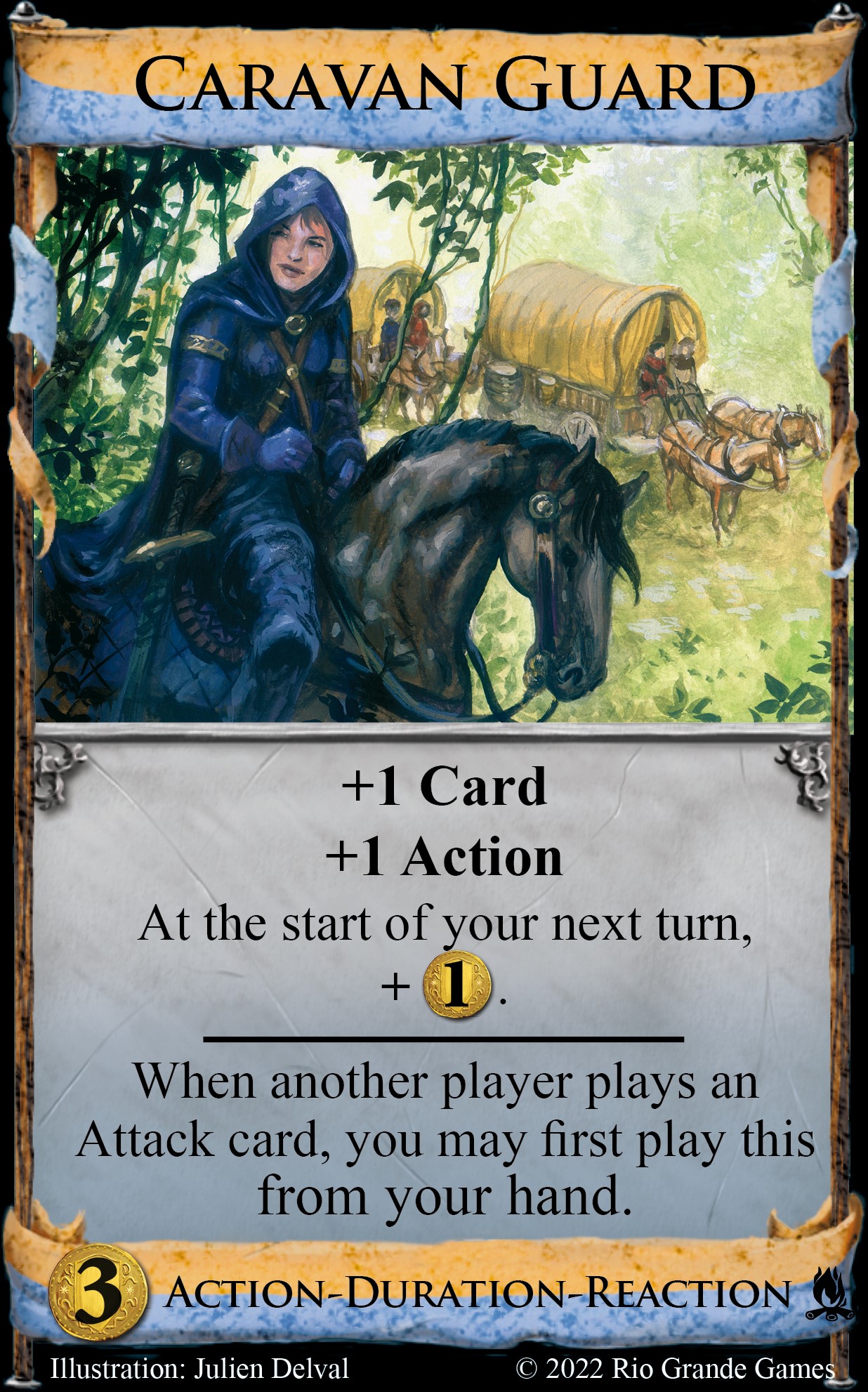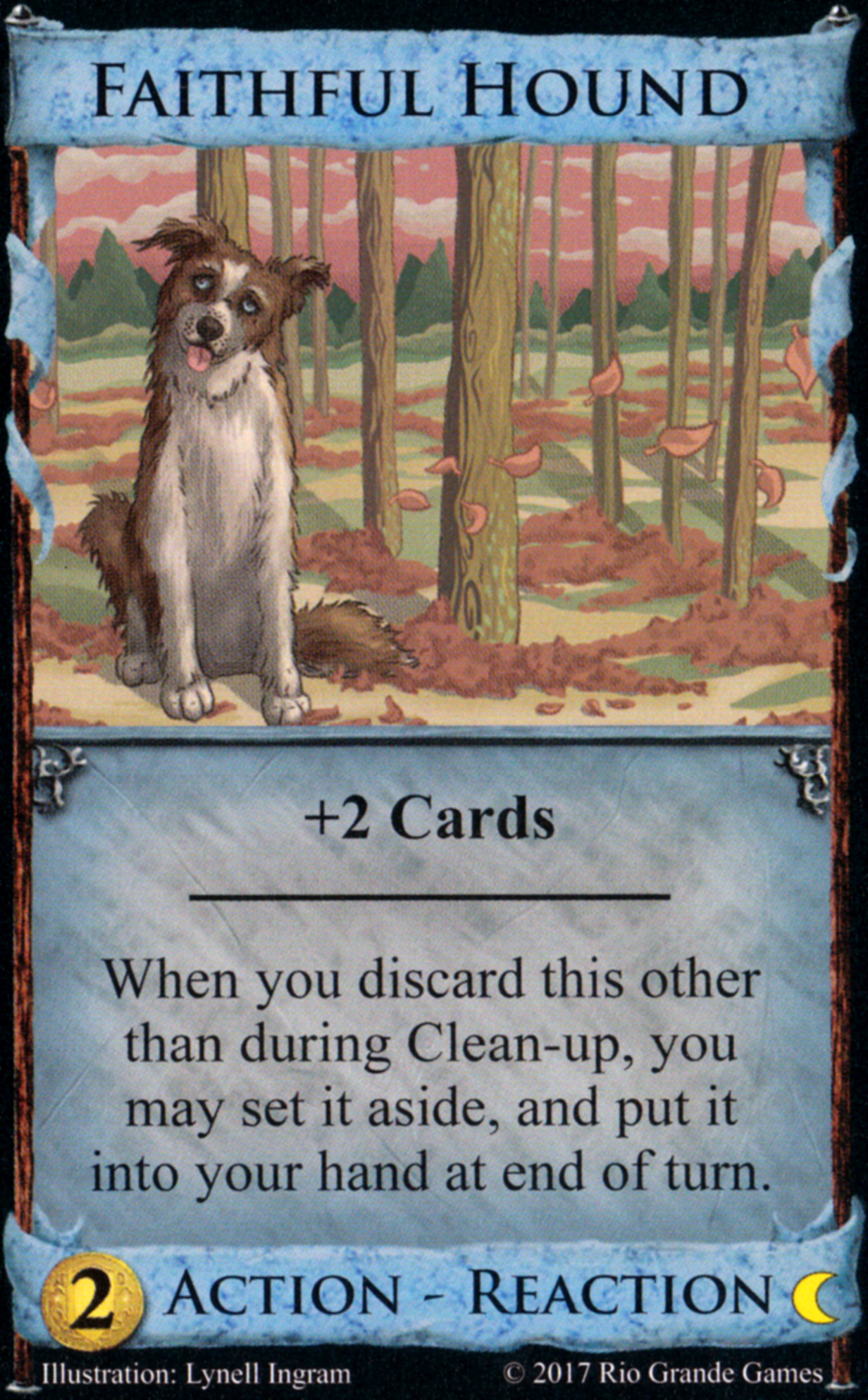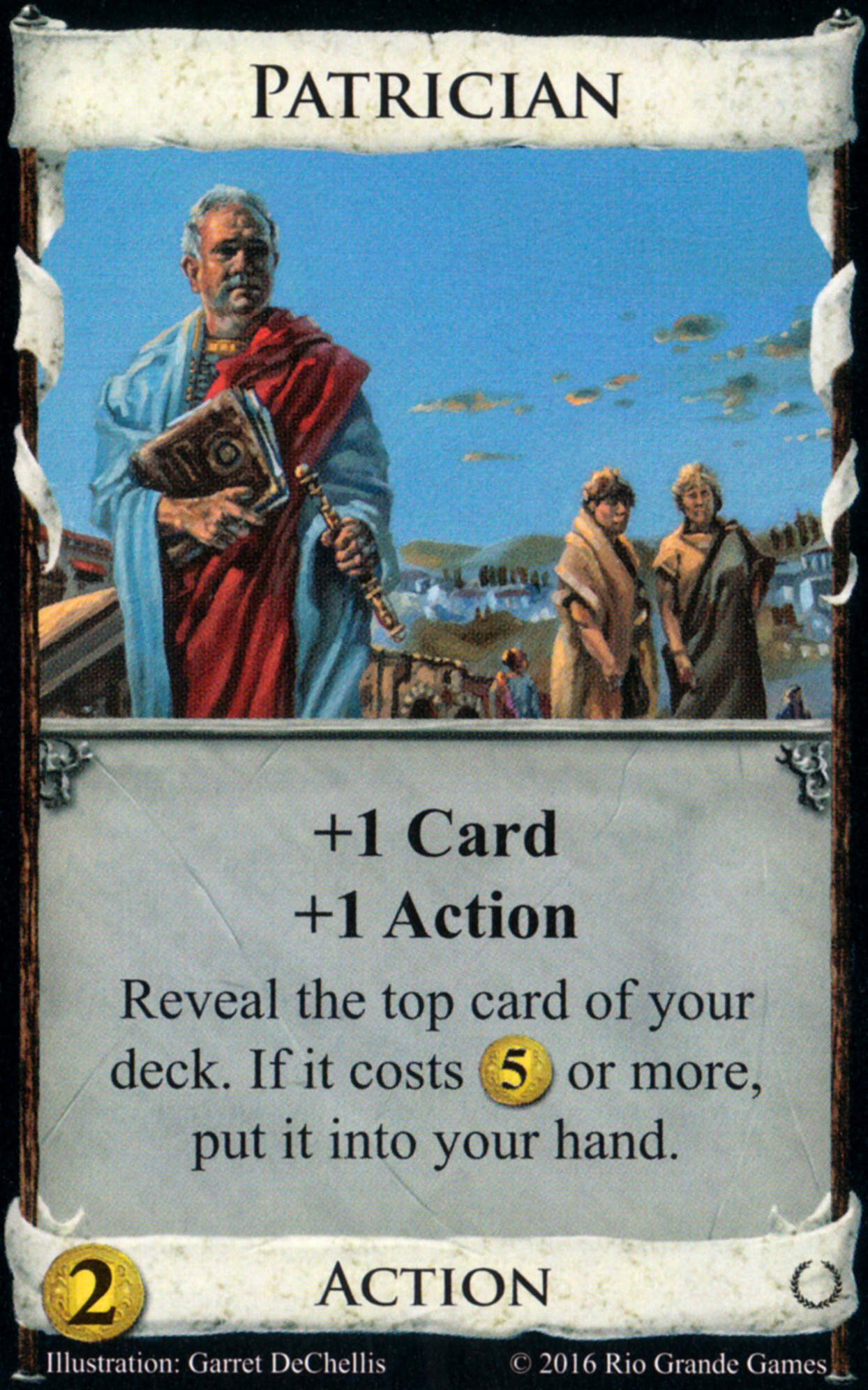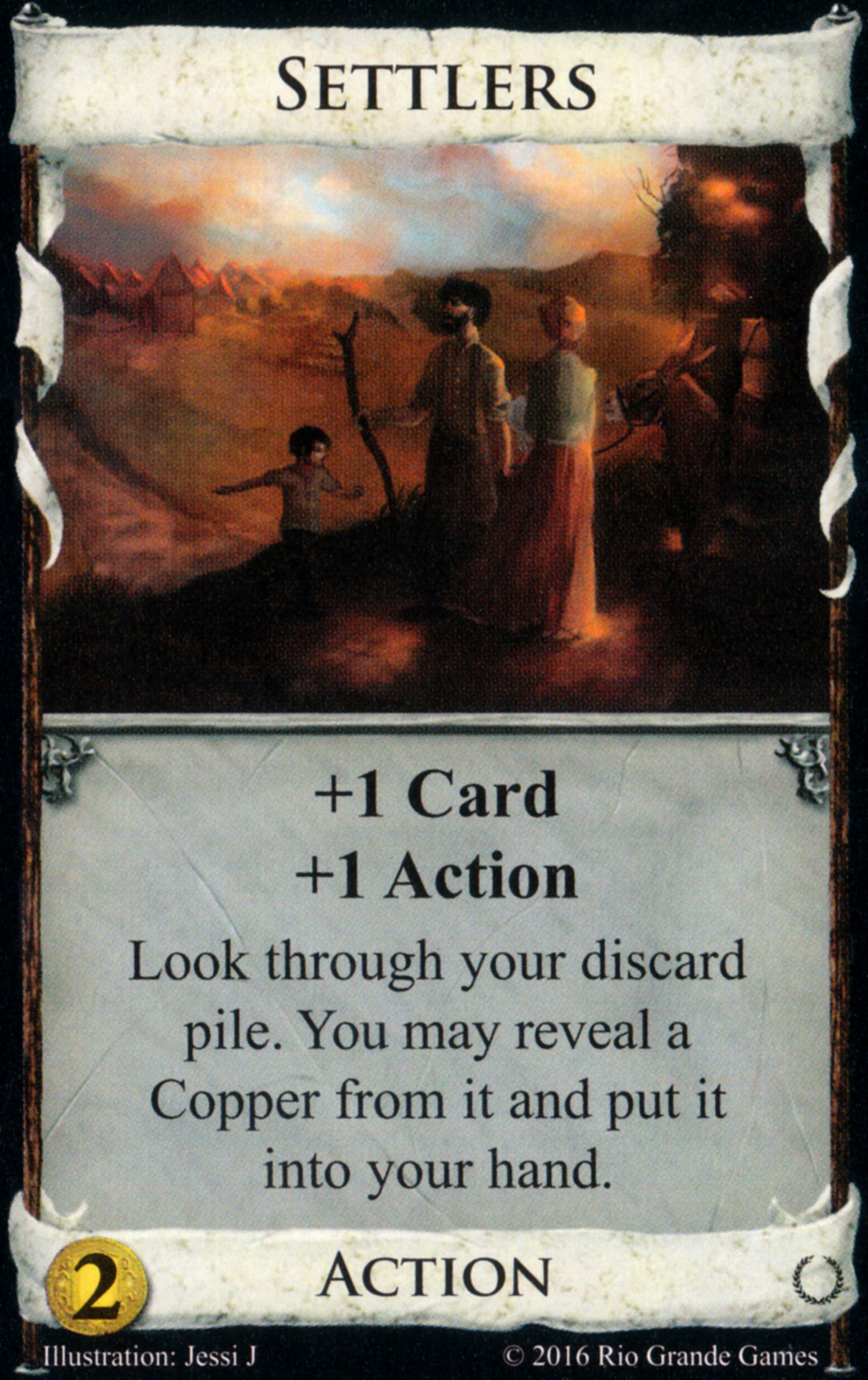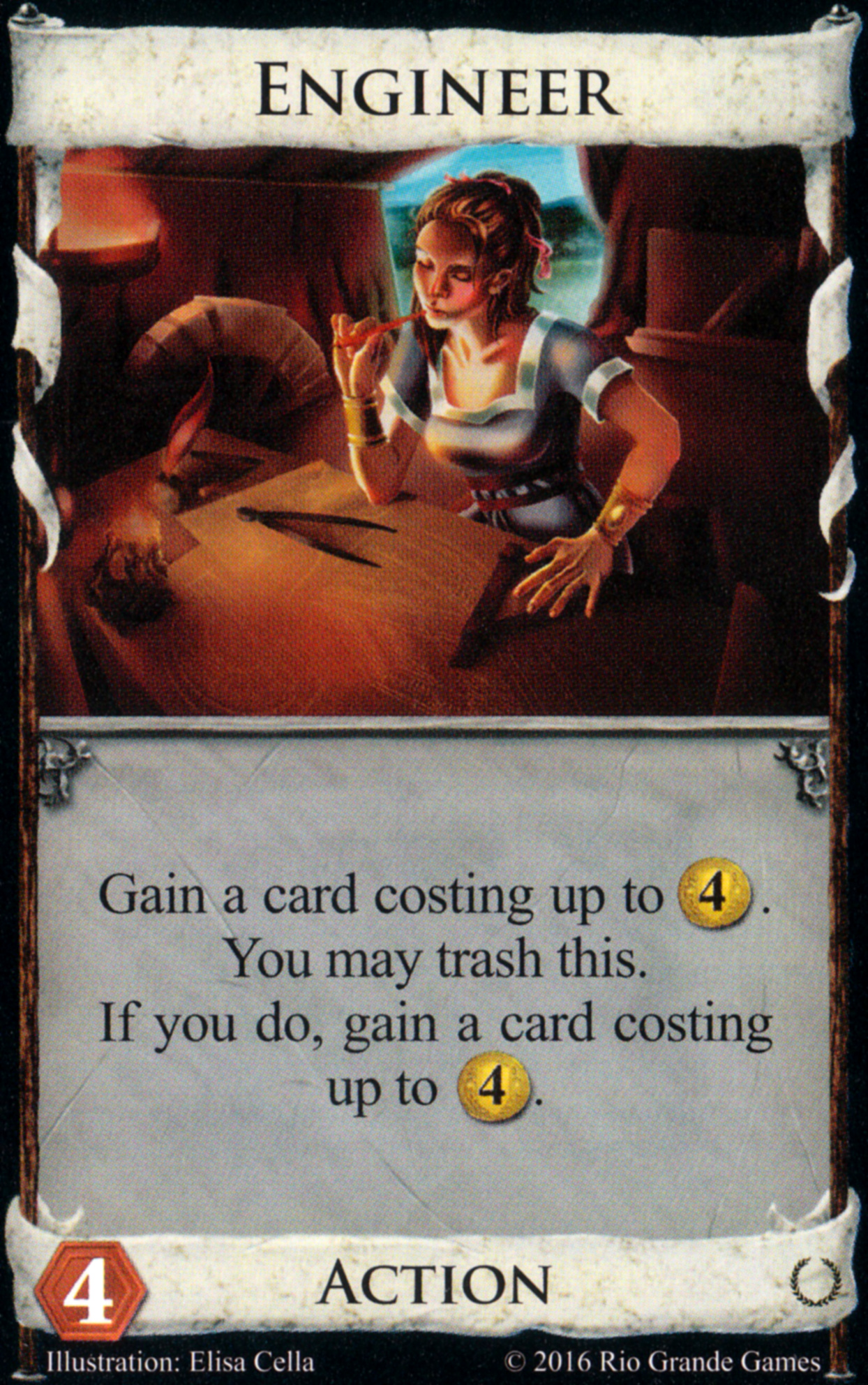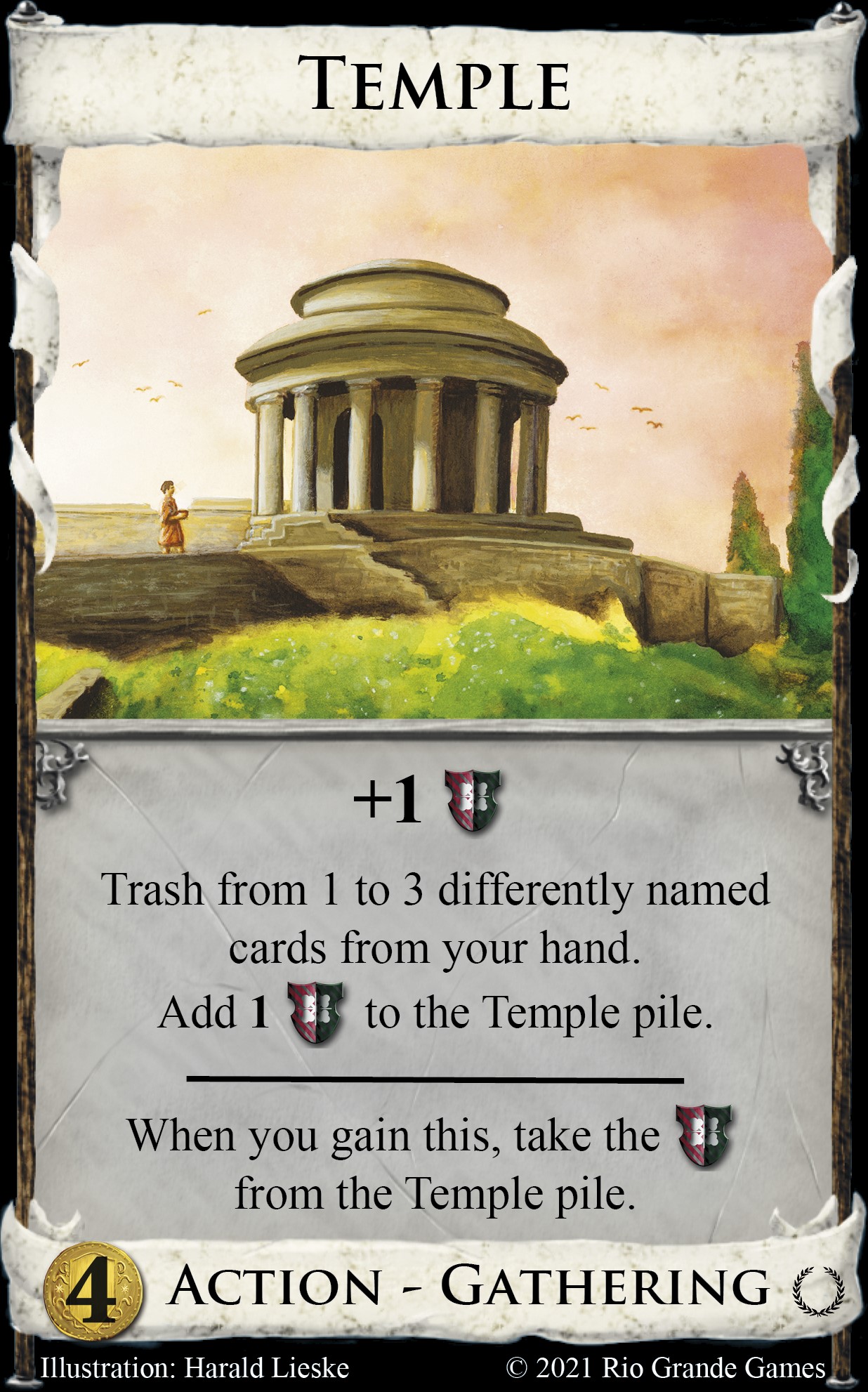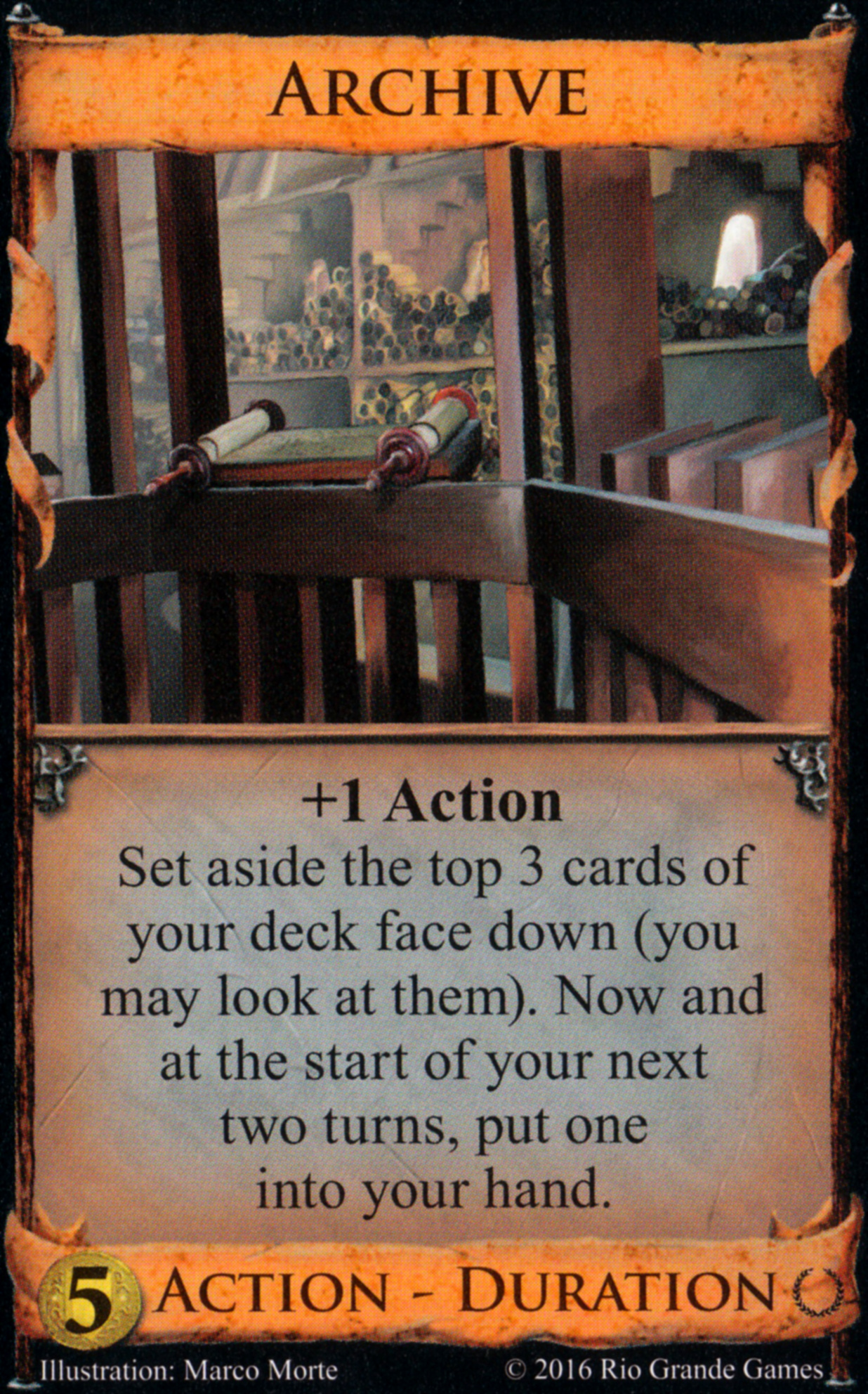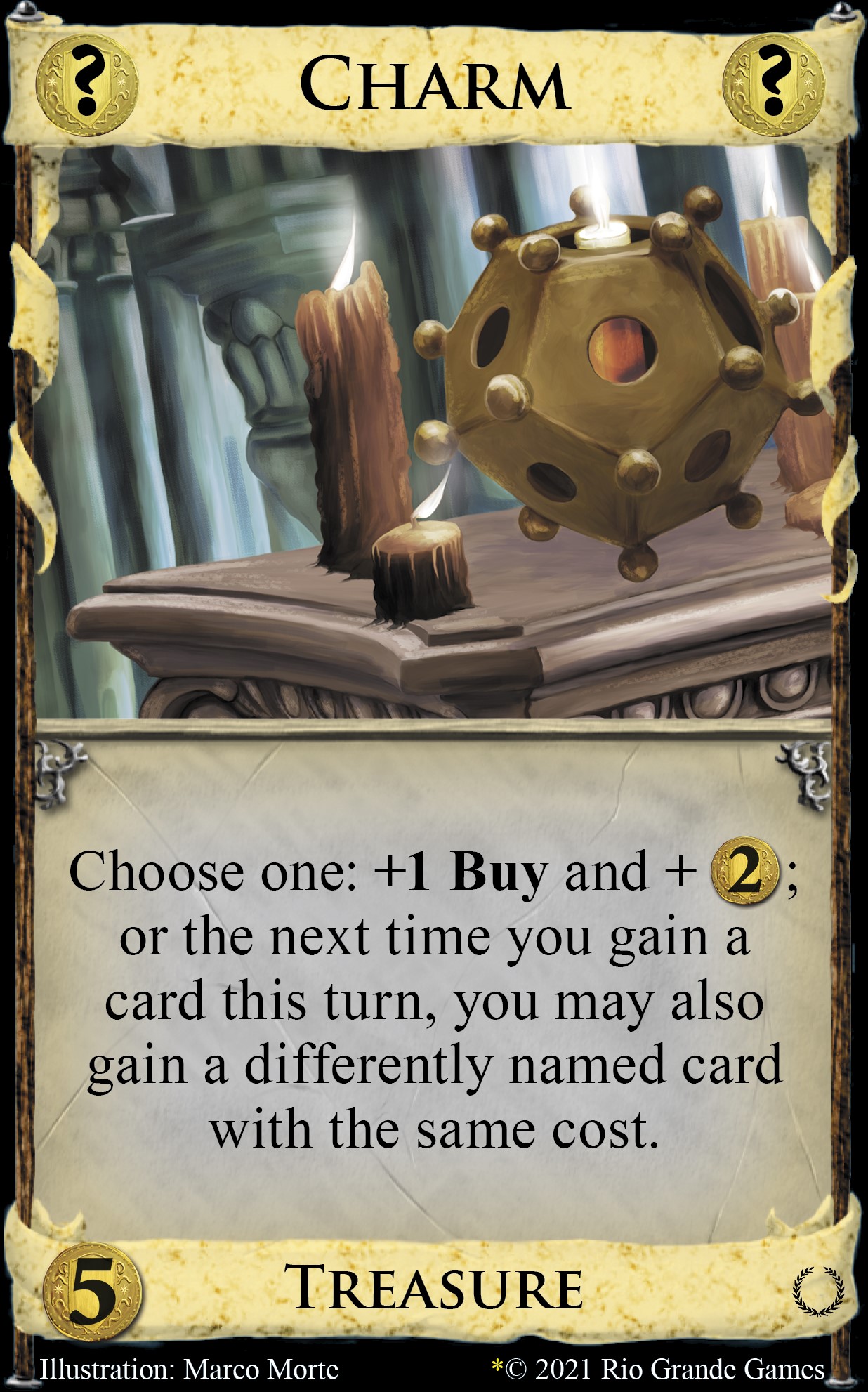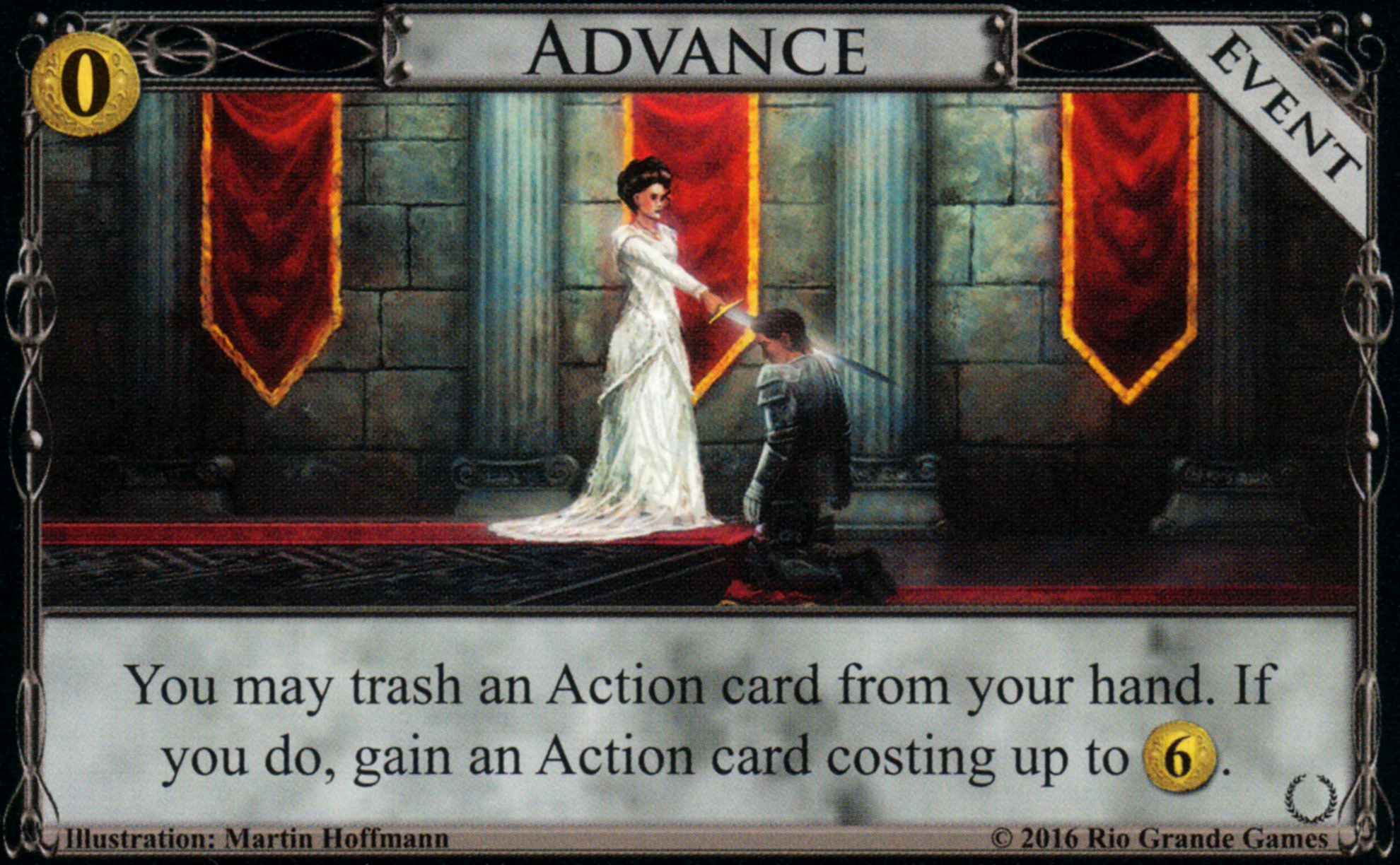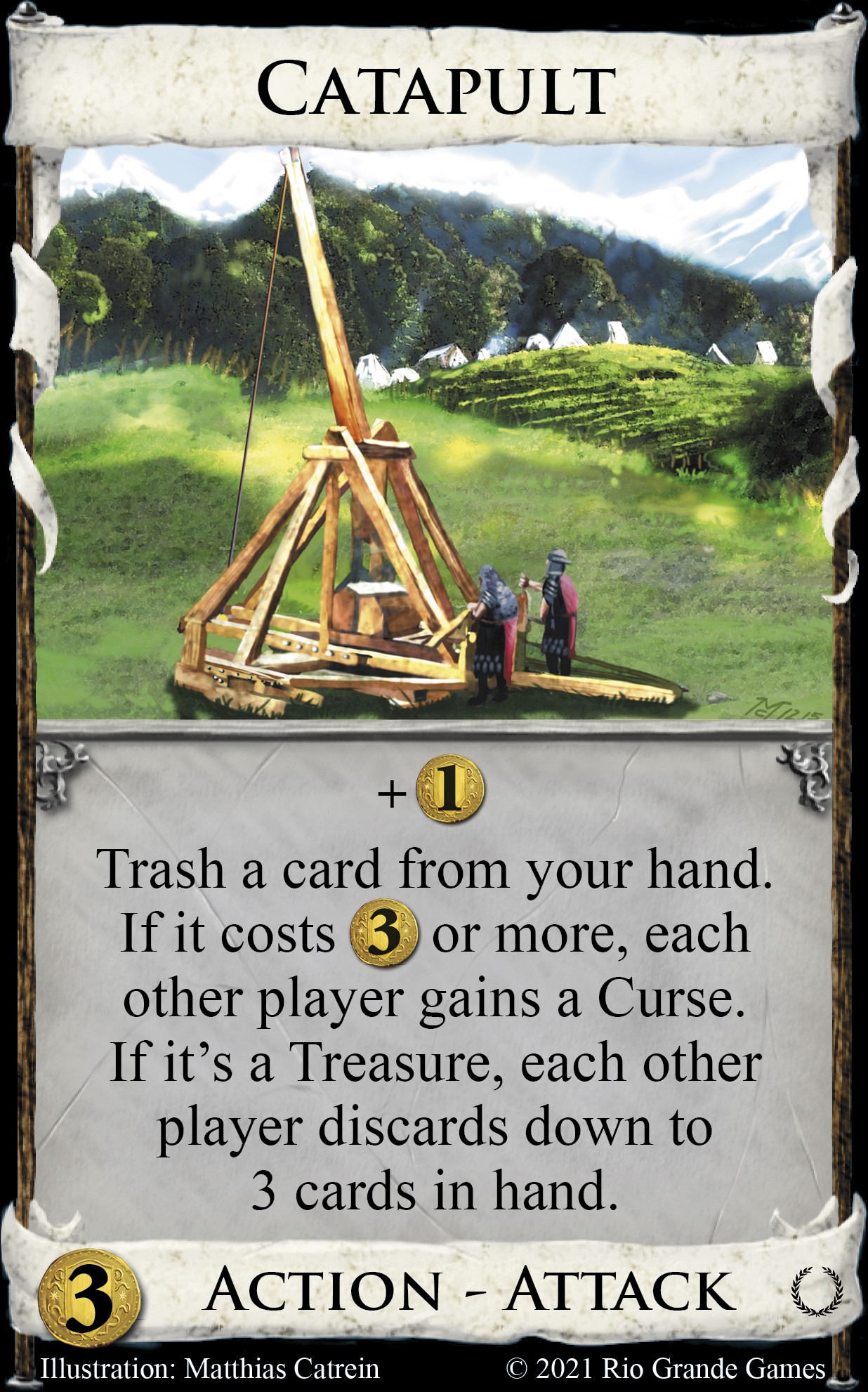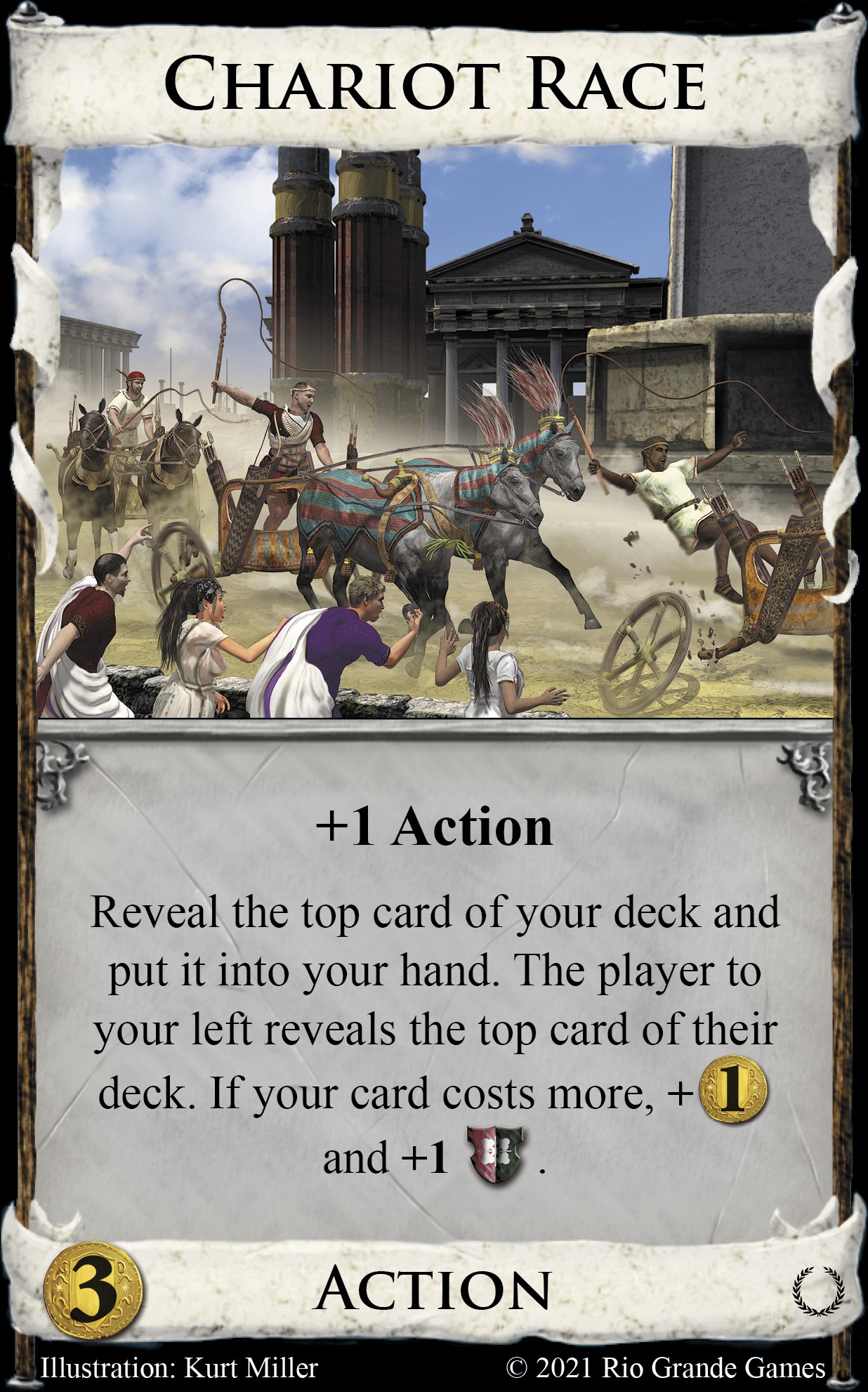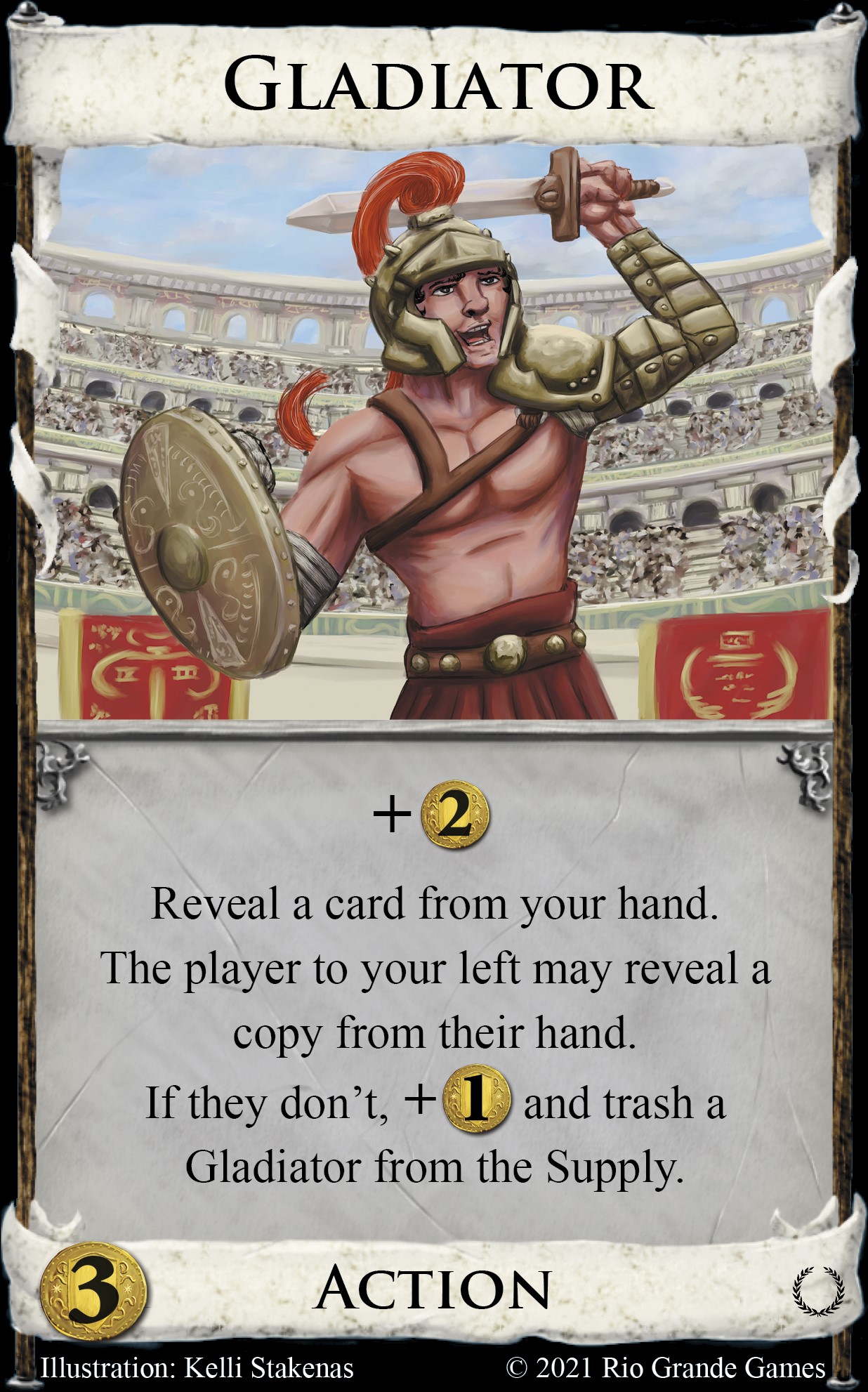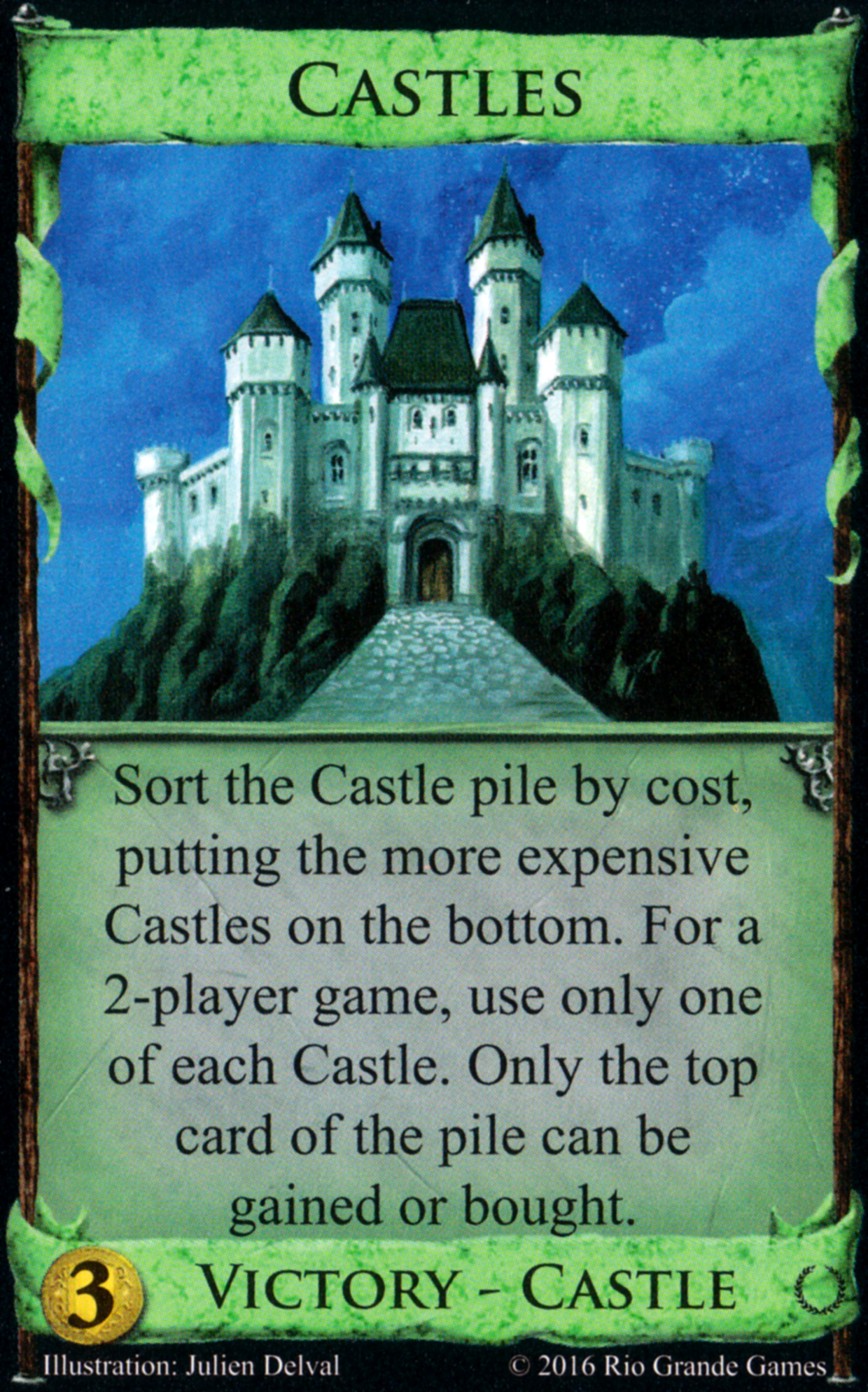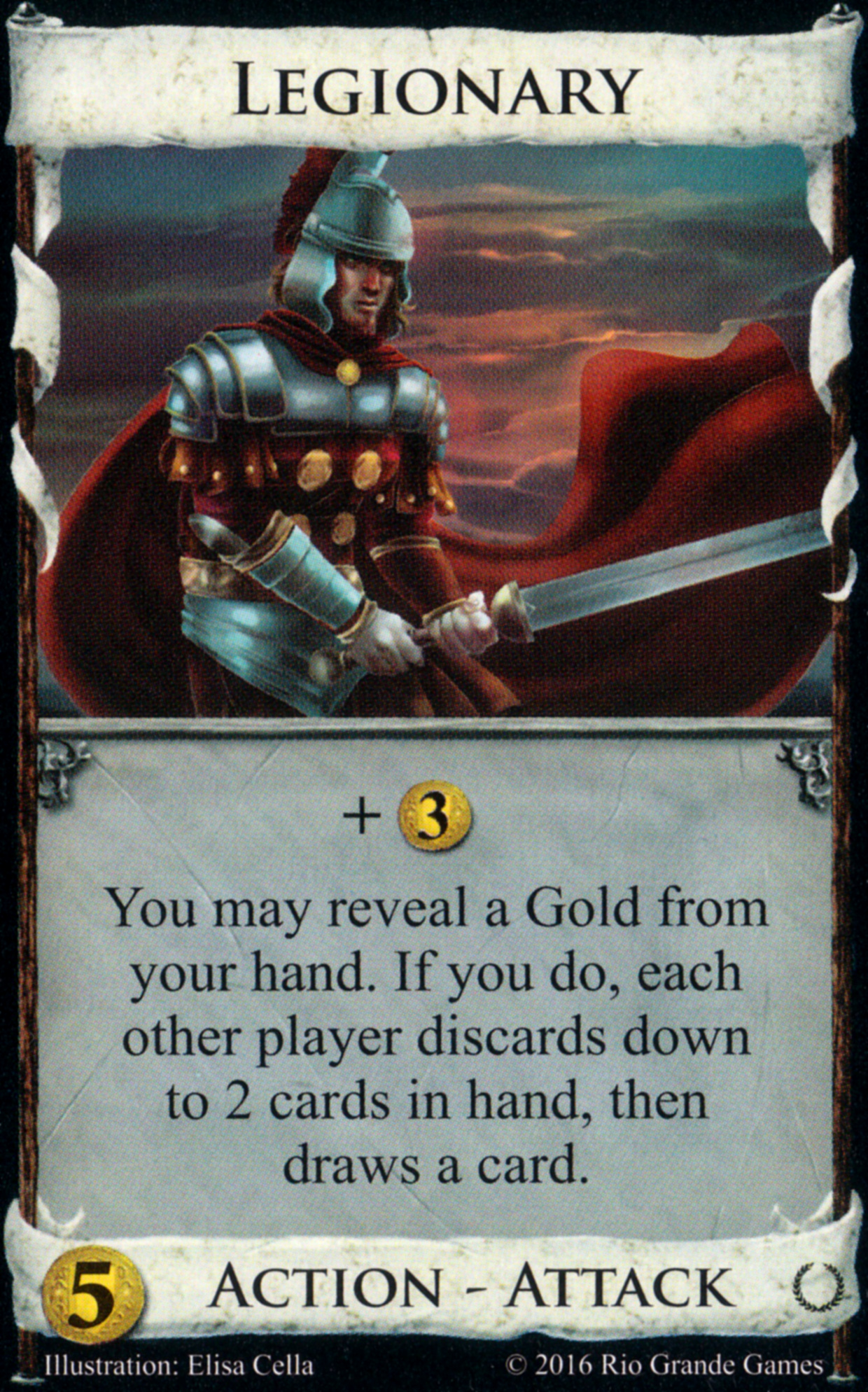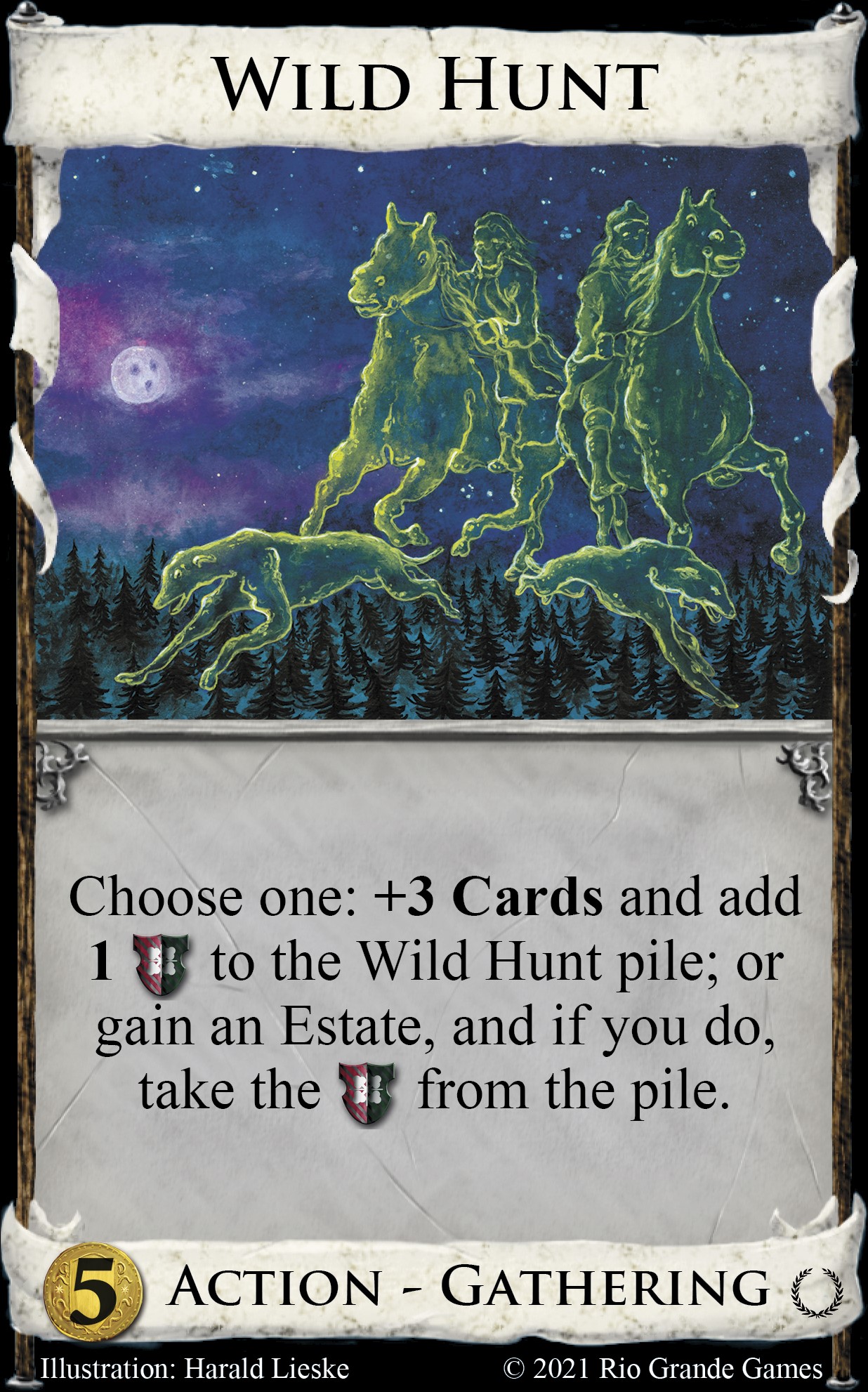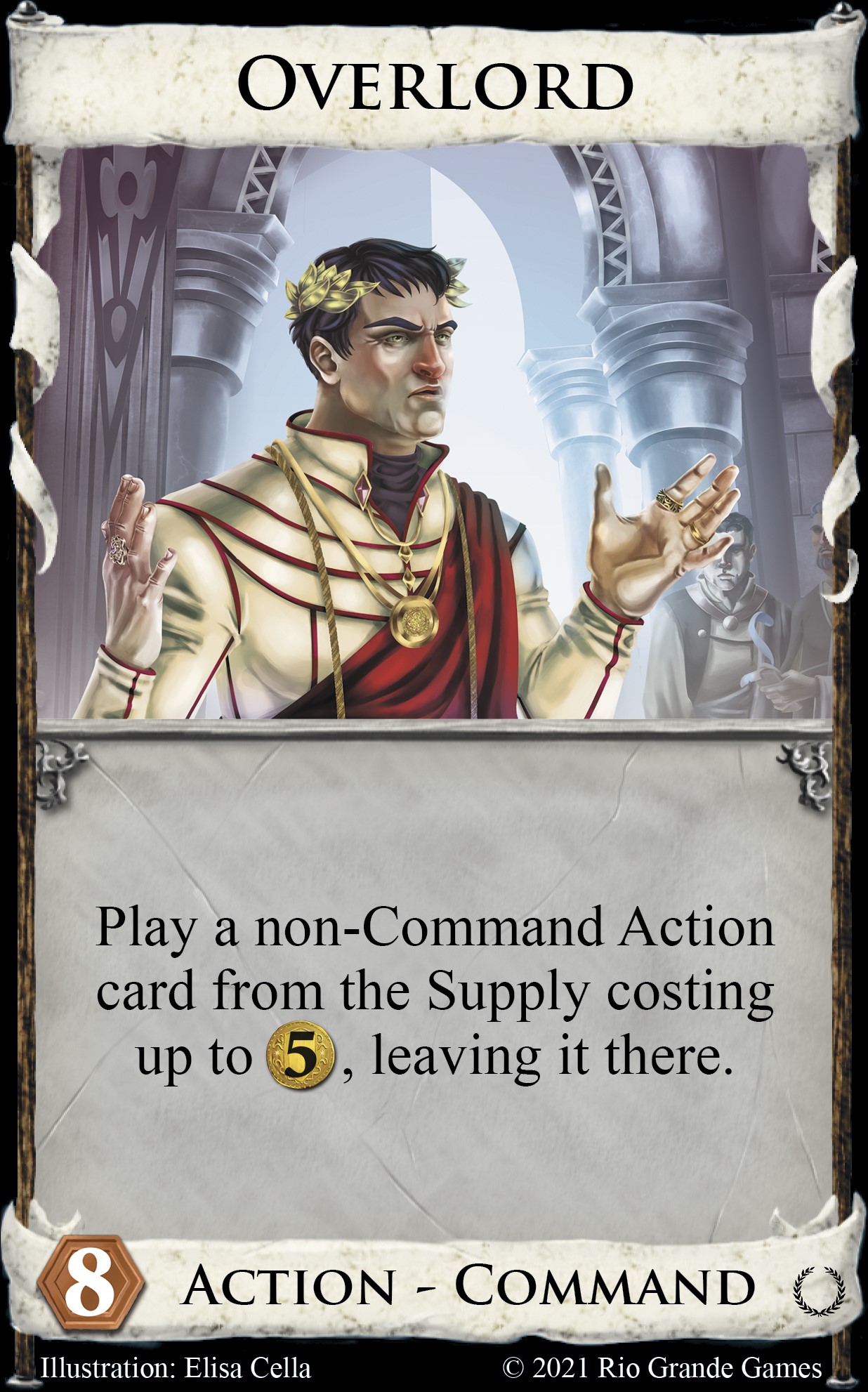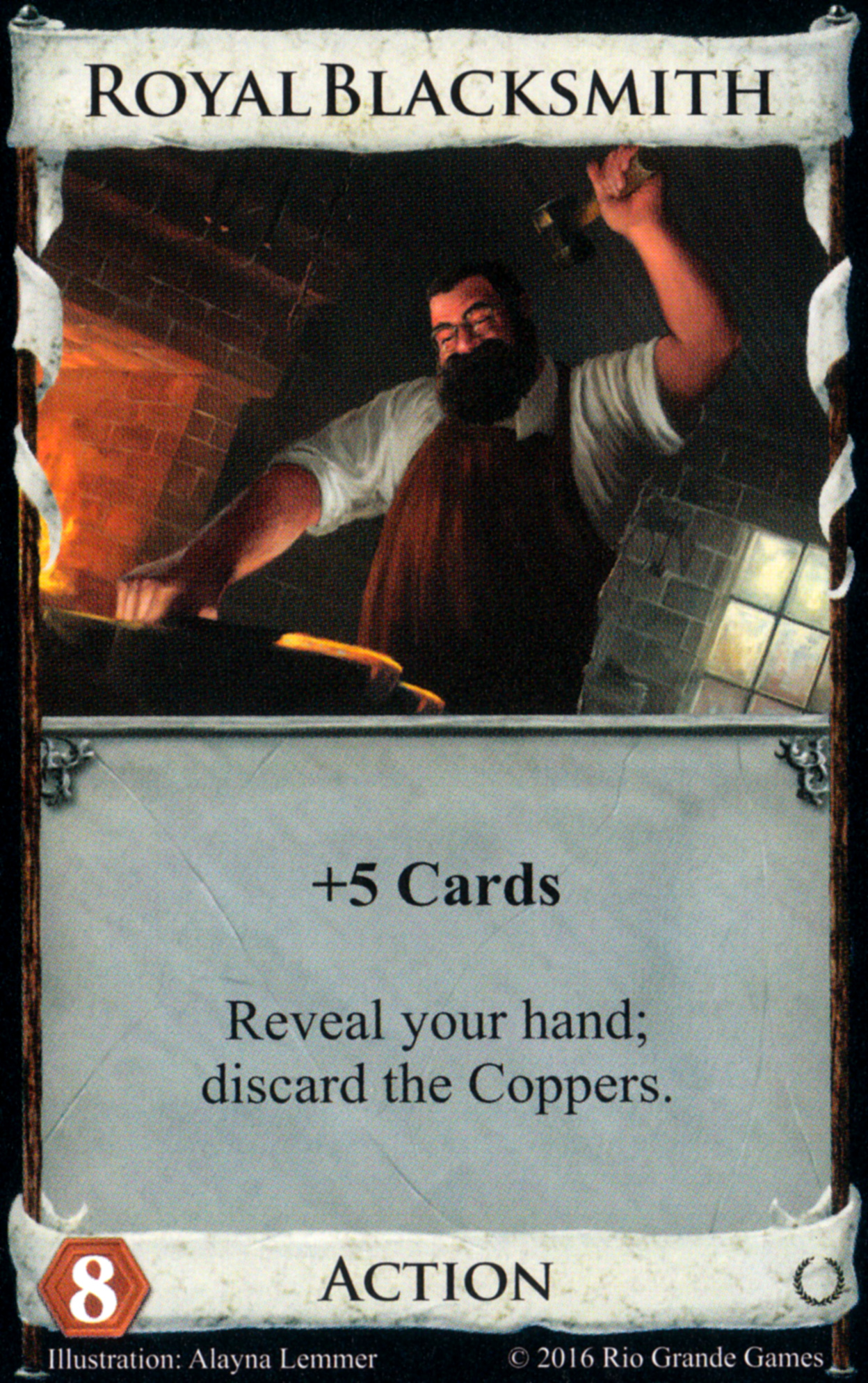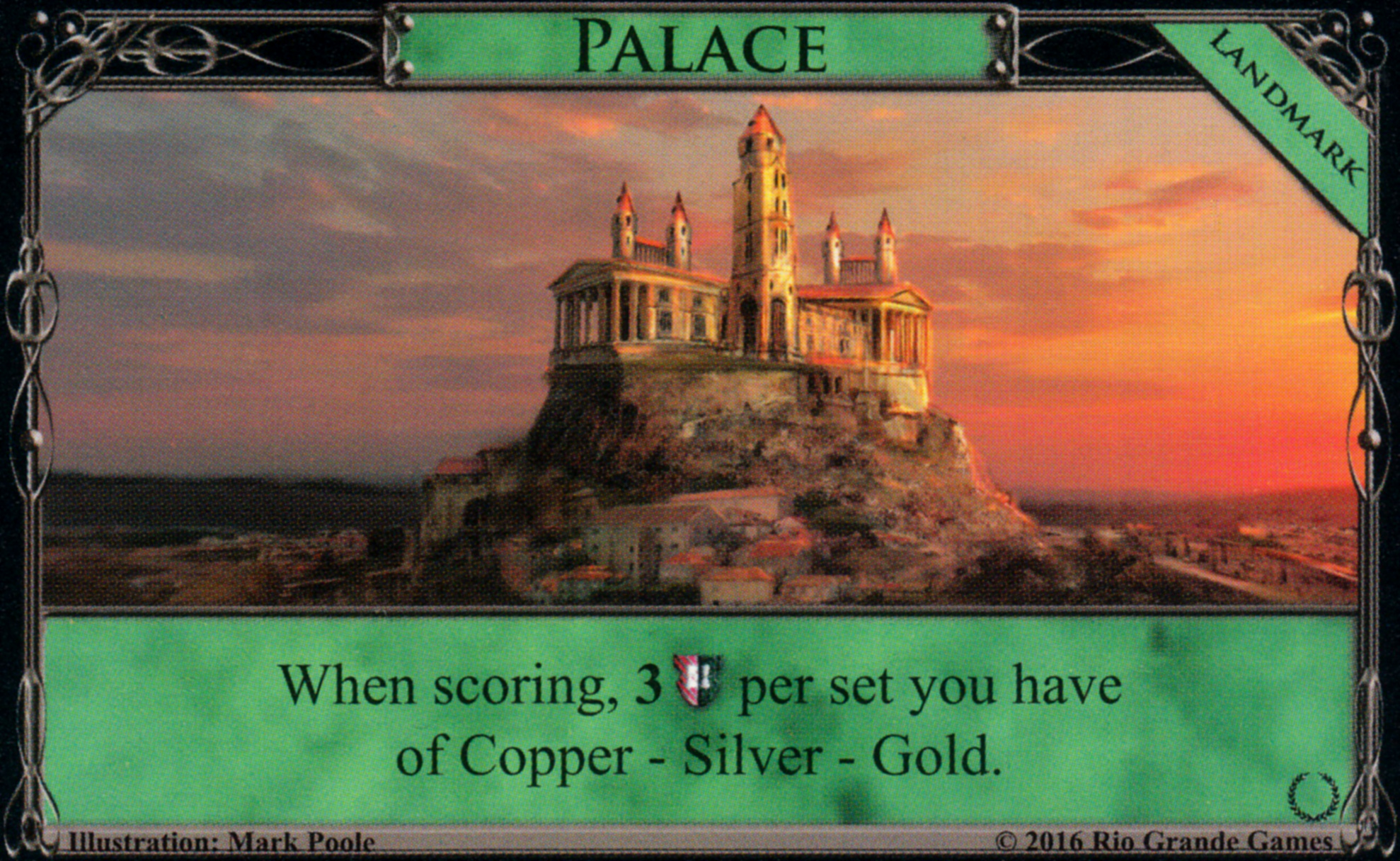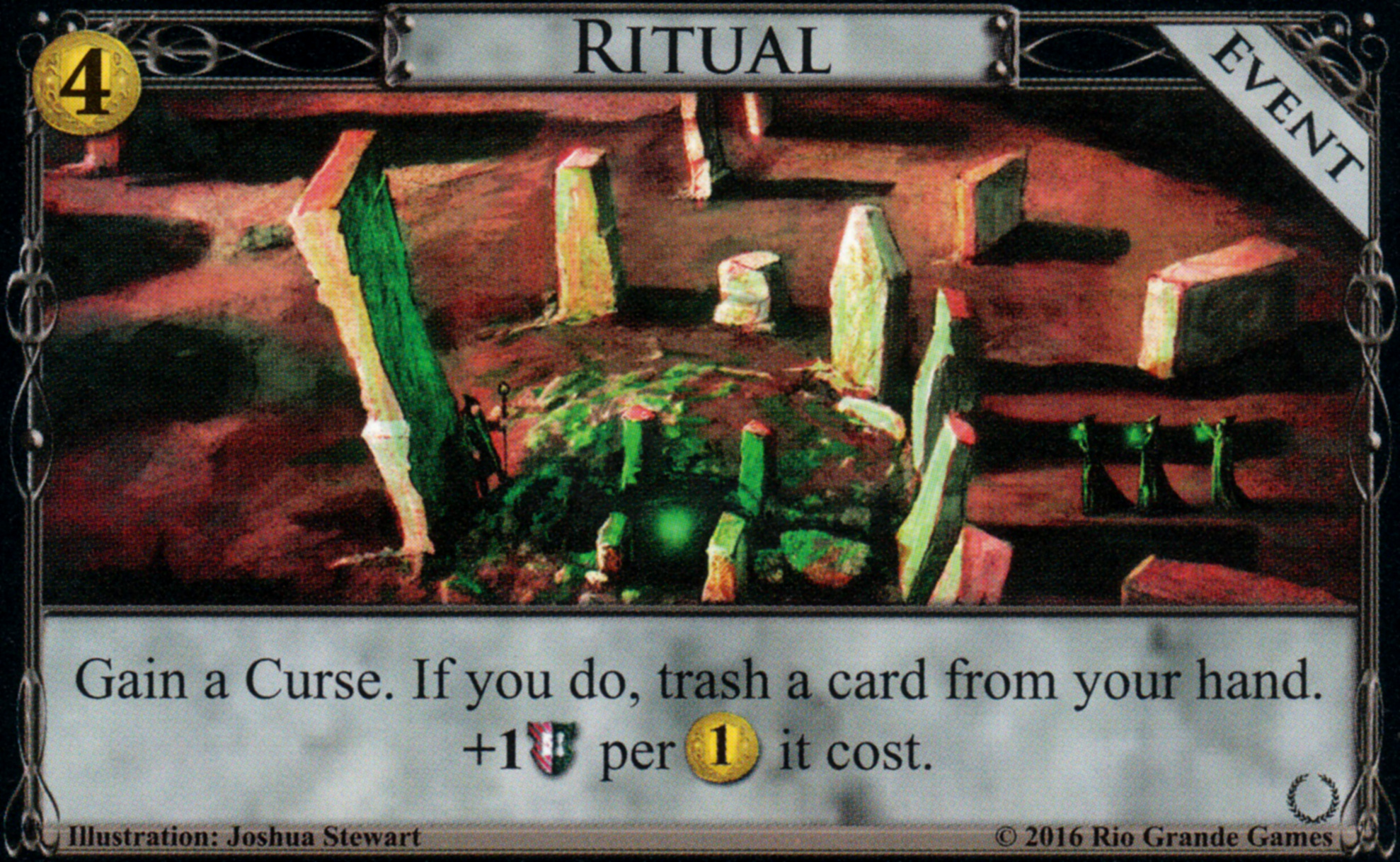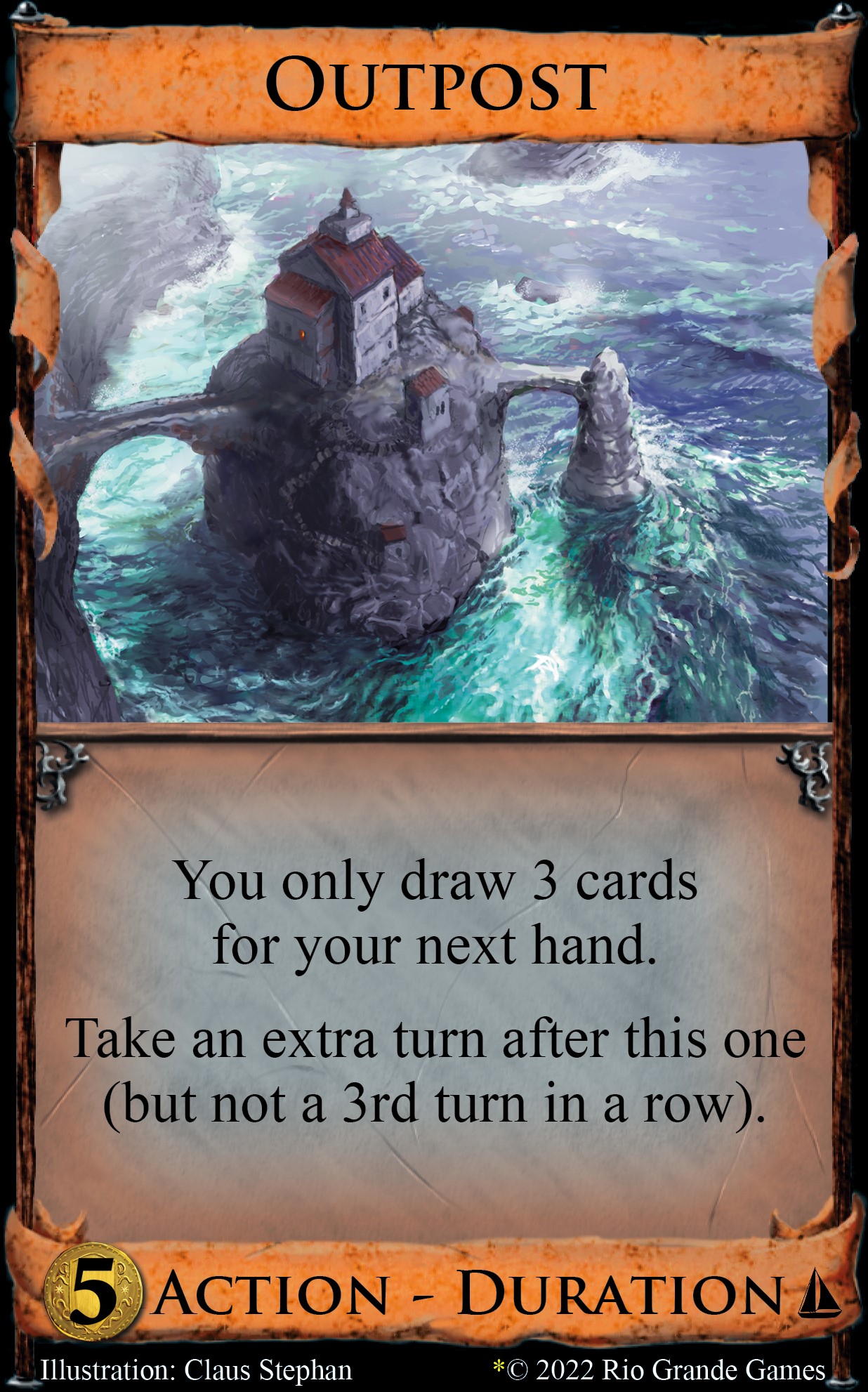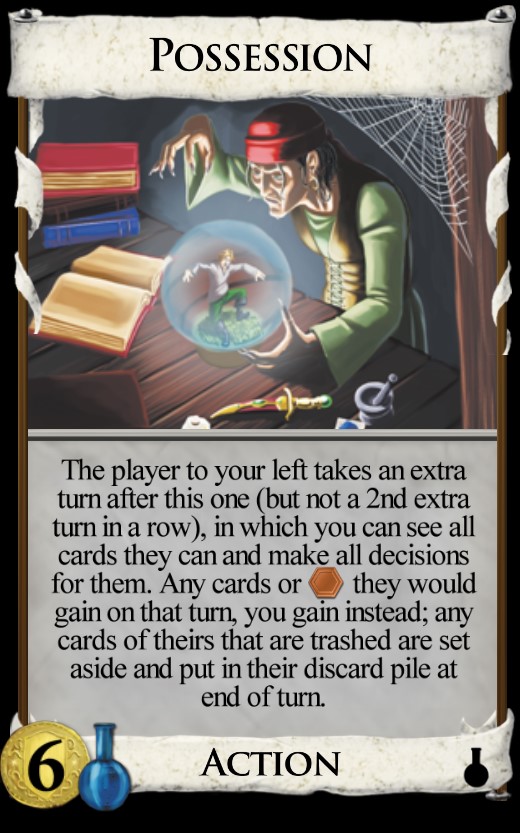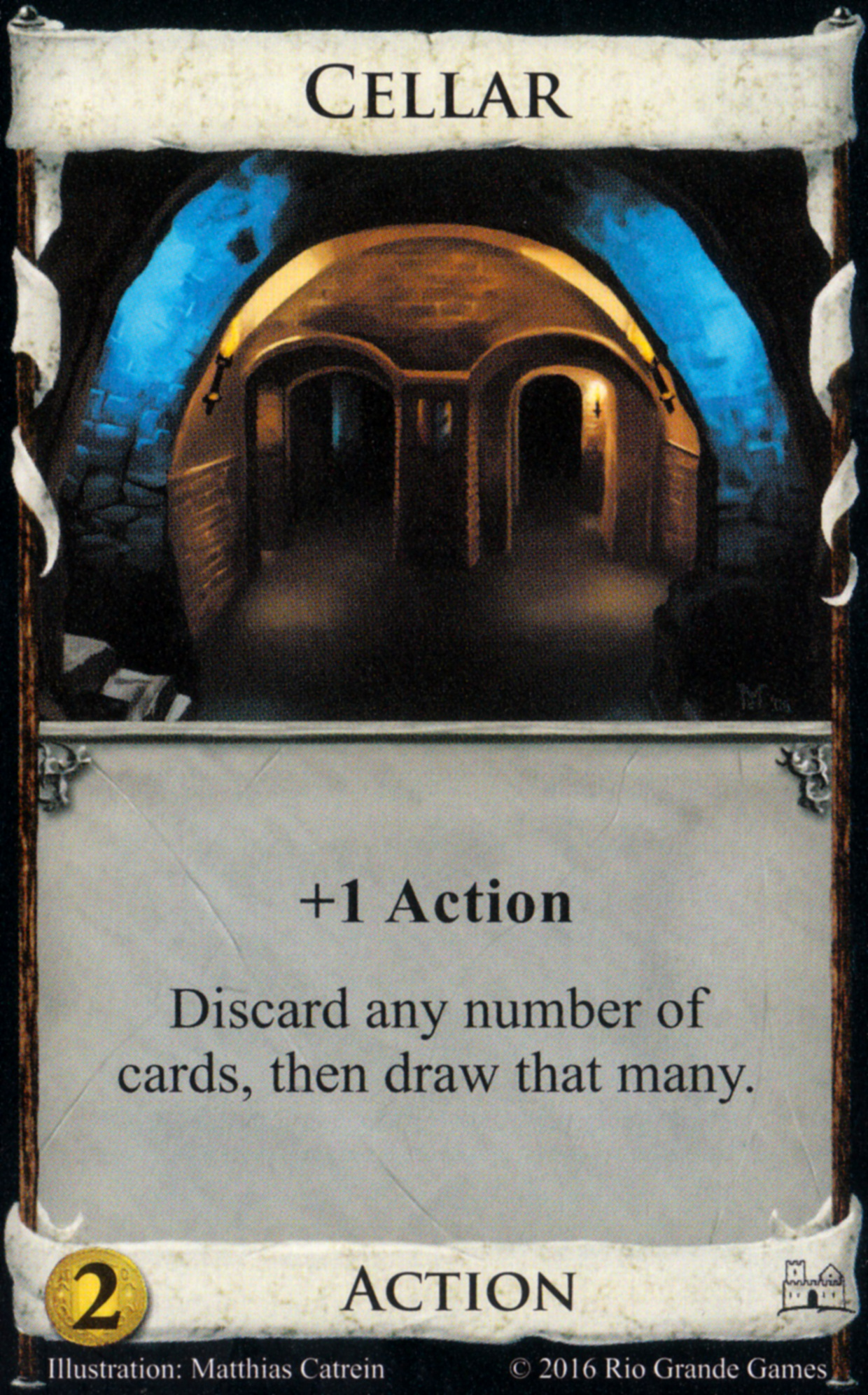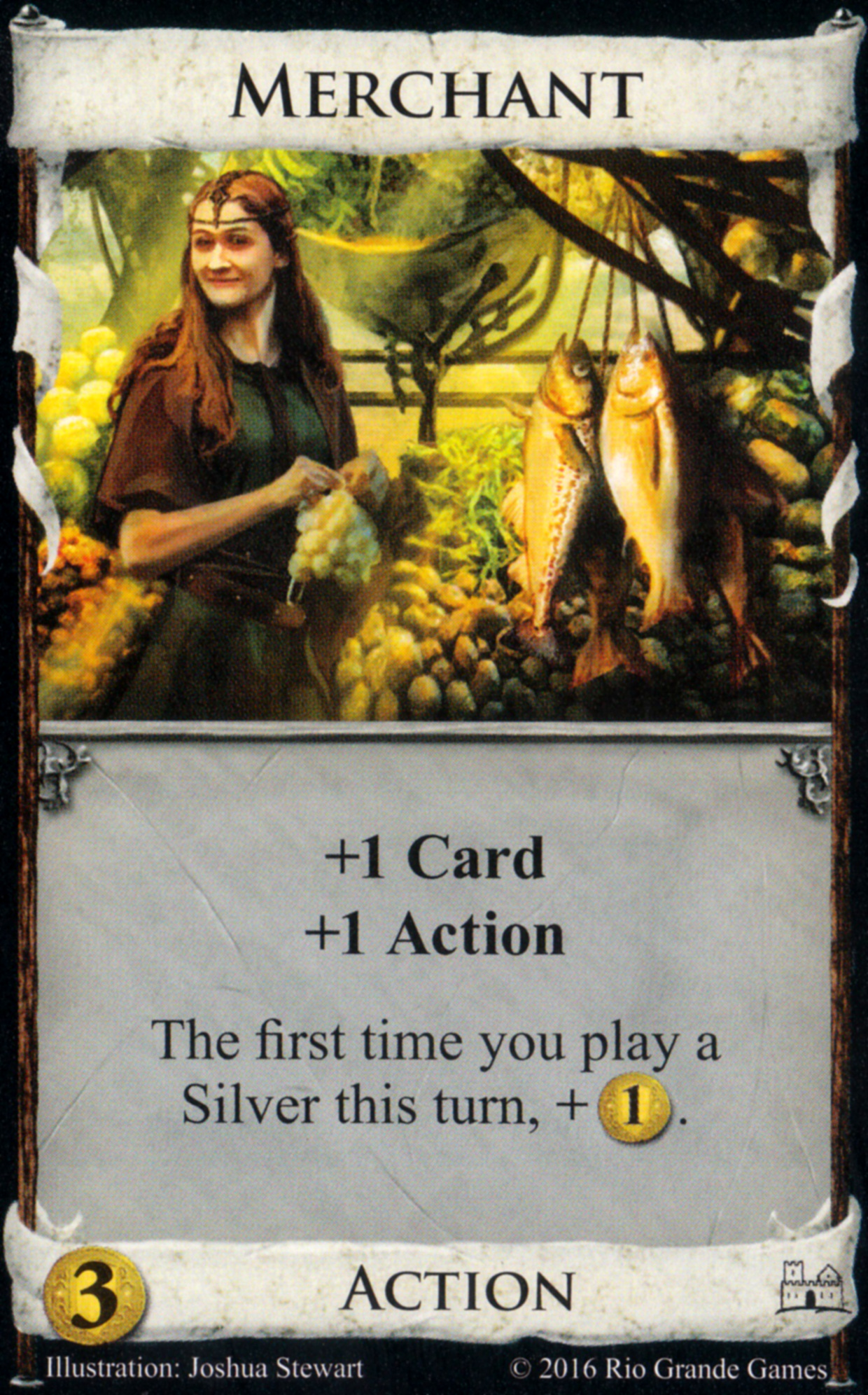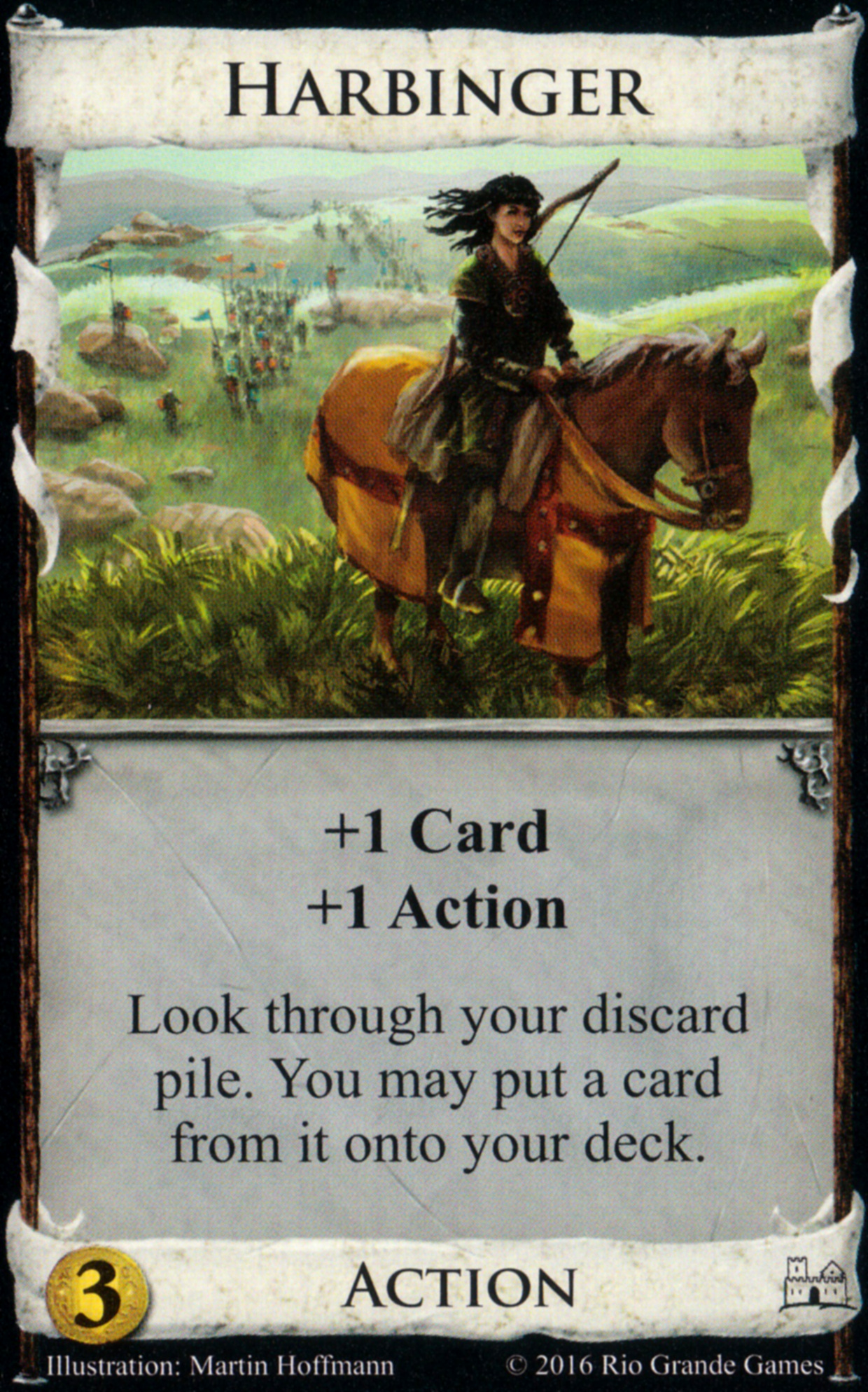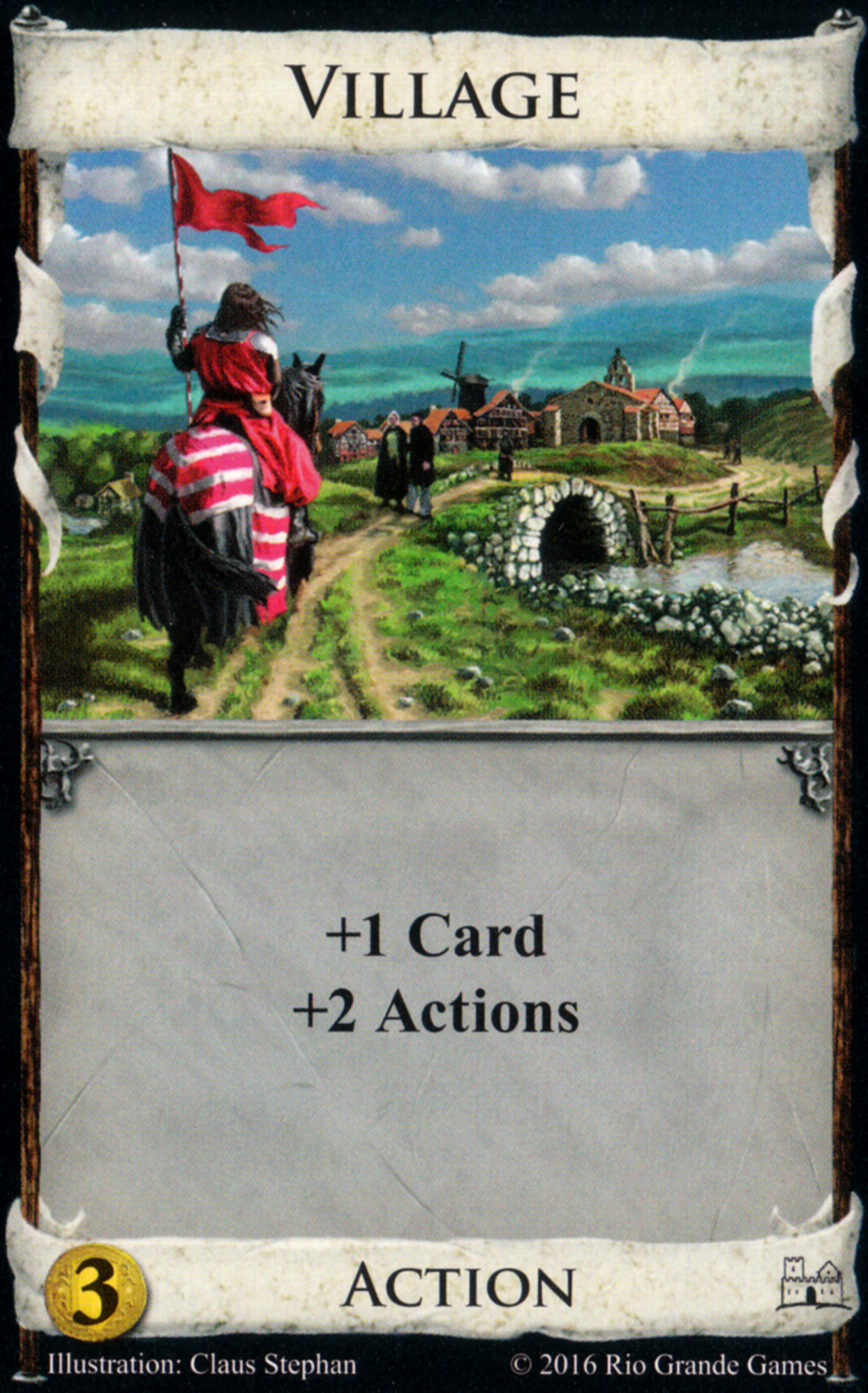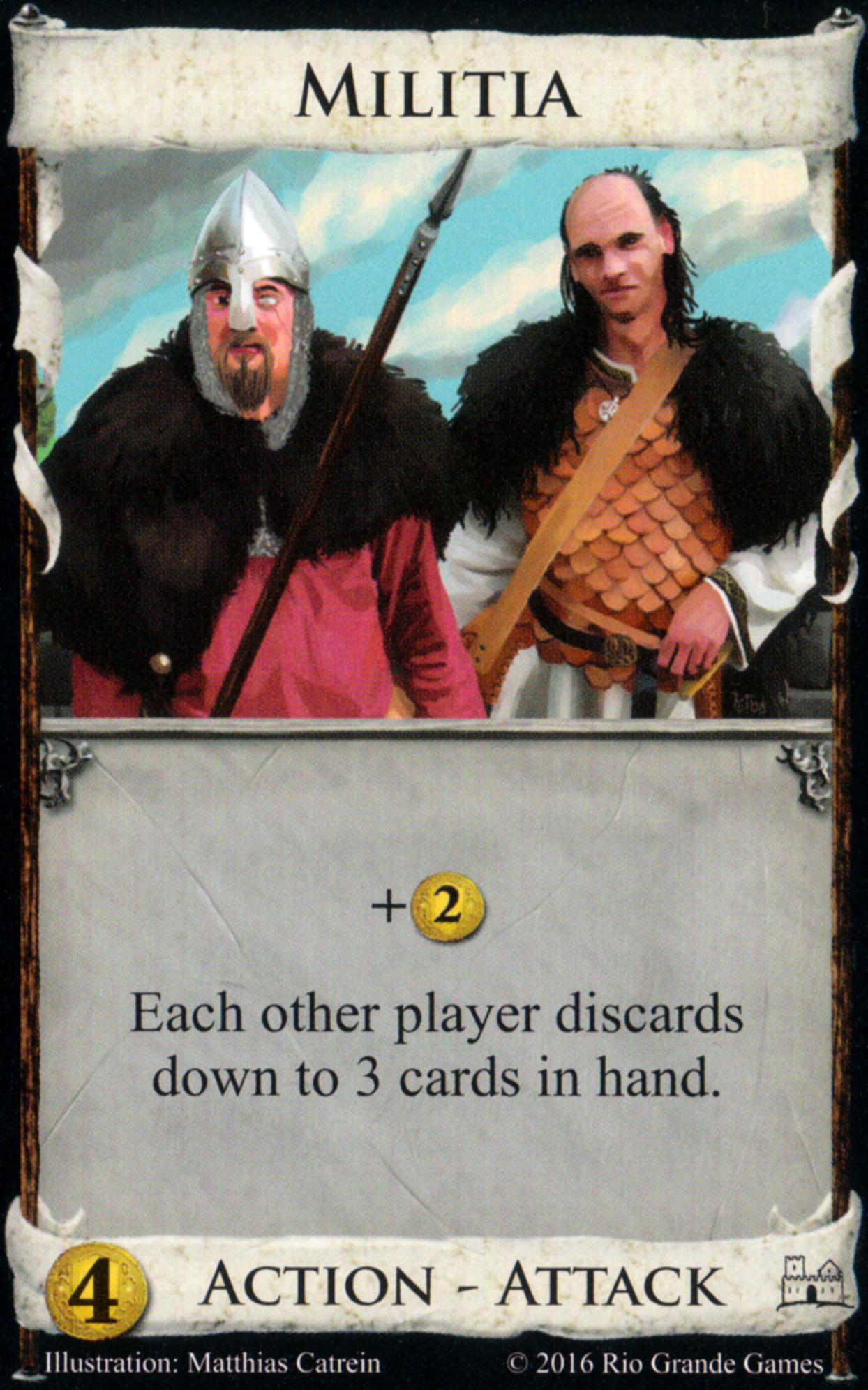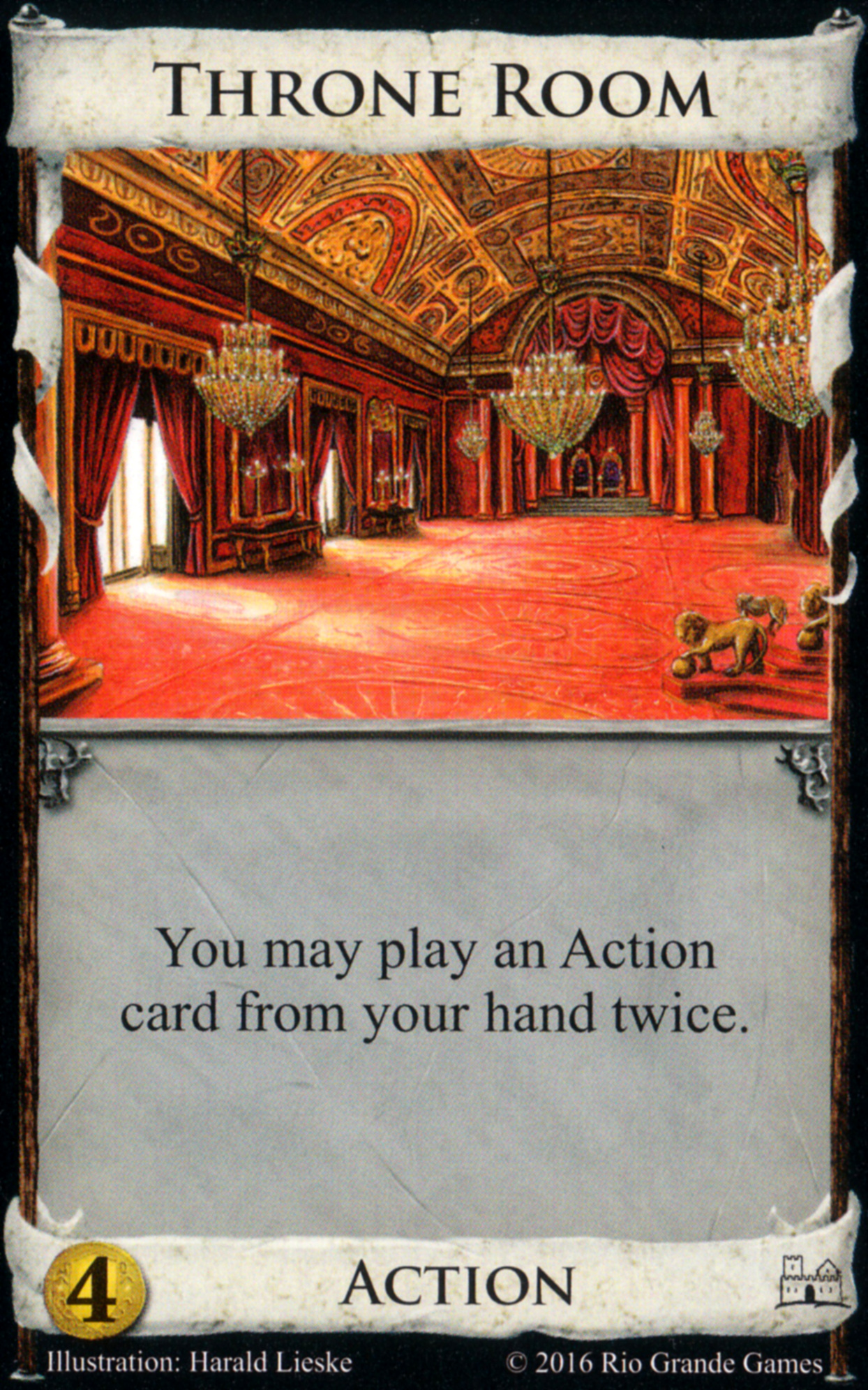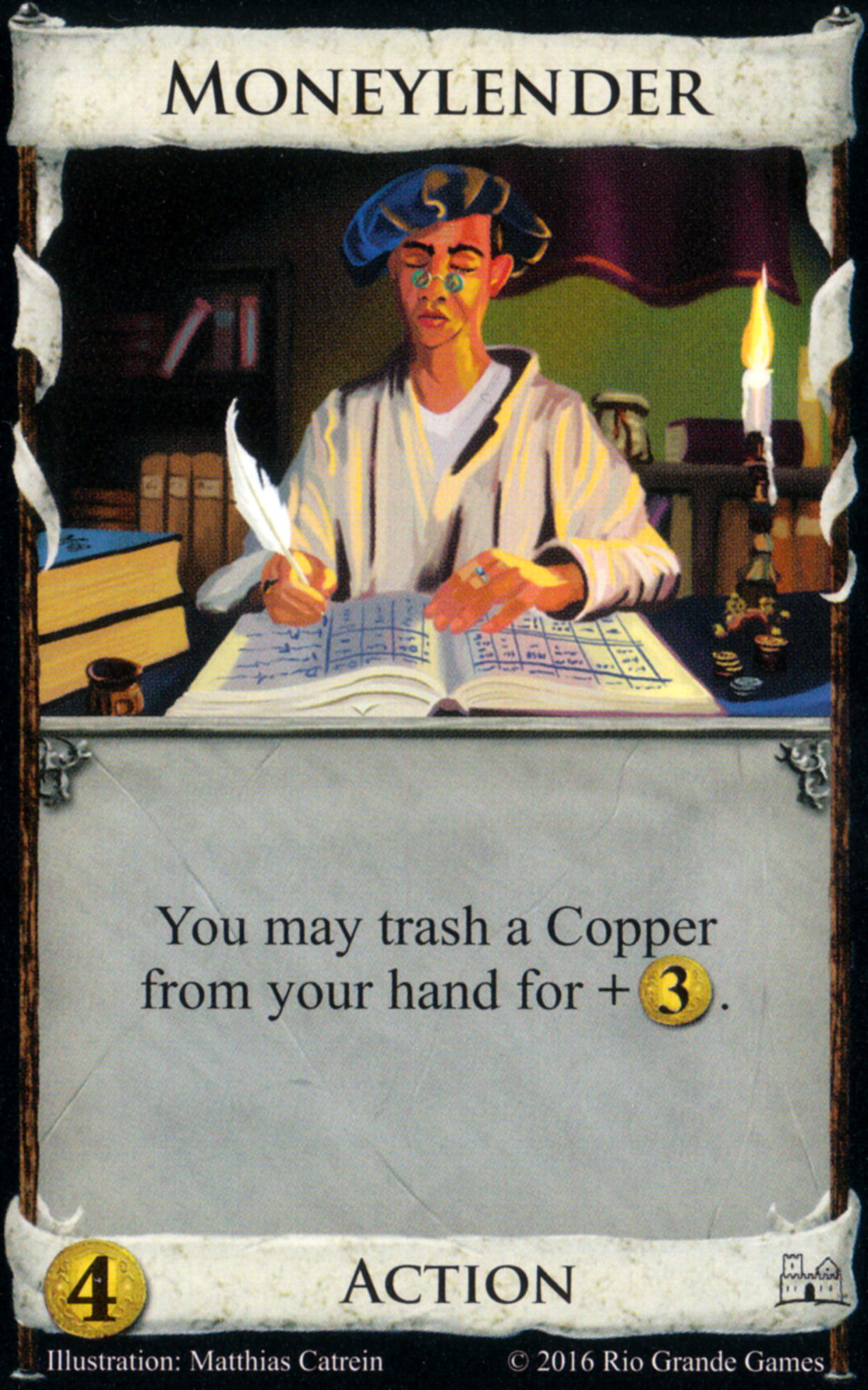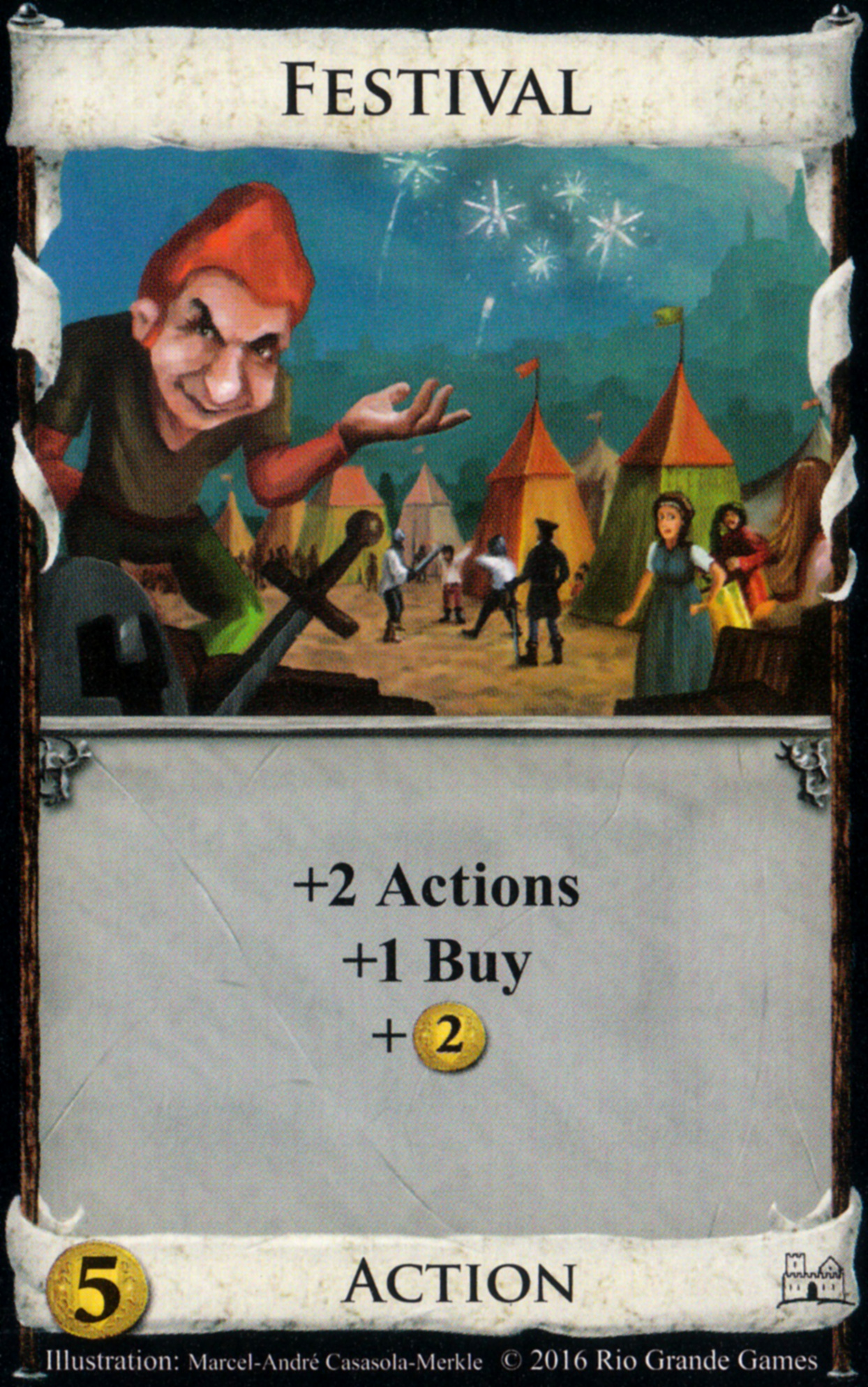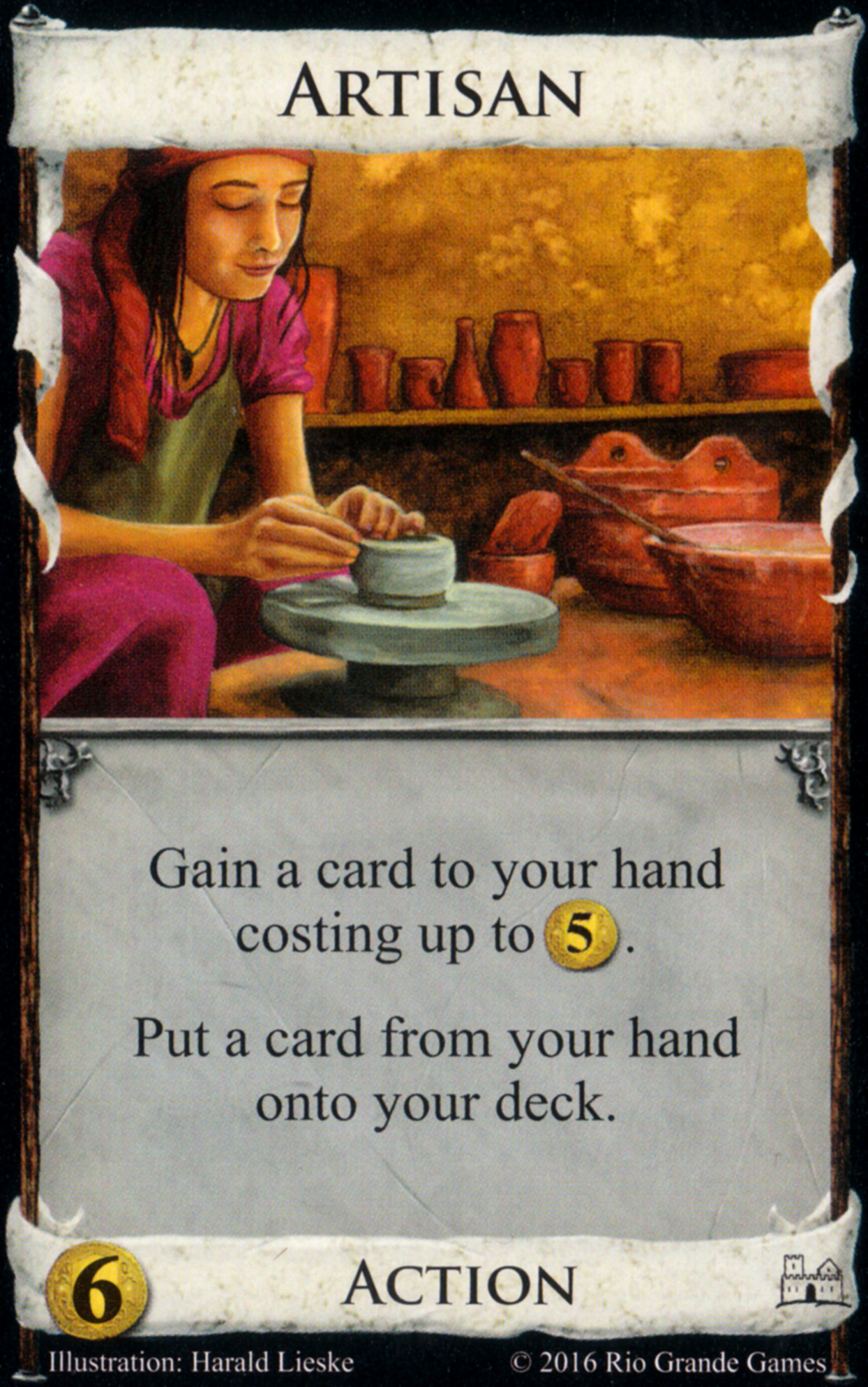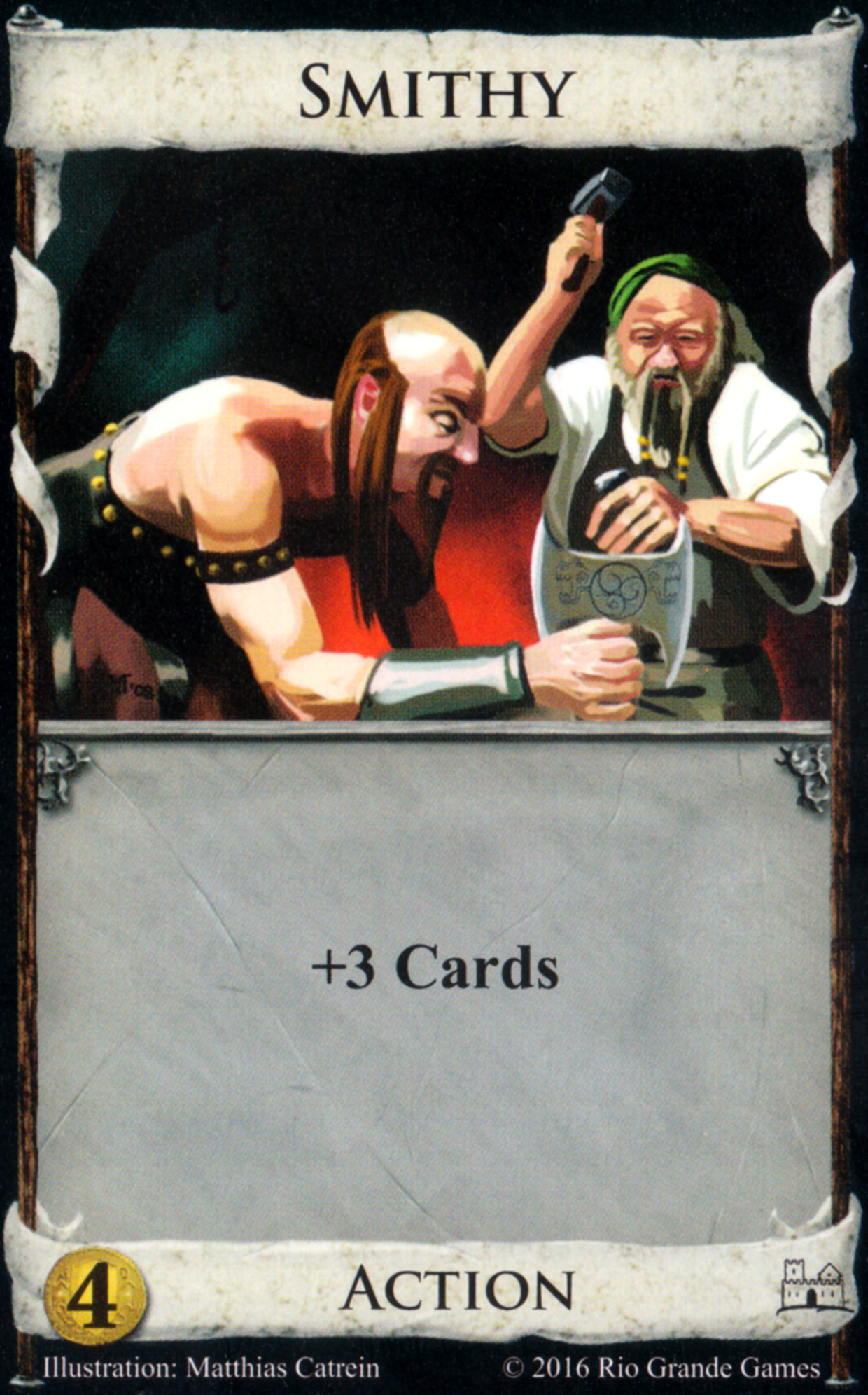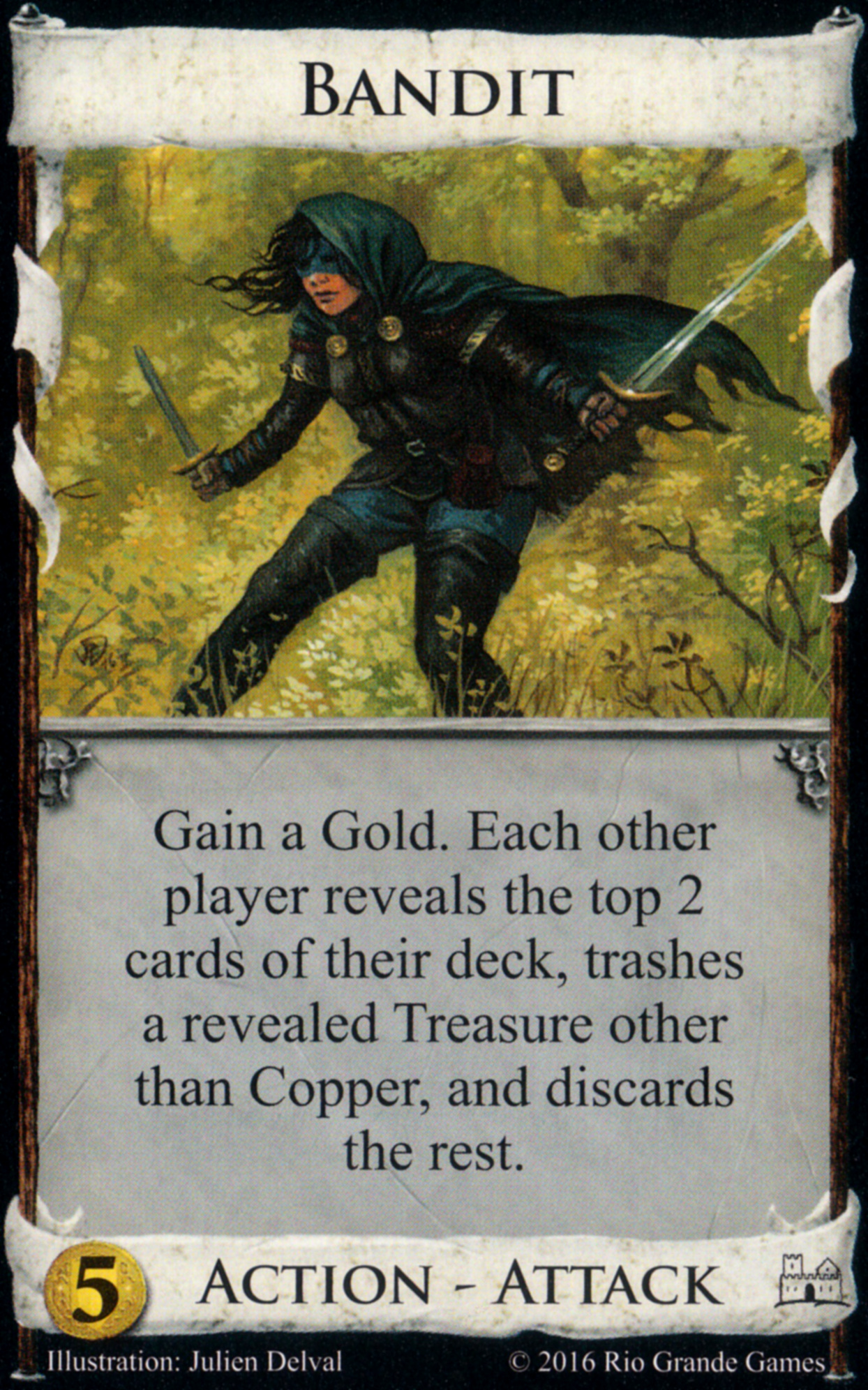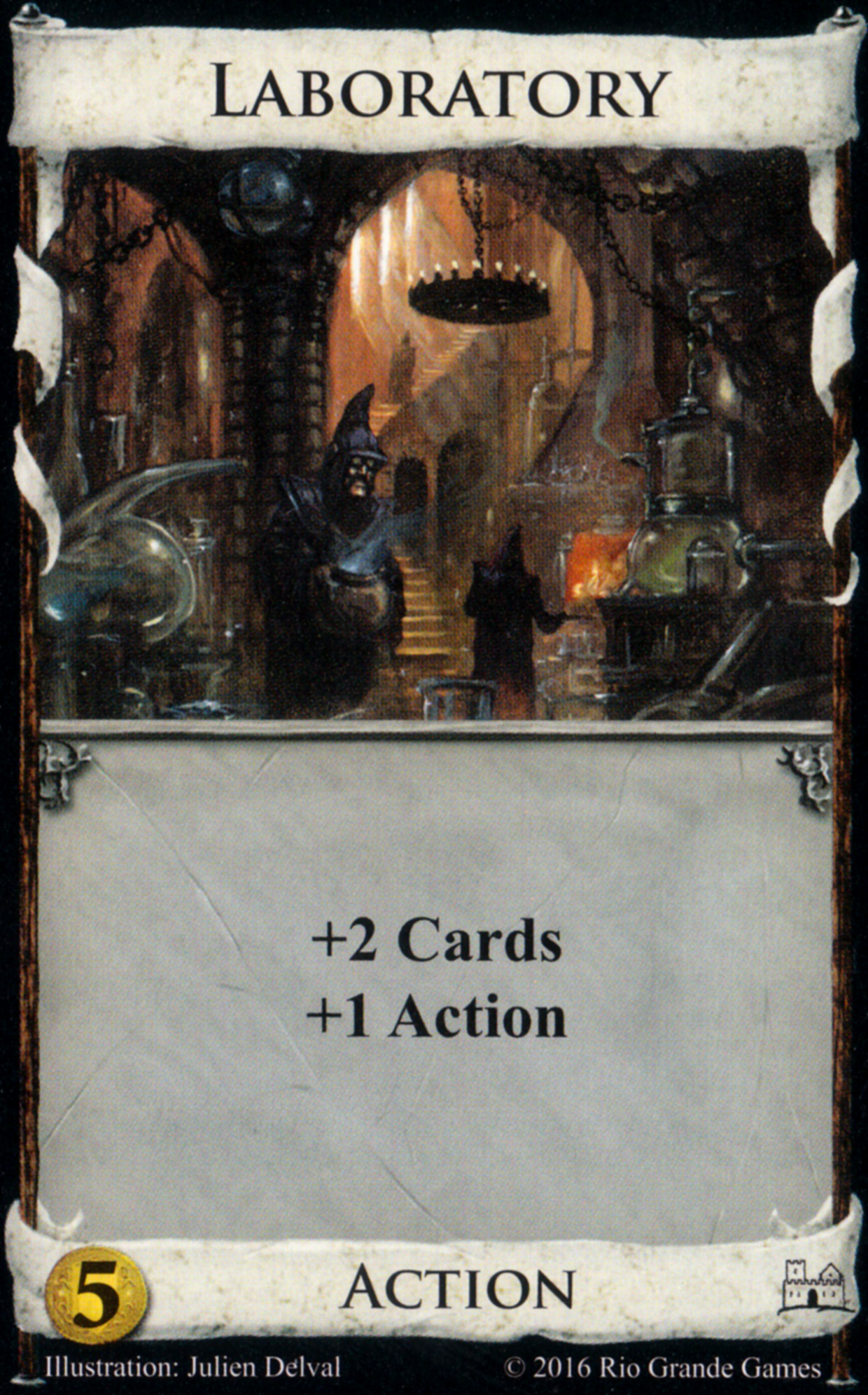1
Puzzles and Challenges / My kingdom for a Horse: a minimalistic (but slow) loop
« on: October 10, 2021, 07:05:33 am »
Here's a loop:
Merchant Guild is convenient and unique in that it effectively reduces the cost of Cavalry below zero. You can use other cost reducers instead (e.g. Highway) if you net money via some other channel (e.g. a +$1 token). You can also use Villa instead of Cavalry, but then you need to come up with a buy somehow. You can't do both substitutions unless there's something I've missed.
If you play the following kingdom, there's a slow but guaranteed way of going off:
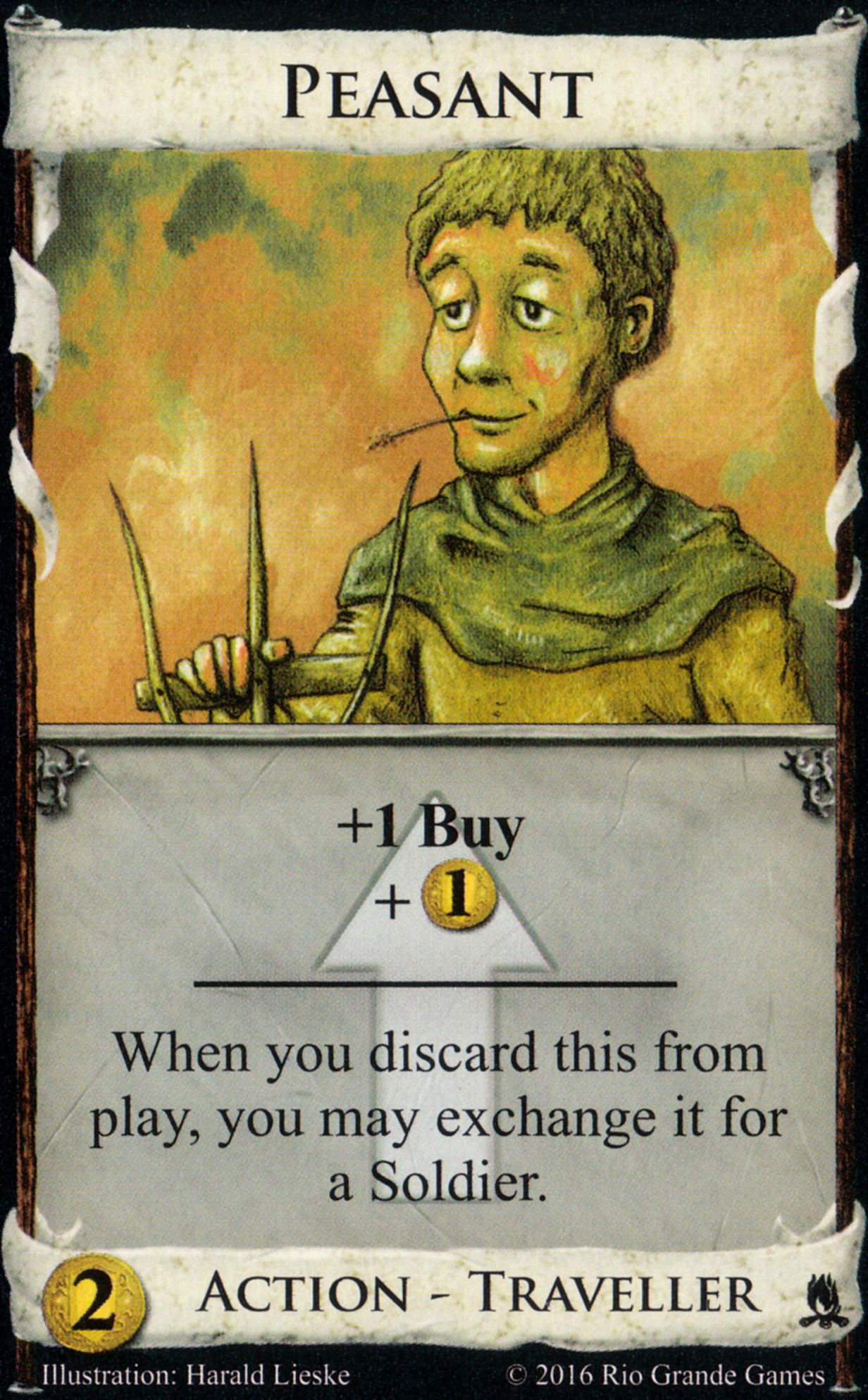


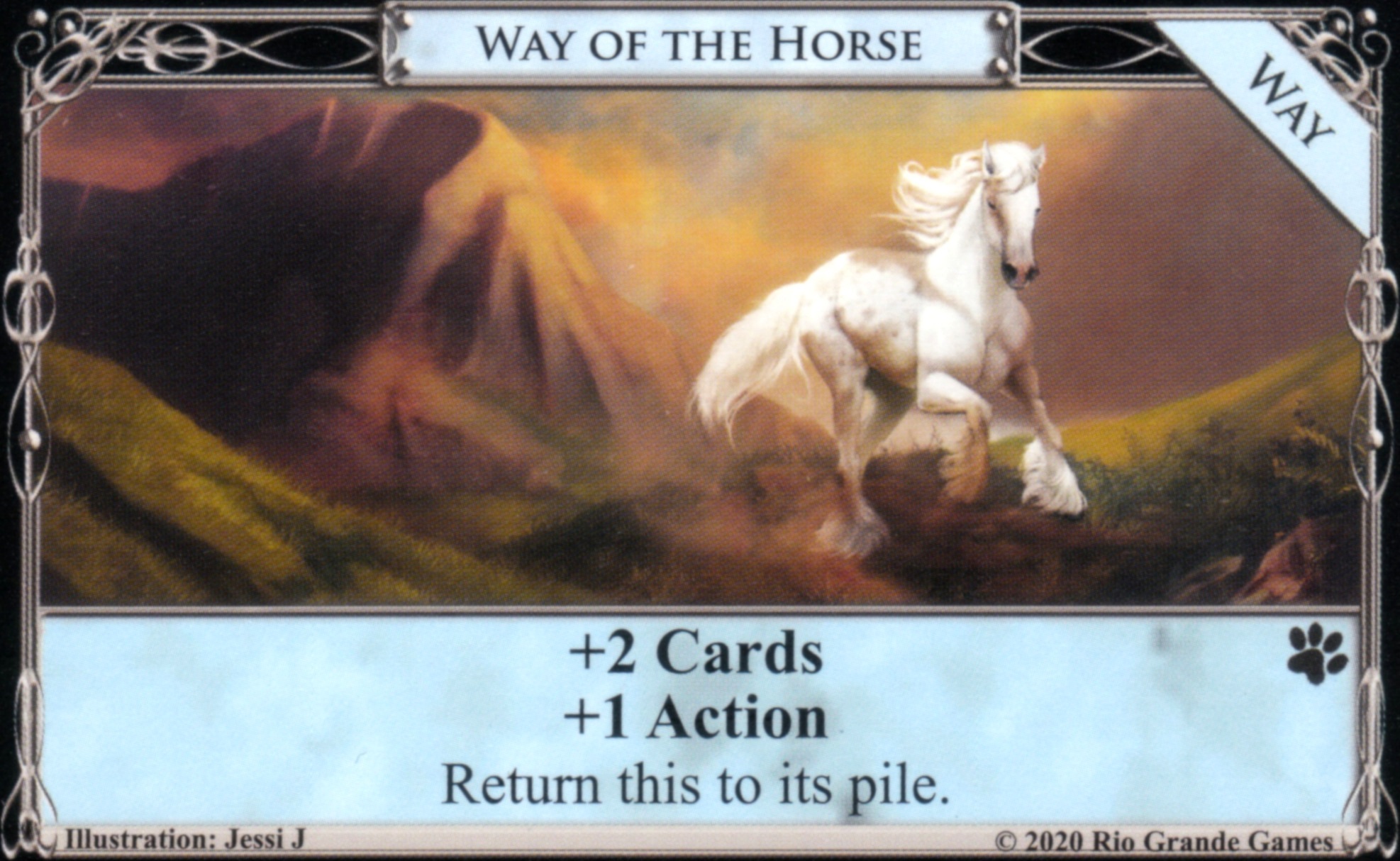
Here's how to go off (slowly, and probably without many surprises):
To do the Teacher business: promote your Soldier to Teacher (passing while you wait to draw a Traveller), then play and call Teacher repeatedly to place the tokens, then leave Teacher on the mat. (You may optionally put +$1 on the Peasant pile, if you think it speeds up the next step.)
To get to 5xMerchant Guild: buy Merchant Guild whenever you can. Play Merchant Guild whenever you can. If you can't buy Merchant Guild on the turns where you play Merchant Guild, instead buy a Peasant (gaining a coffer). Play the Peasant using Way of the Horse whenever your draw it. (You can interleave this step with the previous; if you prioritize the Teacher terminals the previous step is guaranteed to eventually complete.)
To gain the Horse pile: with 5xMerchant Guild plus your starting cards, you're guaranteed to hit $4 eventually (you can't spread 3xEstate across three hands such that there's at least two estates in each, and your non-estates are each worth $1). Buy a Cavalry. Play it every time you draw it, until you've gained the Horse pile. You can speed this up by buying more than one Cavalry (so you can play them more often) and by buying arbitrary actions (e.g. Peasant) which serve as Horses (by the Way).
To draw your deck: hold your horses until you reshuffle. Then play a Horse whenever you have one (including Cavalry using Way of the Horse). Pass if you haven't drawn your entire deck. Eventually (in at most four turns) you will. In detail: you have 15 stop cards, so playing 11xHorse will get you to a hand size greater than the number of stop cards; at that point you will draw your deck. That means you can burn 20 horses and still have enough (by "burn" I mean play a Horse on a turn where you don't draw your deck). But you can burn at most 10 horses: every Horse you burn gets you past a stop card; eventually you will have drawn past all of them, or rather enough.
Formally, after discarding but before drawing your hand in the clean-up phase, the number of horses in your deck exceeds the number of stop cards in your hand by at least 11:
If my math is wrong and you need way more horses than I think: gain an unbounded number of coffers the slow way, by repeatedly buying (and later returning) Peasant. Then buy 9 cards from every pile of actions cards, and put the entire Peasant line into your deck (30 cards). Then gain the Horse pile. That ought to be enough.
- Draw your deck
- Play 5xMerchant Guild
- Buy a Cavalry (gaining 5 coffers)
- Draw the Cavalry from its own on-gain
- Play the Cavalry using Way of the Horse
- Spend 4 coffers
- Go to step 3
Merchant Guild is convenient and unique in that it effectively reduces the cost of Cavalry below zero. You can use other cost reducers instead (e.g. Highway) if you net money via some other channel (e.g. a +$1 token). You can also use Villa instead of Cavalry, but then you need to come up with a buy somehow. You can't do both substitutions unless there's something I've missed.
If you play the following kingdom, there's a slow but guaranteed way of going off:




Here's how to go off (slowly, and probably without many surprises):
- Get to Merchant Guild plus Soldier
- Do the Teacher business
- Get to 5xMerchant Guild
- Gain the Horse pile
- Draw your deck and go off
To do the Teacher business: promote your Soldier to Teacher (passing while you wait to draw a Traveller), then play and call Teacher repeatedly to place the tokens, then leave Teacher on the mat. (You may optionally put +$1 on the Peasant pile, if you think it speeds up the next step.)
To get to 5xMerchant Guild: buy Merchant Guild whenever you can. Play Merchant Guild whenever you can. If you can't buy Merchant Guild on the turns where you play Merchant Guild, instead buy a Peasant (gaining a coffer). Play the Peasant using Way of the Horse whenever your draw it. (You can interleave this step with the previous; if you prioritize the Teacher terminals the previous step is guaranteed to eventually complete.)
To gain the Horse pile: with 5xMerchant Guild plus your starting cards, you're guaranteed to hit $4 eventually (you can't spread 3xEstate across three hands such that there's at least two estates in each, and your non-estates are each worth $1). Buy a Cavalry. Play it every time you draw it, until you've gained the Horse pile. You can speed this up by buying more than one Cavalry (so you can play them more often) and by buying arbitrary actions (e.g. Peasant) which serve as Horses (by the Way).
To draw your deck: hold your horses until you reshuffle. Then play a Horse whenever you have one (including Cavalry using Way of the Horse). Pass if you haven't drawn your entire deck. Eventually (in at most four turns) you will. In detail: you have 15 stop cards, so playing 11xHorse will get you to a hand size greater than the number of stop cards; at that point you will draw your deck. That means you can burn 20 horses and still have enough (by "burn" I mean play a Horse on a turn where you don't draw your deck). But you can burn at most 10 horses: every Horse you burn gets you past a stop card; eventually you will have drawn past all of them, or rather enough.
Formally, after discarding but before drawing your hand in the clean-up phase, the number of horses in your deck exceeds the number of stop cards in your hand by at least 11:
- when you first reshuffle it's 31 vs. 15 (and 31-15 = 16 > 11)
- after discarding once it's 31-X vs. 15-5-X where X is the number of burned horses, and 31-X - (15-5-X) = 31 - 10 = 21 > 11
- after discarding twice it's 31-X-Y - (15-5-X-5-Y) = 31 - 5 = 26 > 11
- after discarding three times it's 31-X-Y-Z - (15-5-X-5-Y-5-Z) = 31 - 0 = 31 > 11
- eventually there will be zero stop cards left in your deck, along with 11 or more horses
- (this analysis generalizes to any positive initial hand size, though for a hand size of 1 you'll need 15 horses)
If my math is wrong and you need way more horses than I think: gain an unbounded number of coffers the slow way, by repeatedly buying (and later returning) Peasant. Then buy 9 cards from every pile of actions cards, and put the entire Peasant line into your deck (30 cards). Then gain the Horse pile. That ought to be enough.

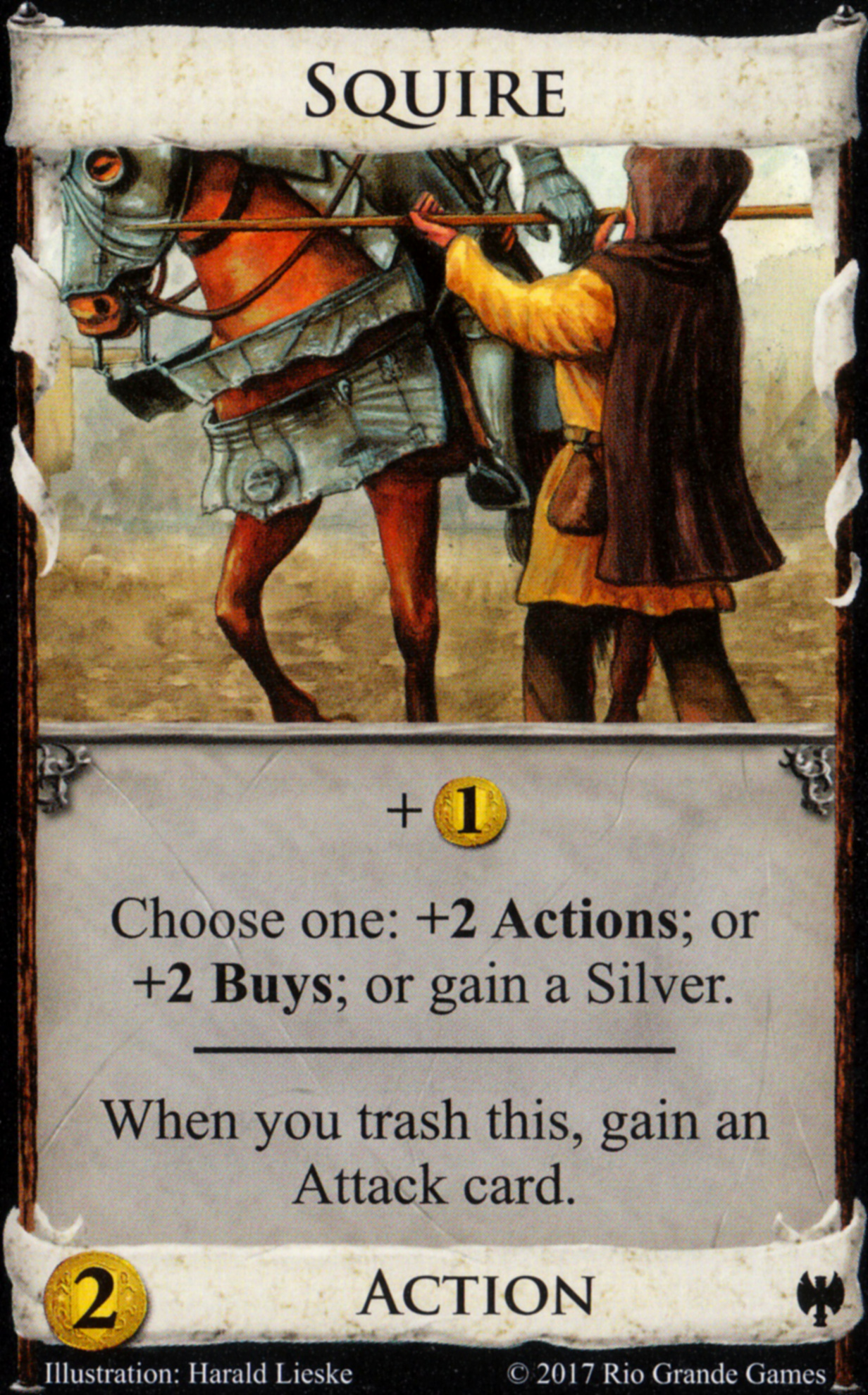
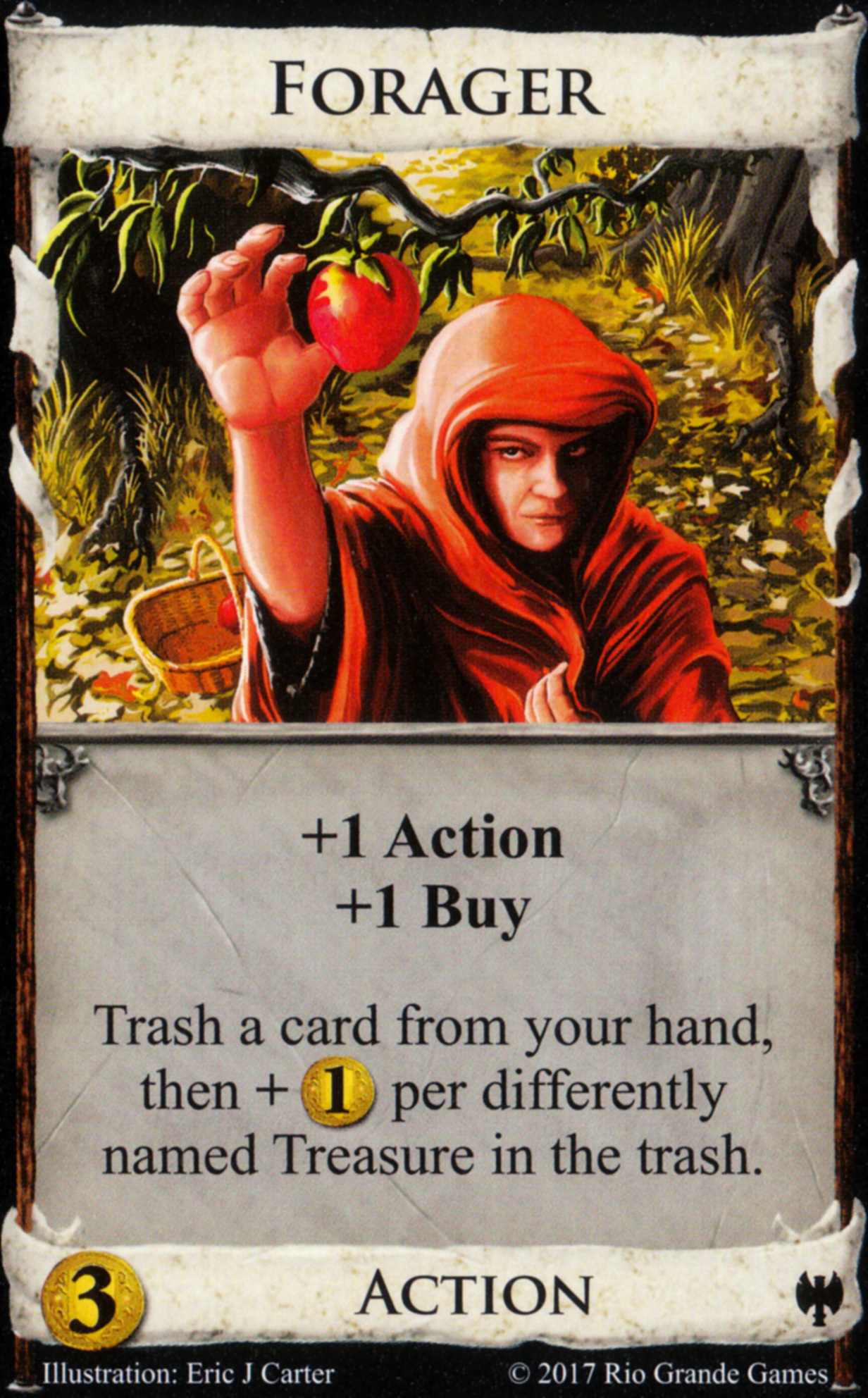
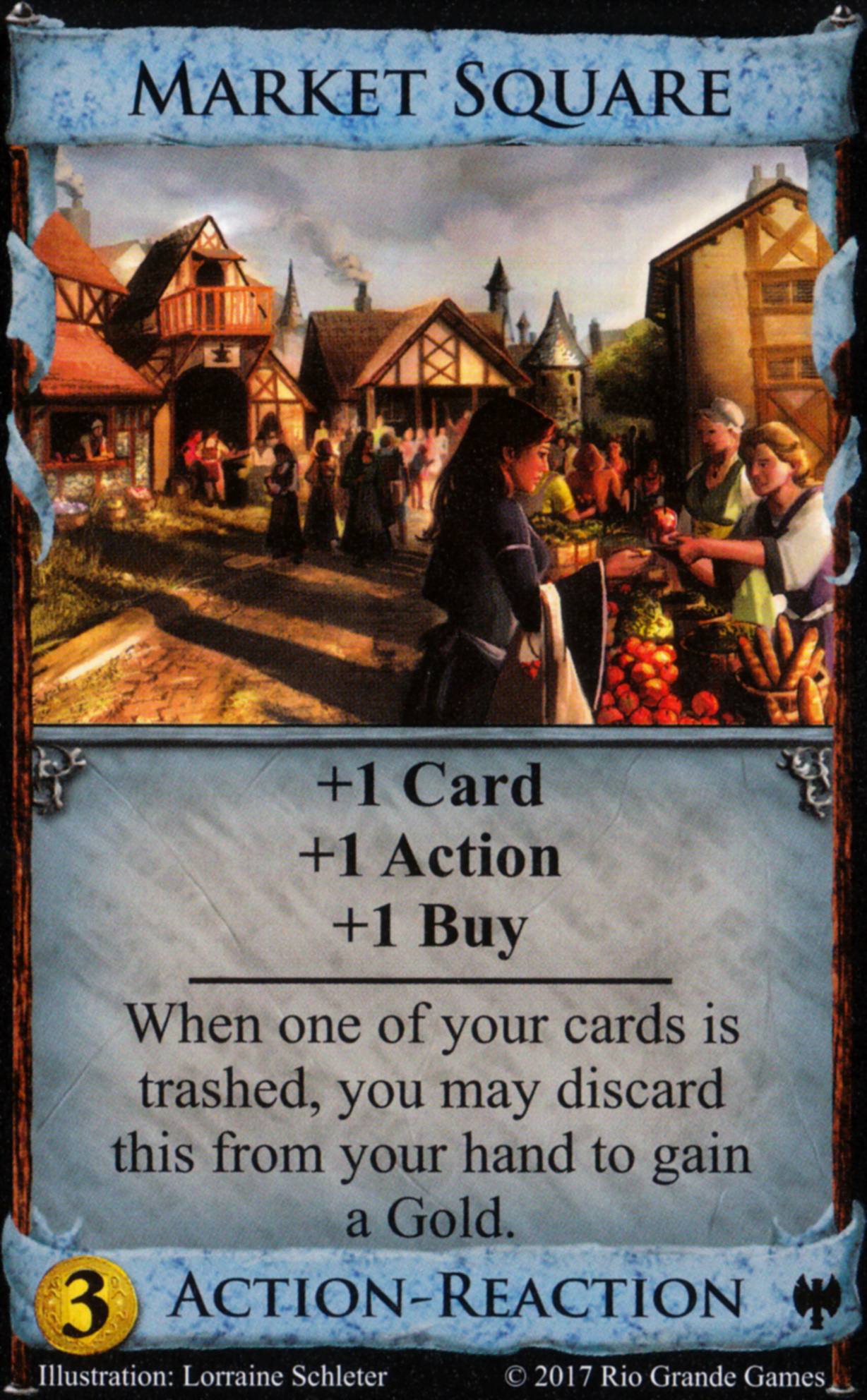

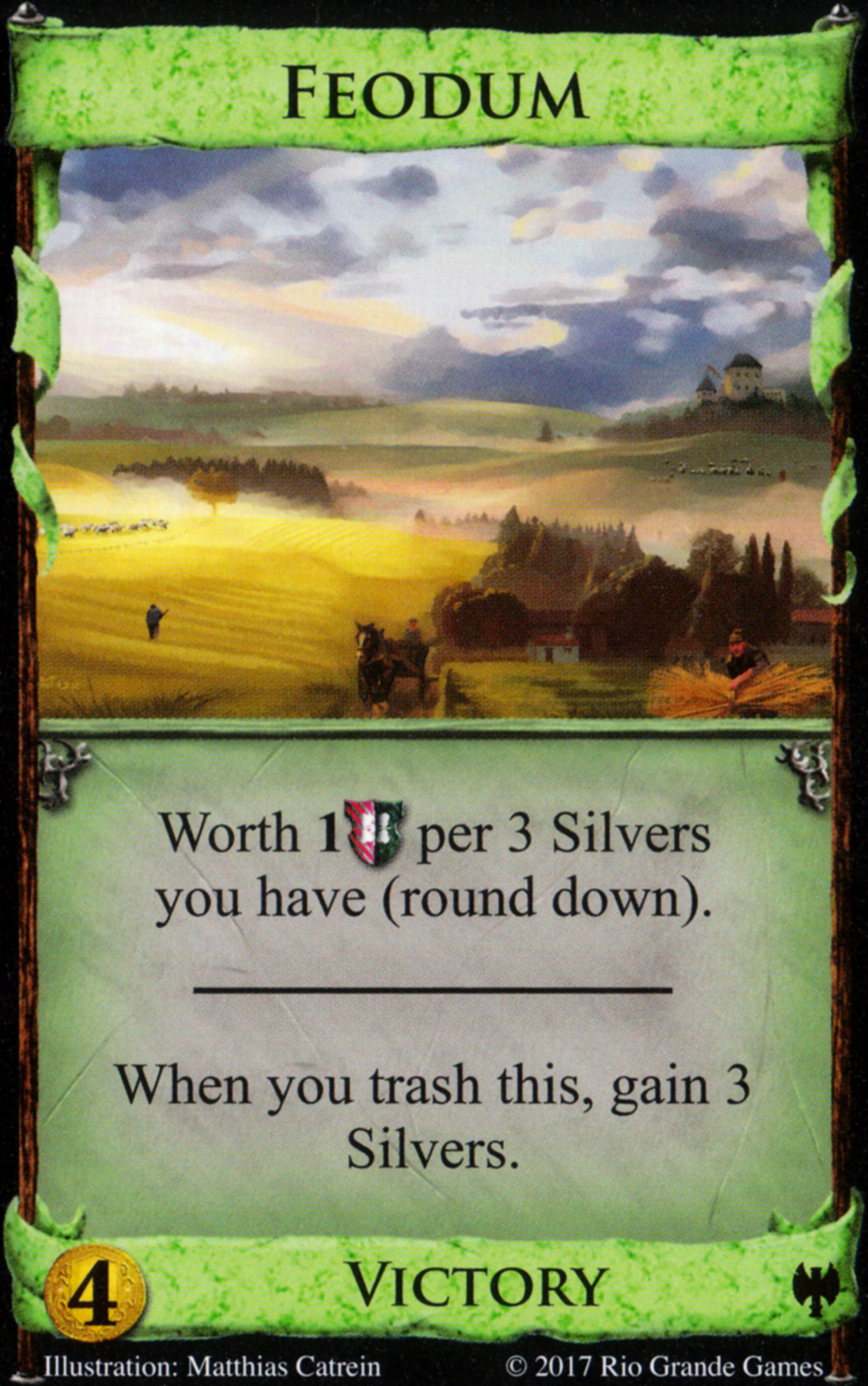
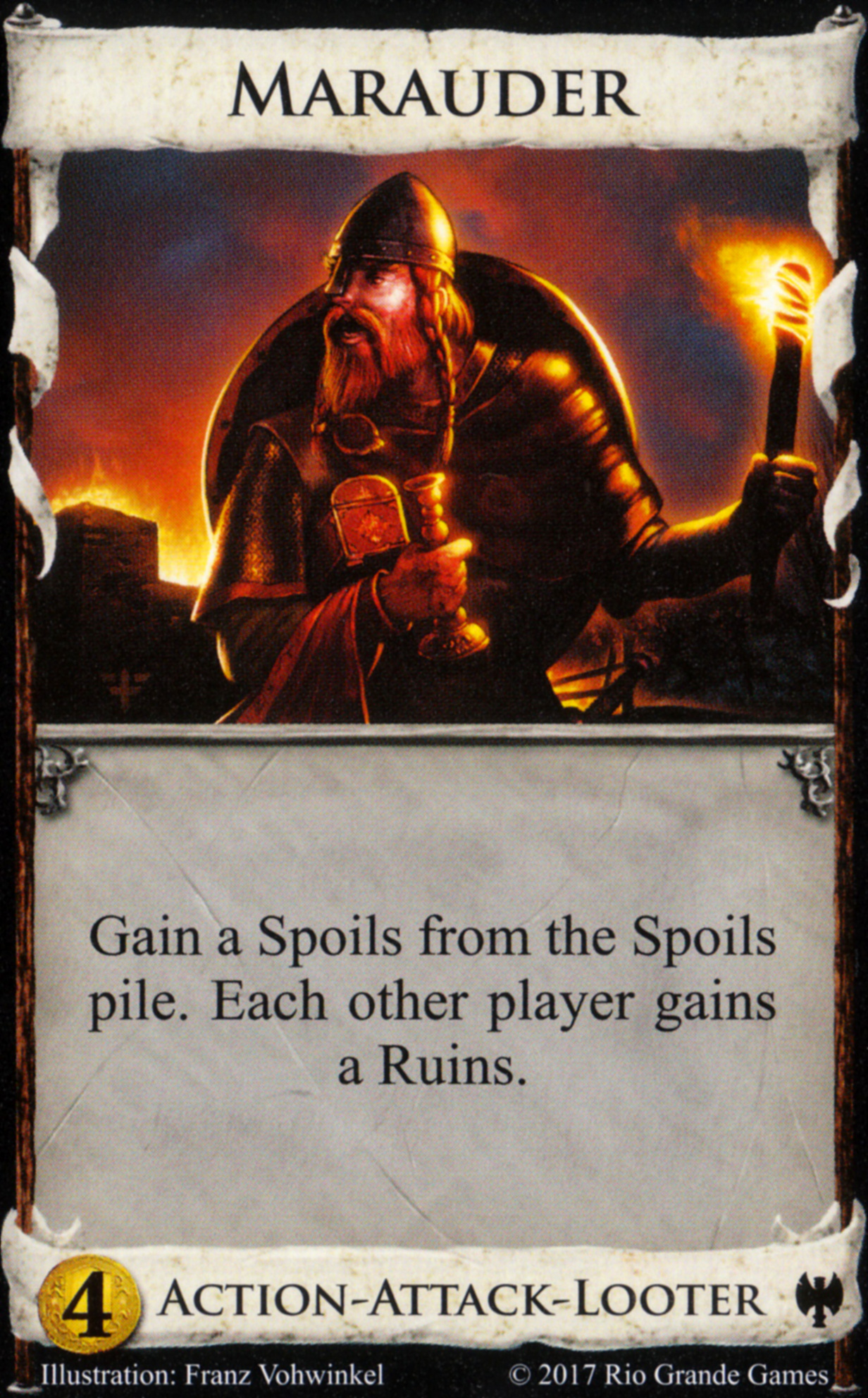

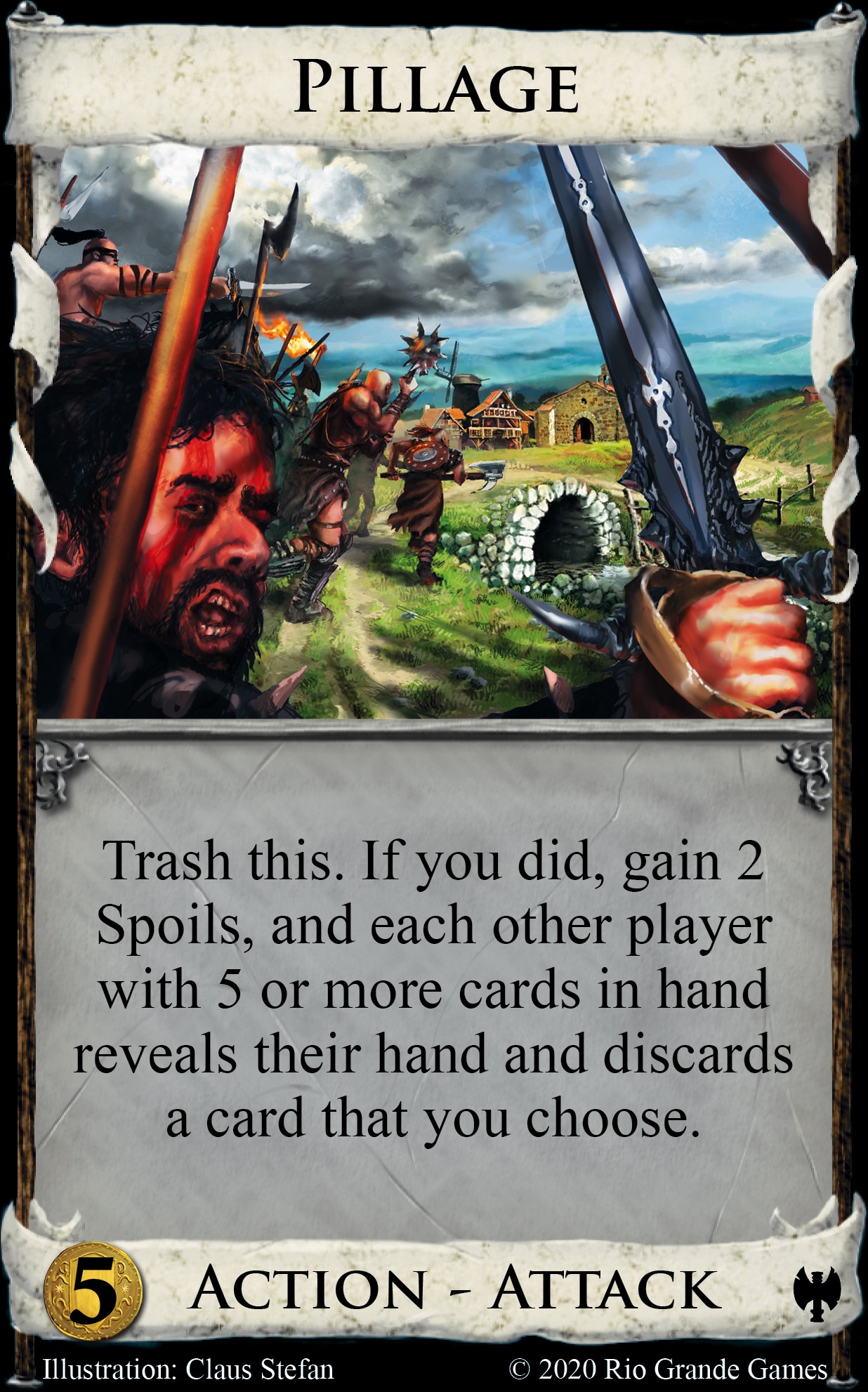
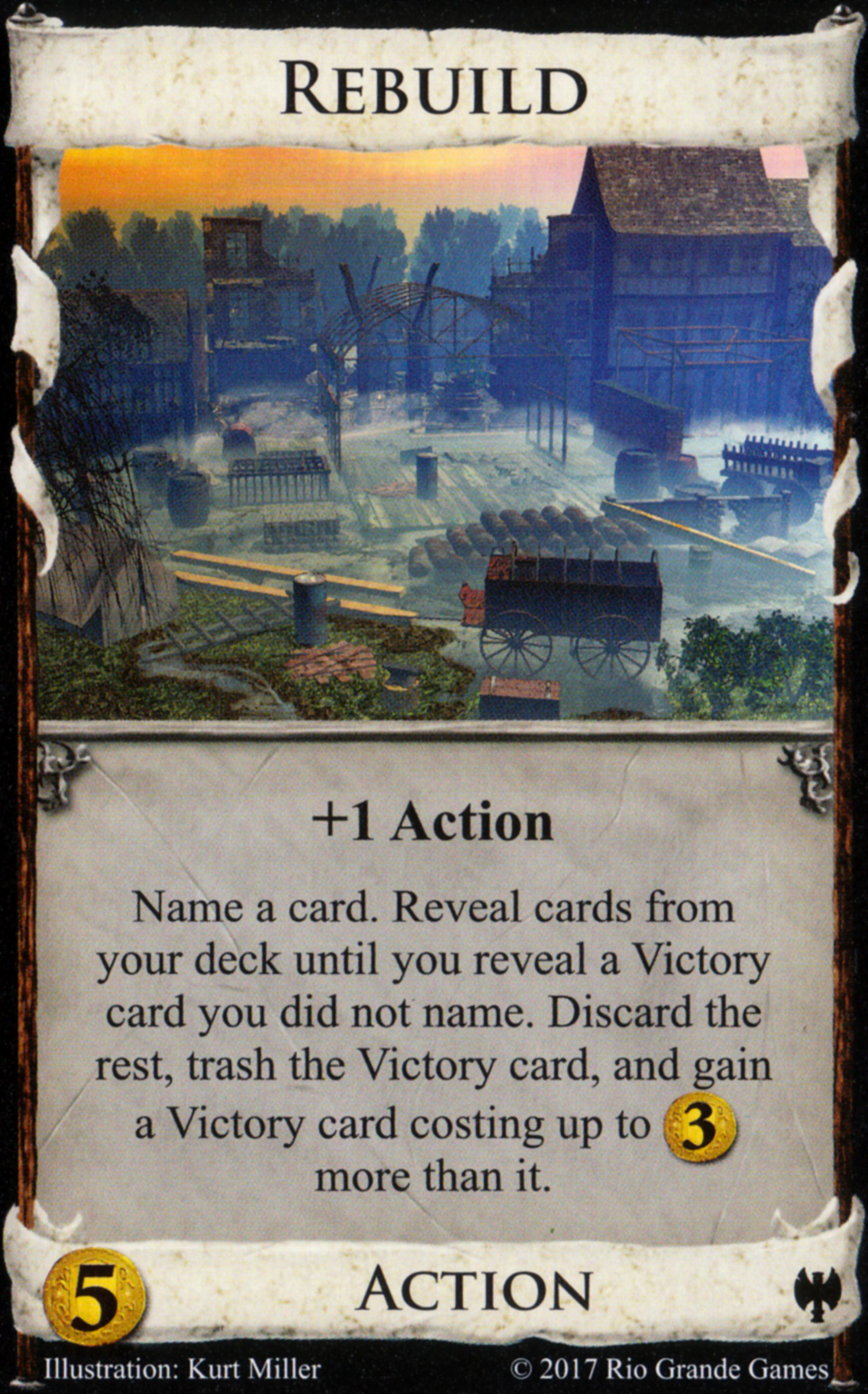
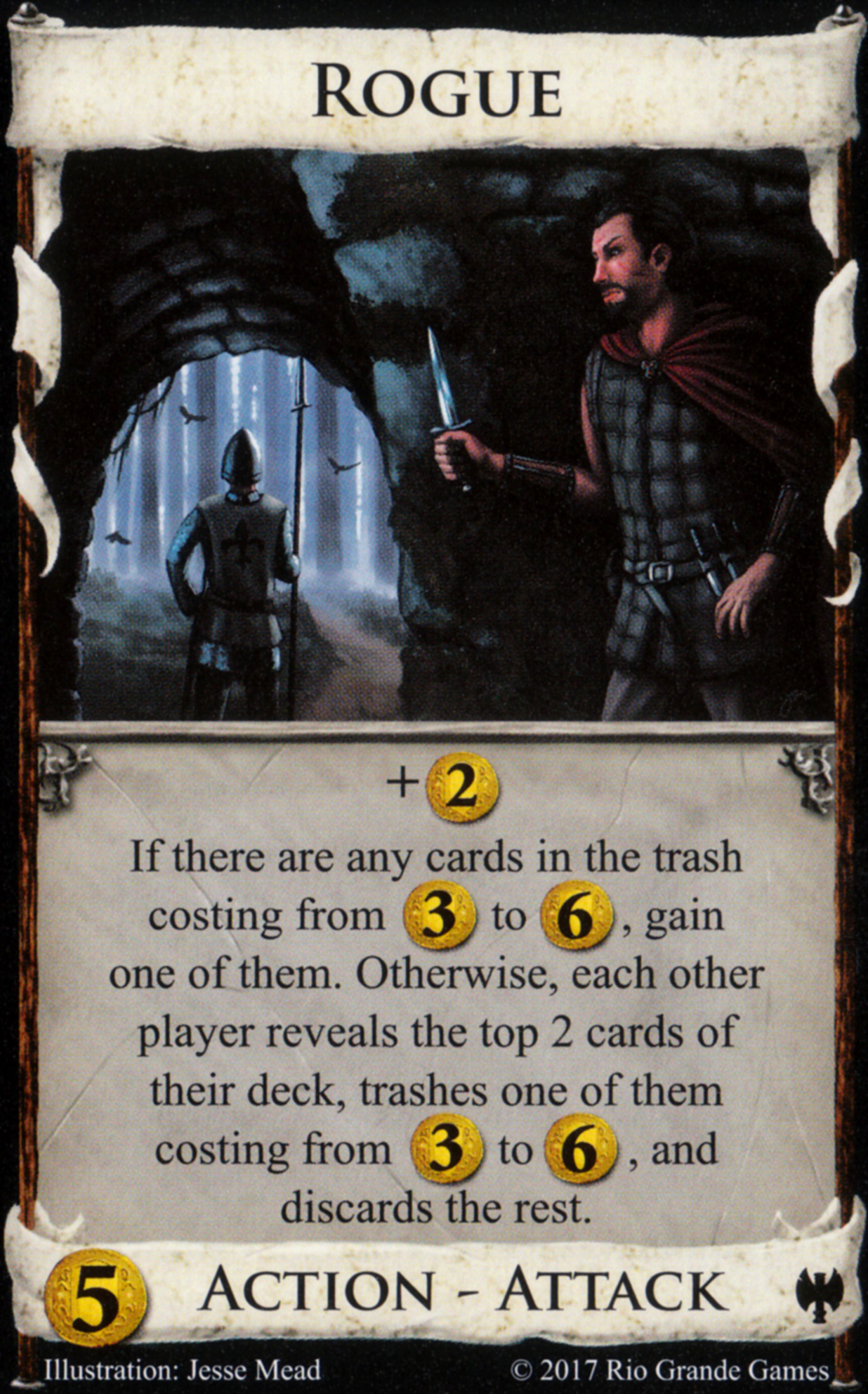


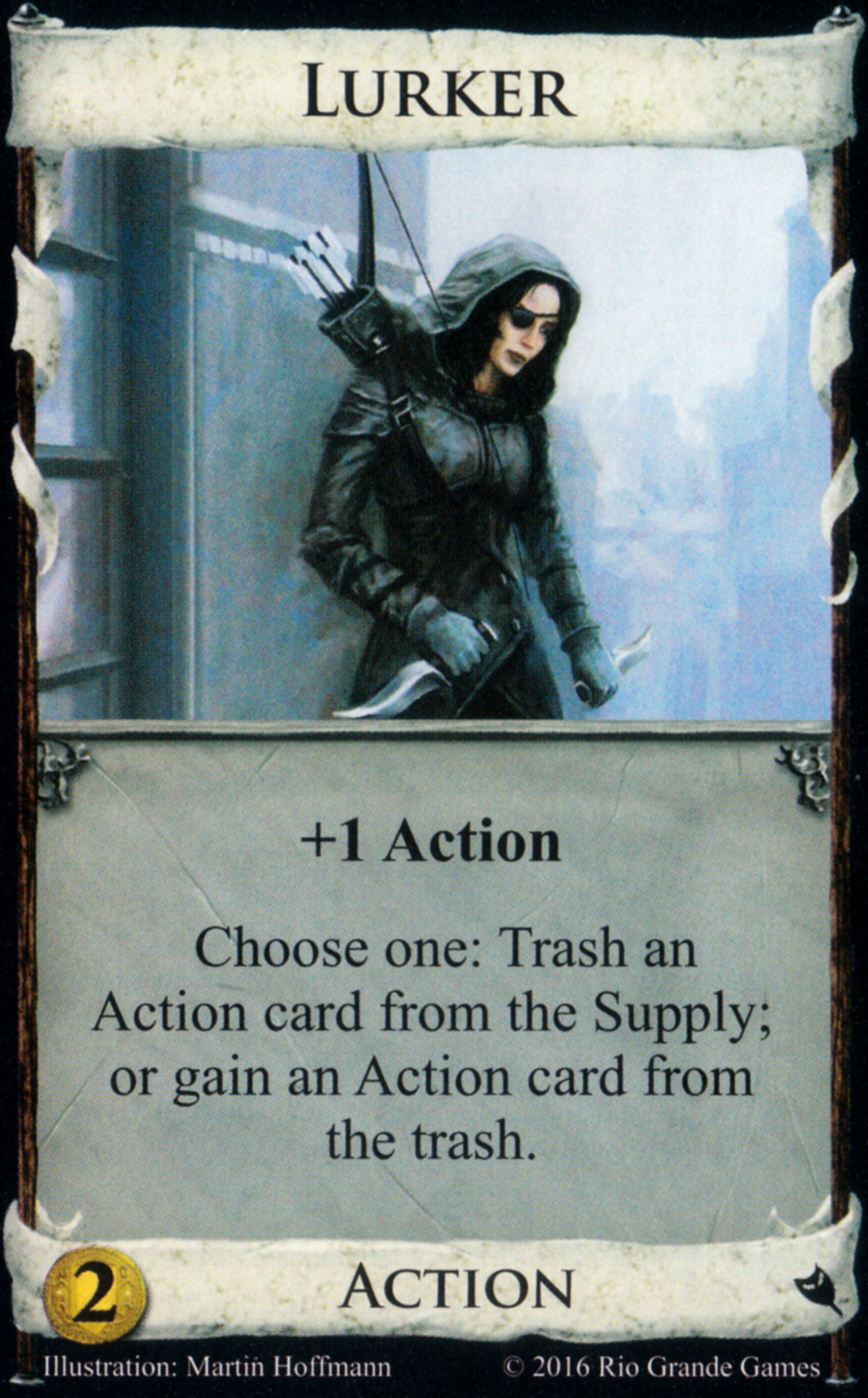

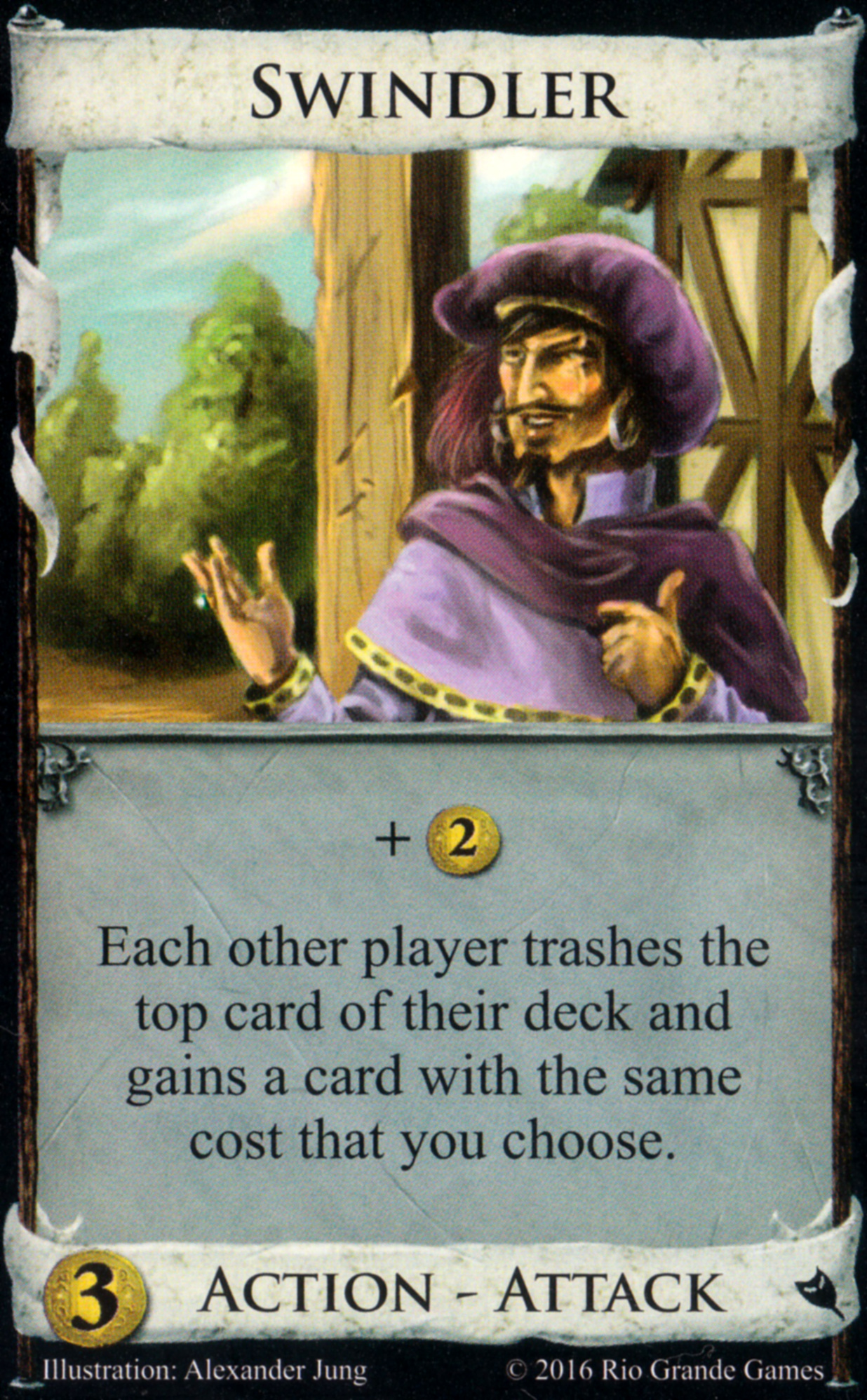

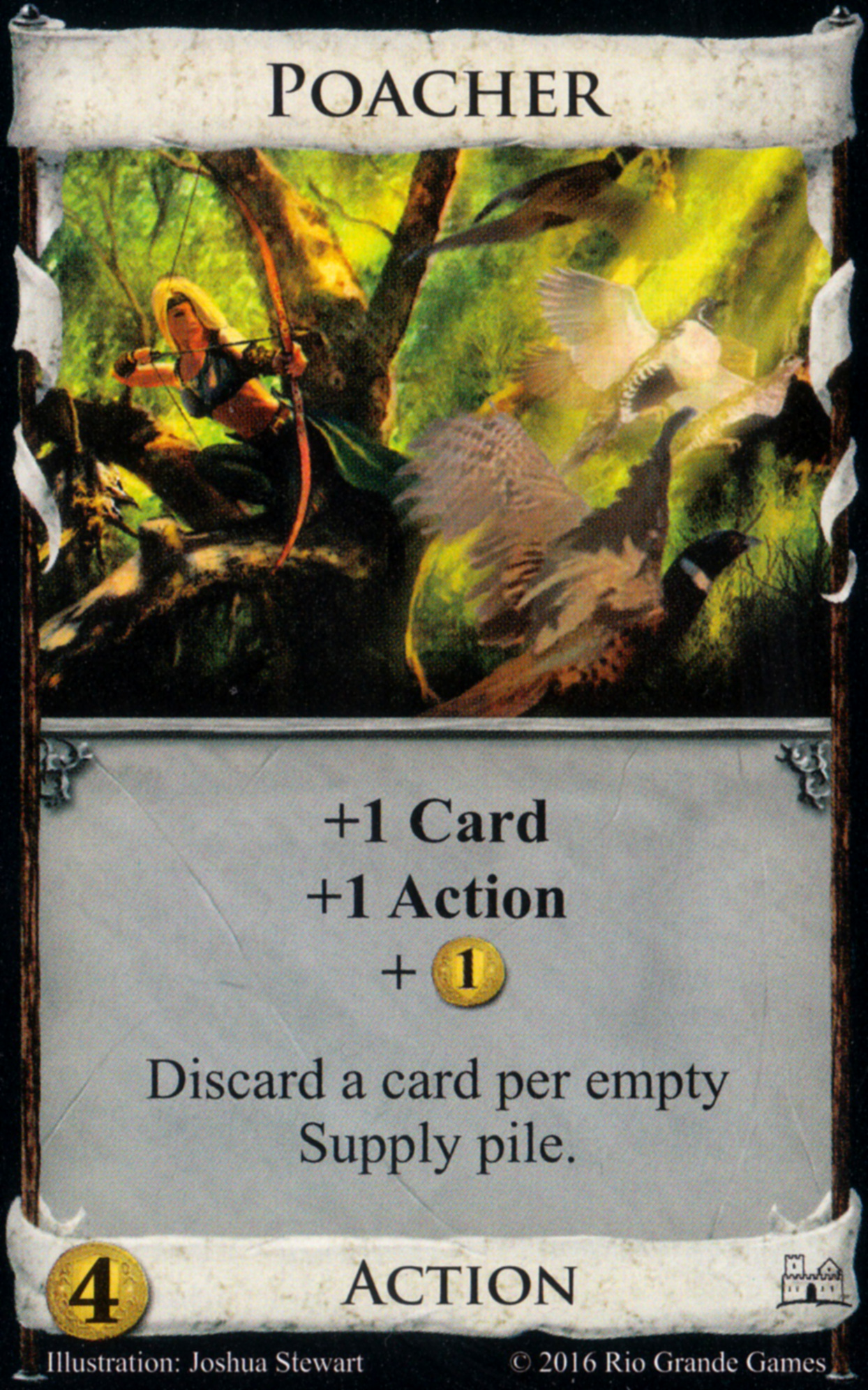
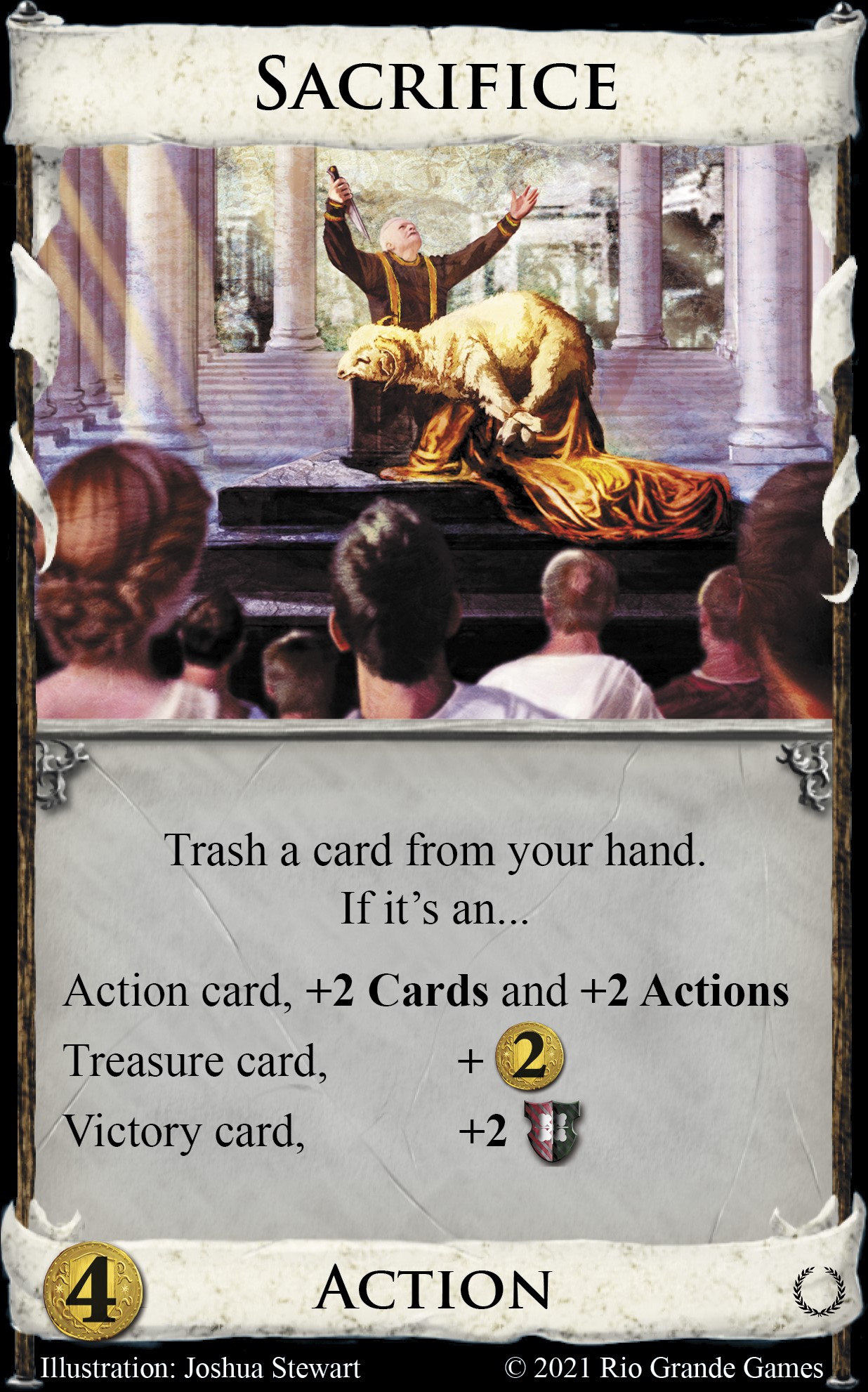
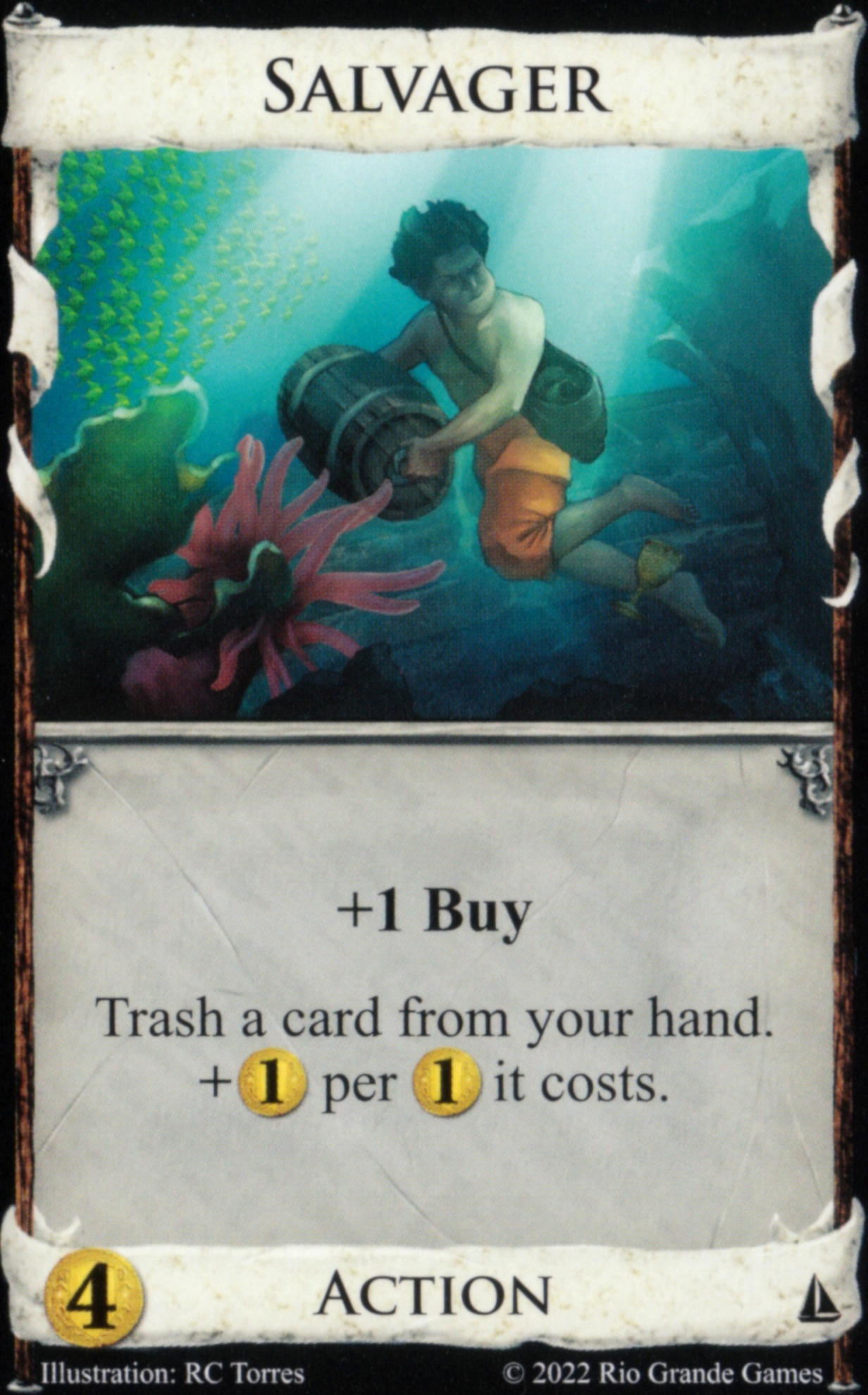
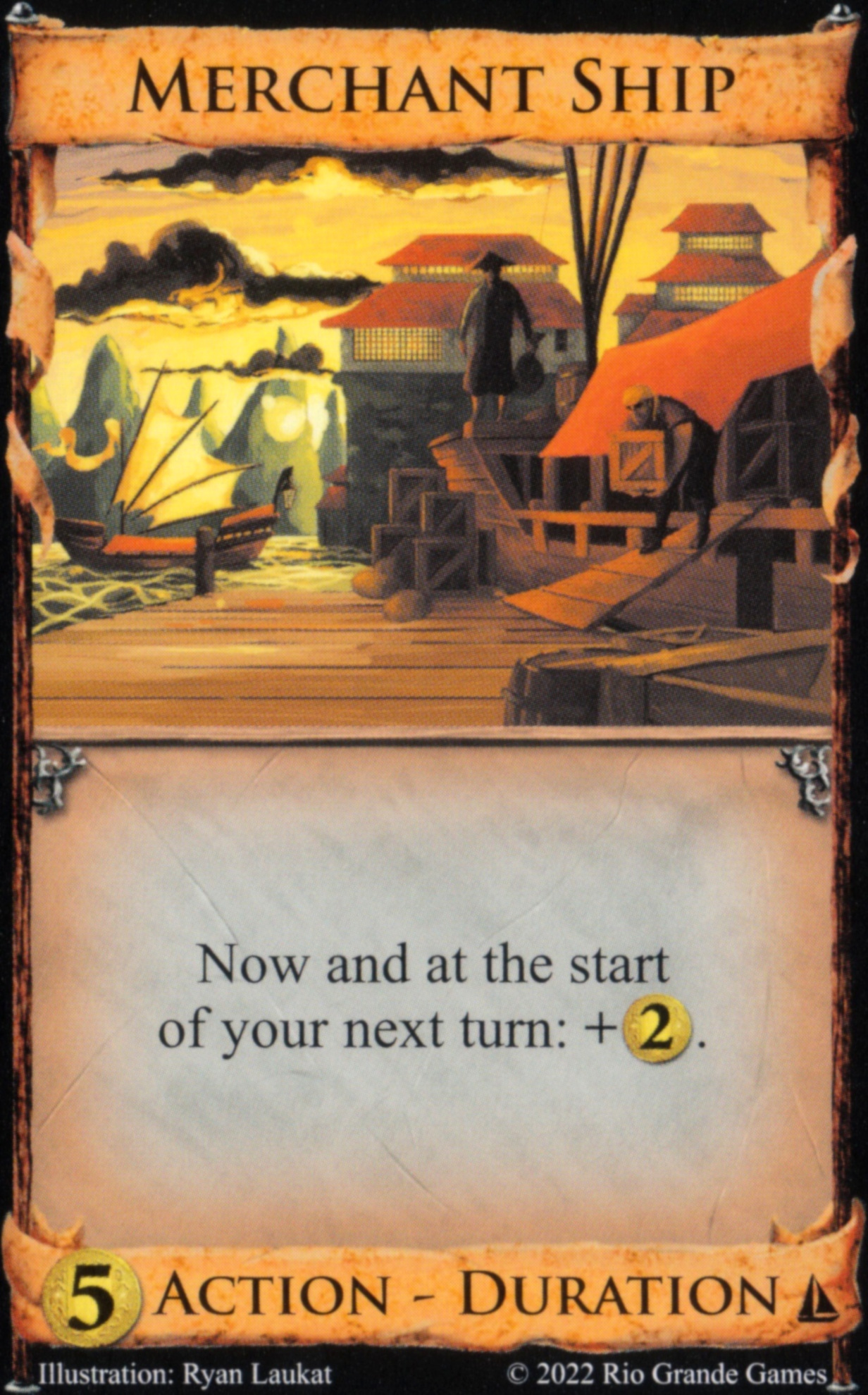
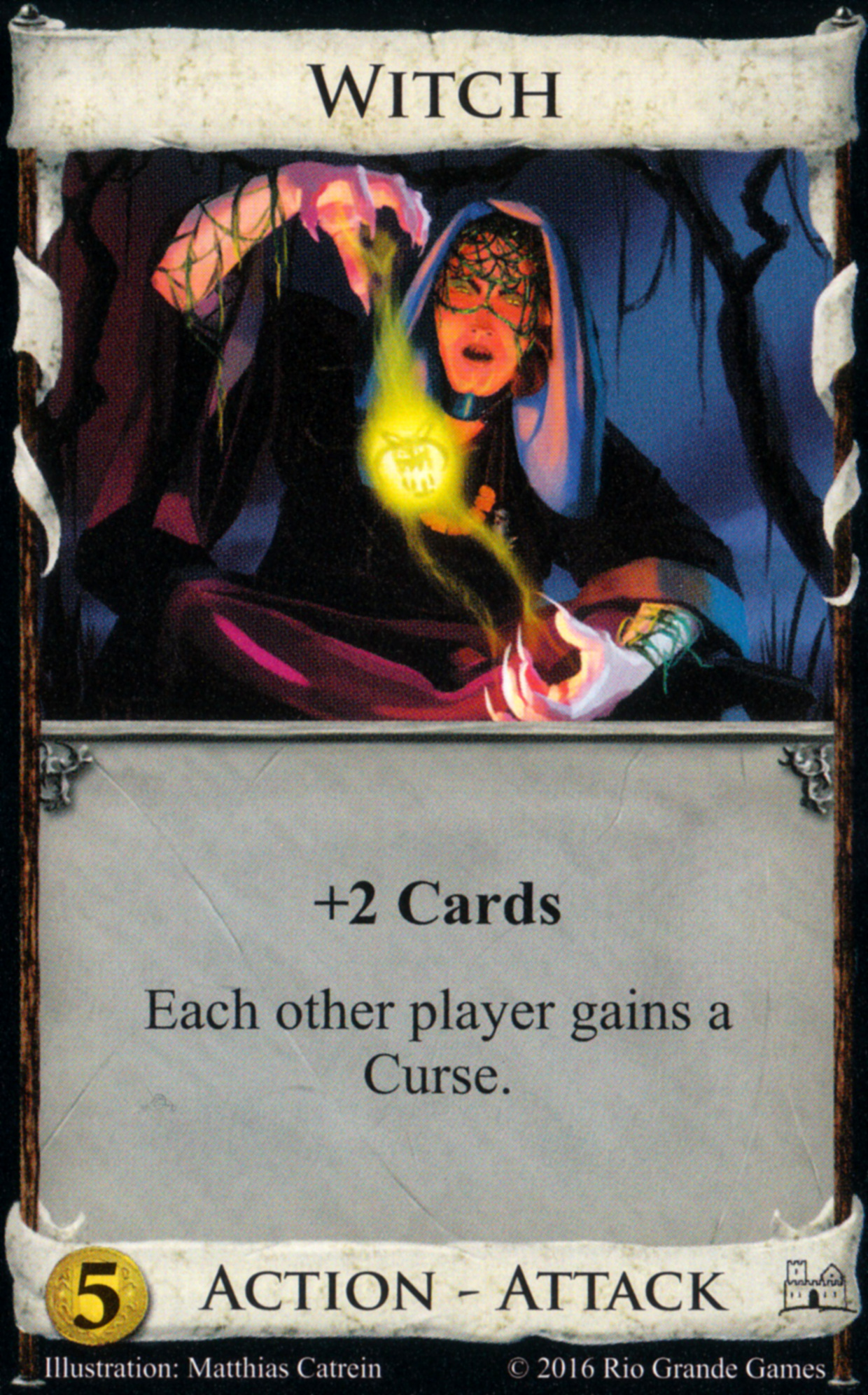
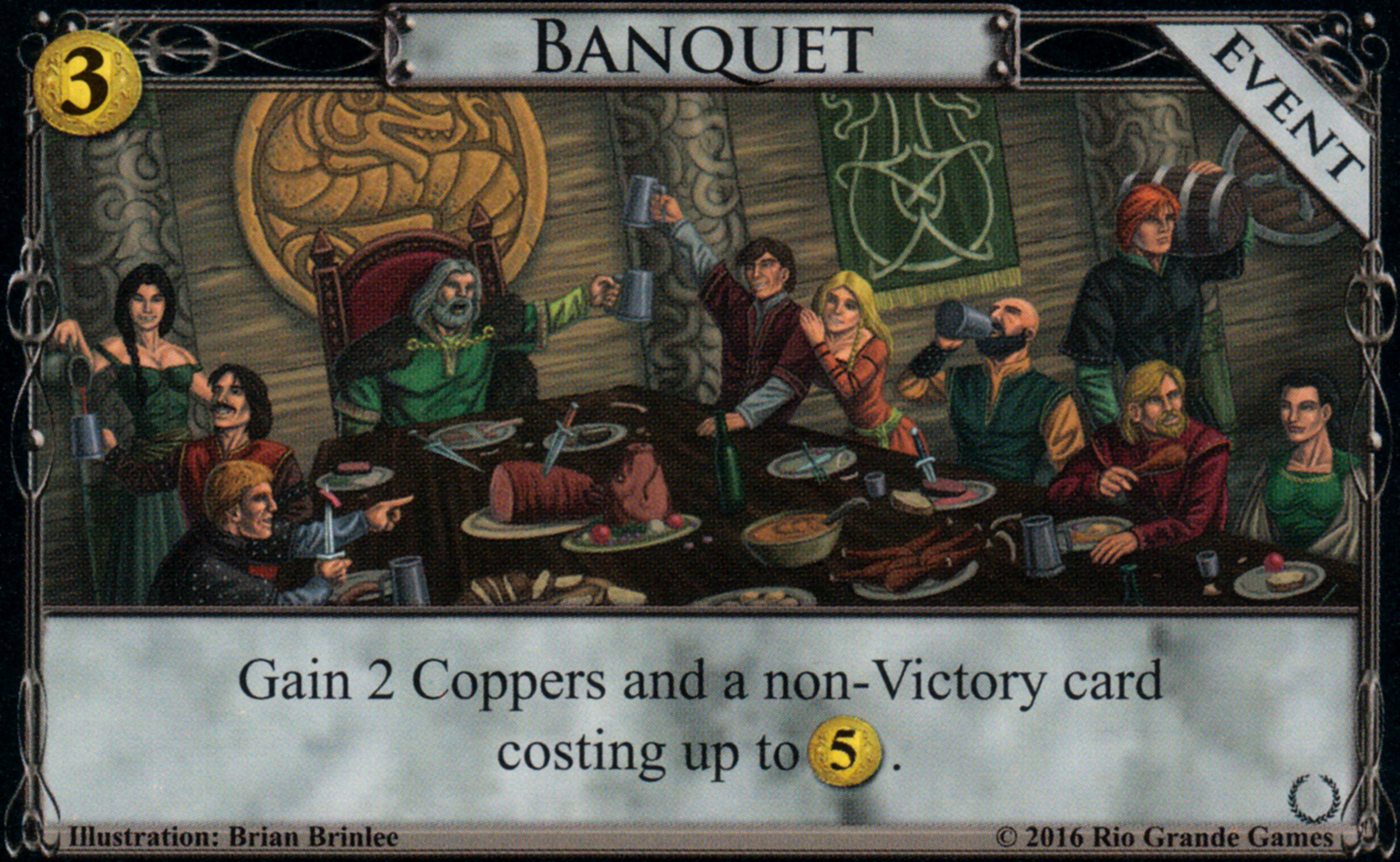
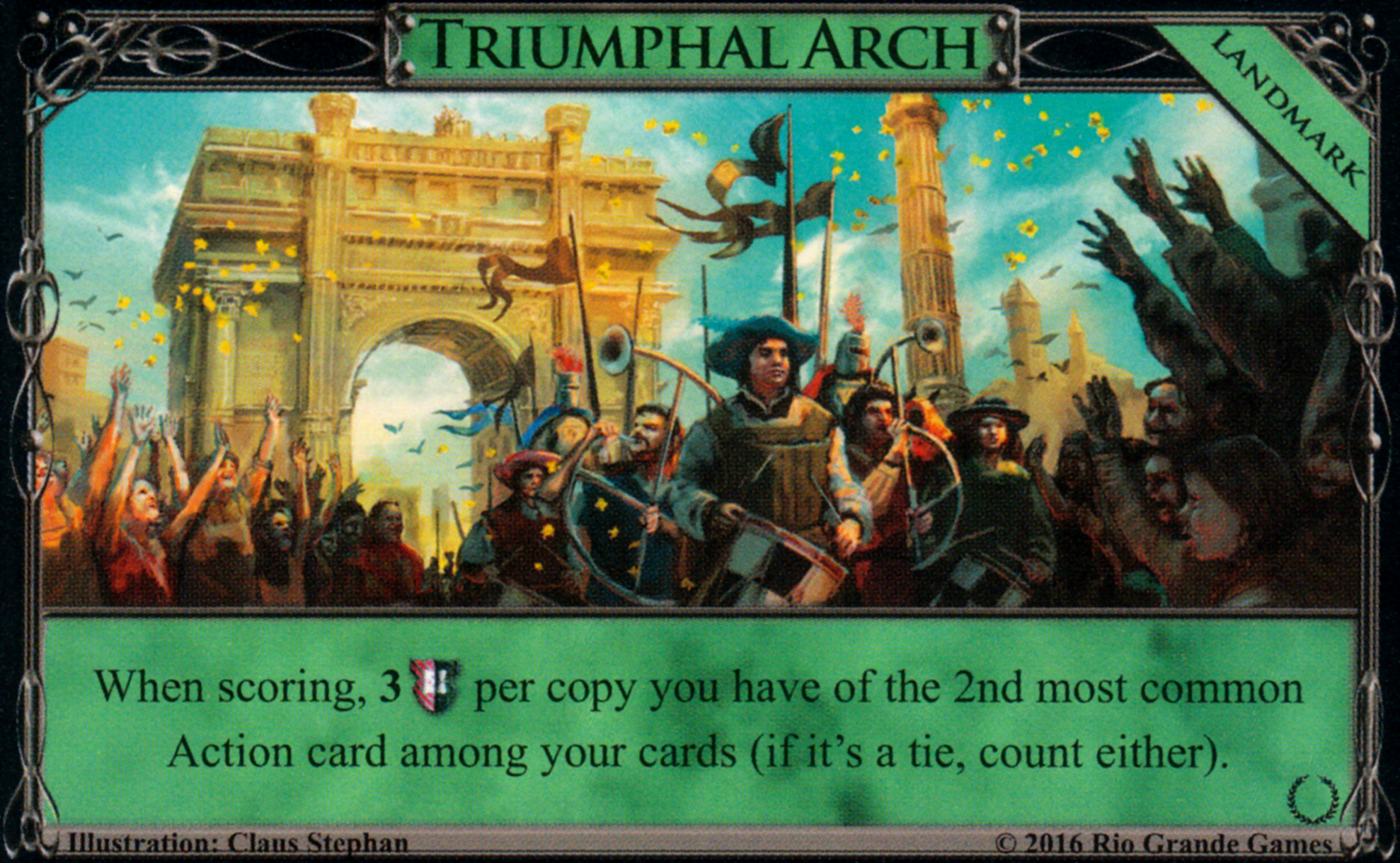


 ]
]
 ?
? you overpaid, take a coin token.
you overpaid, take a coin token. if it gives
if it gives  if it gives
if it gives  .
. for
for 
